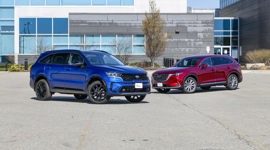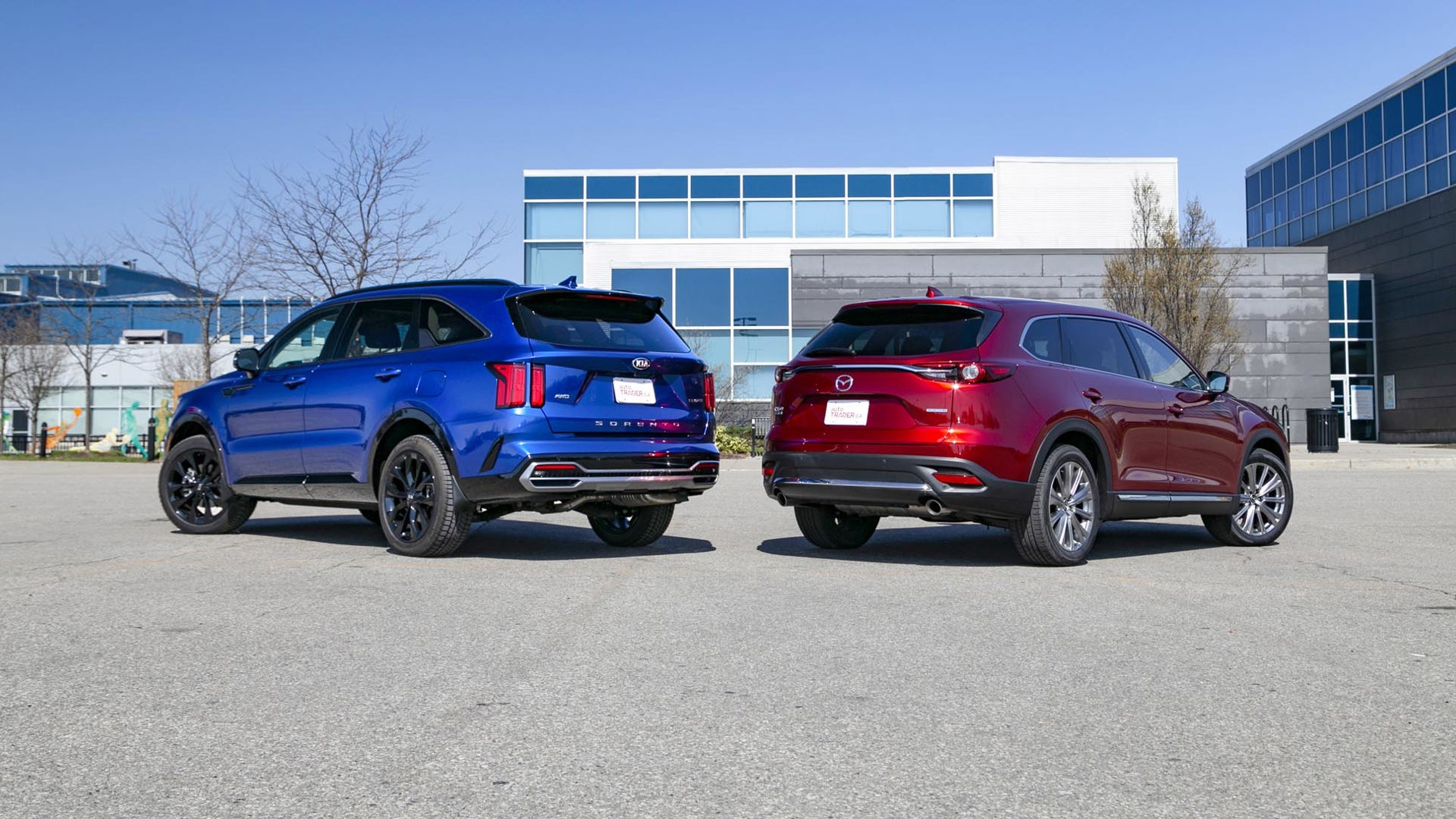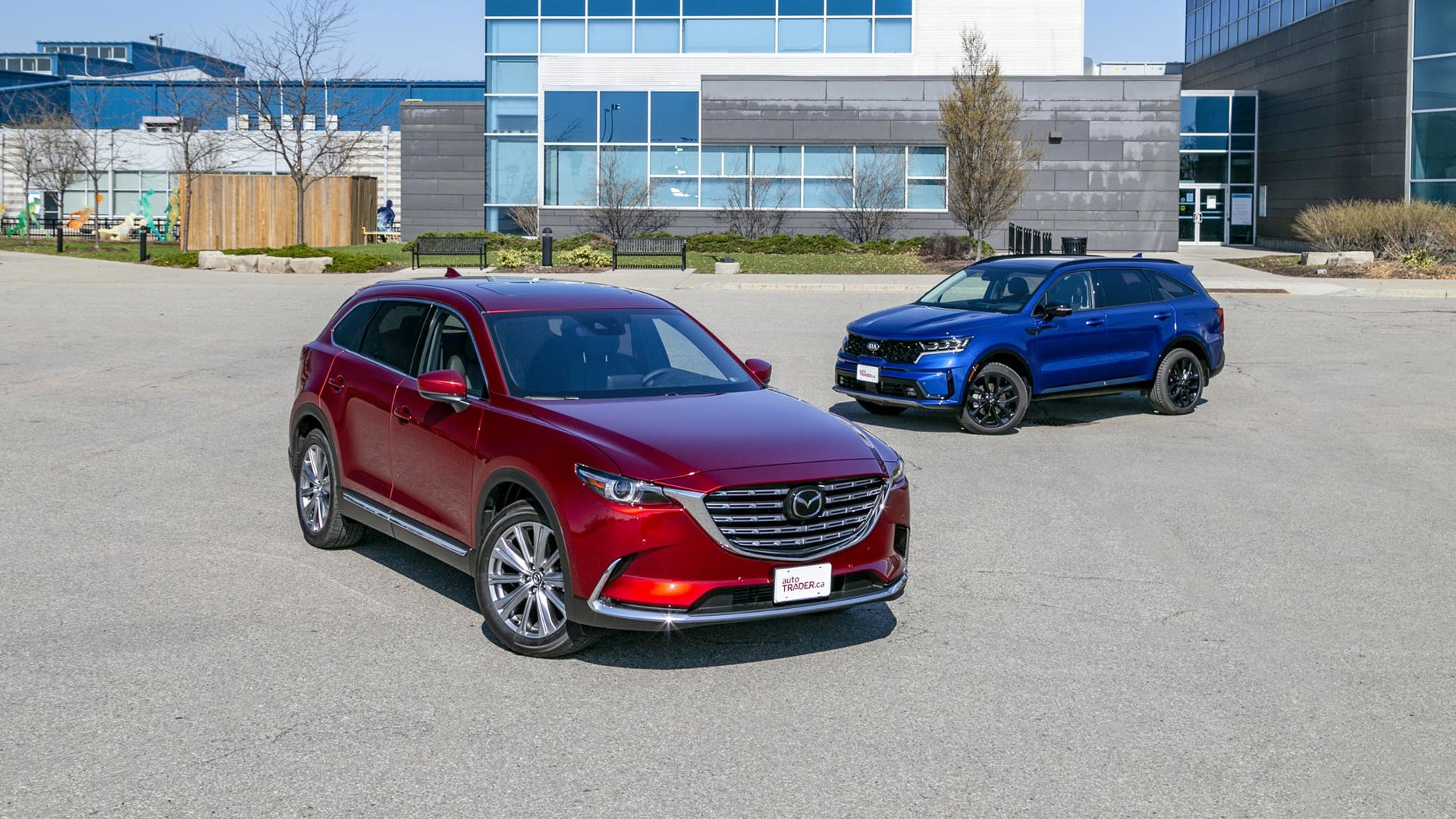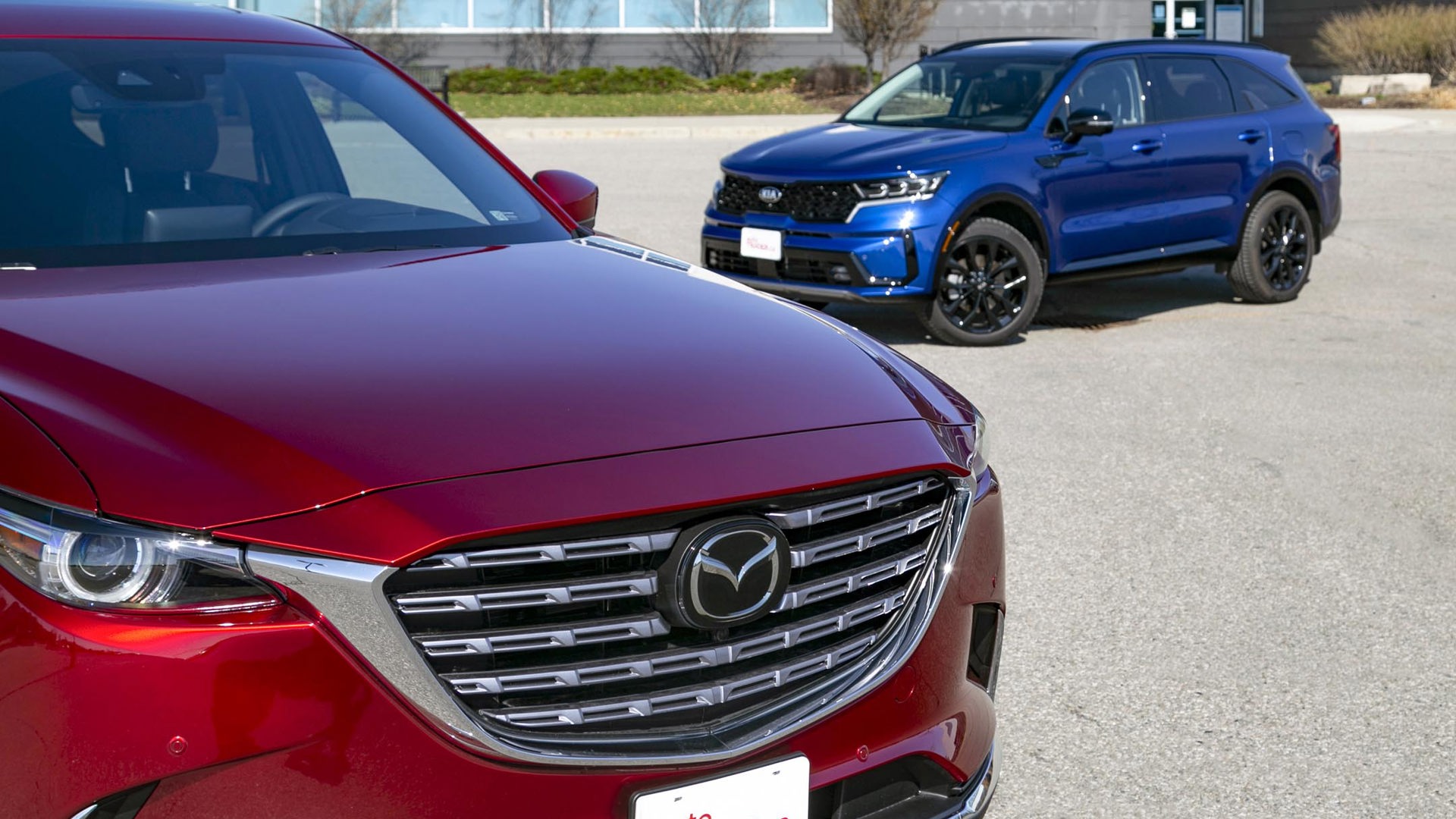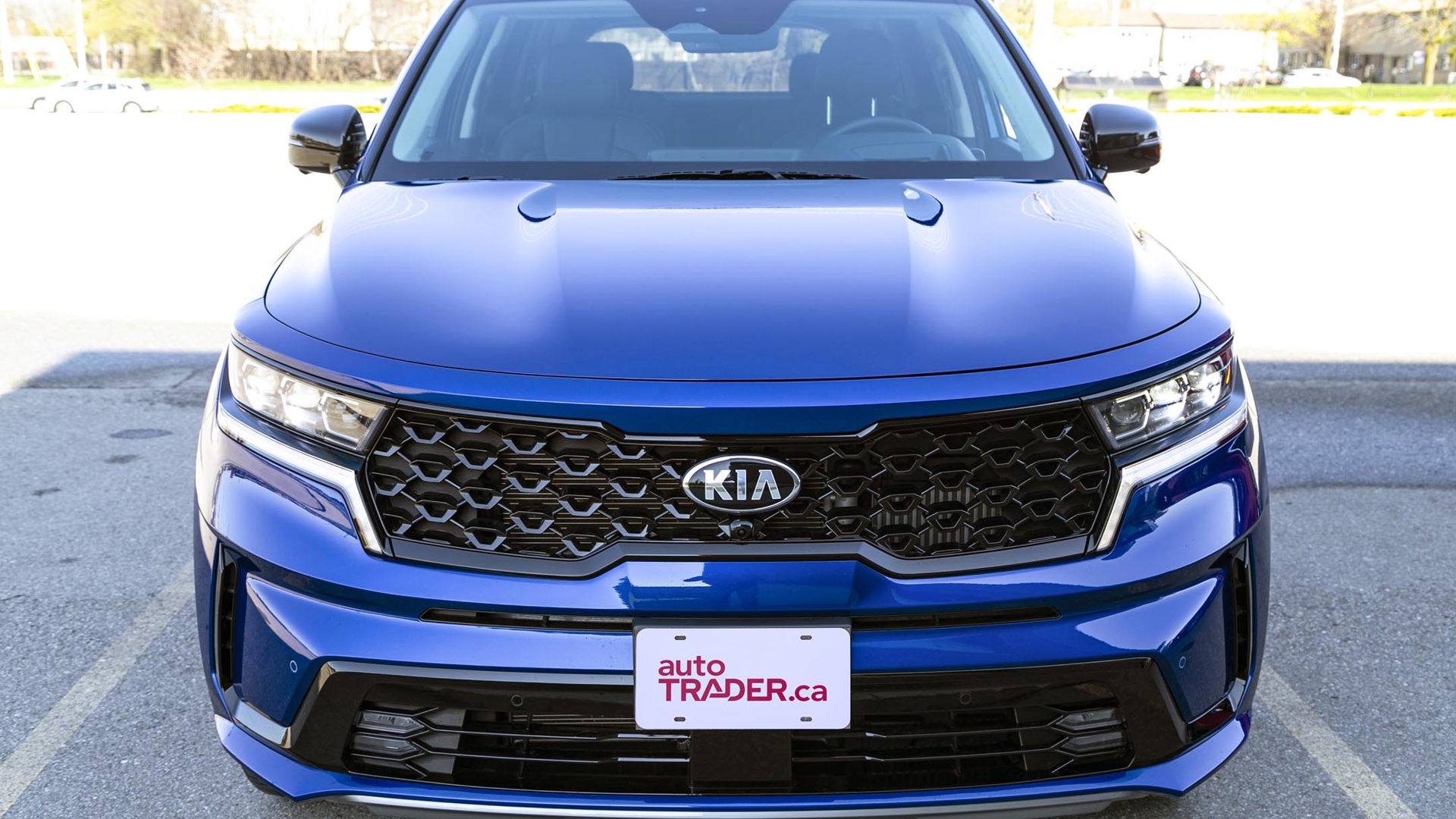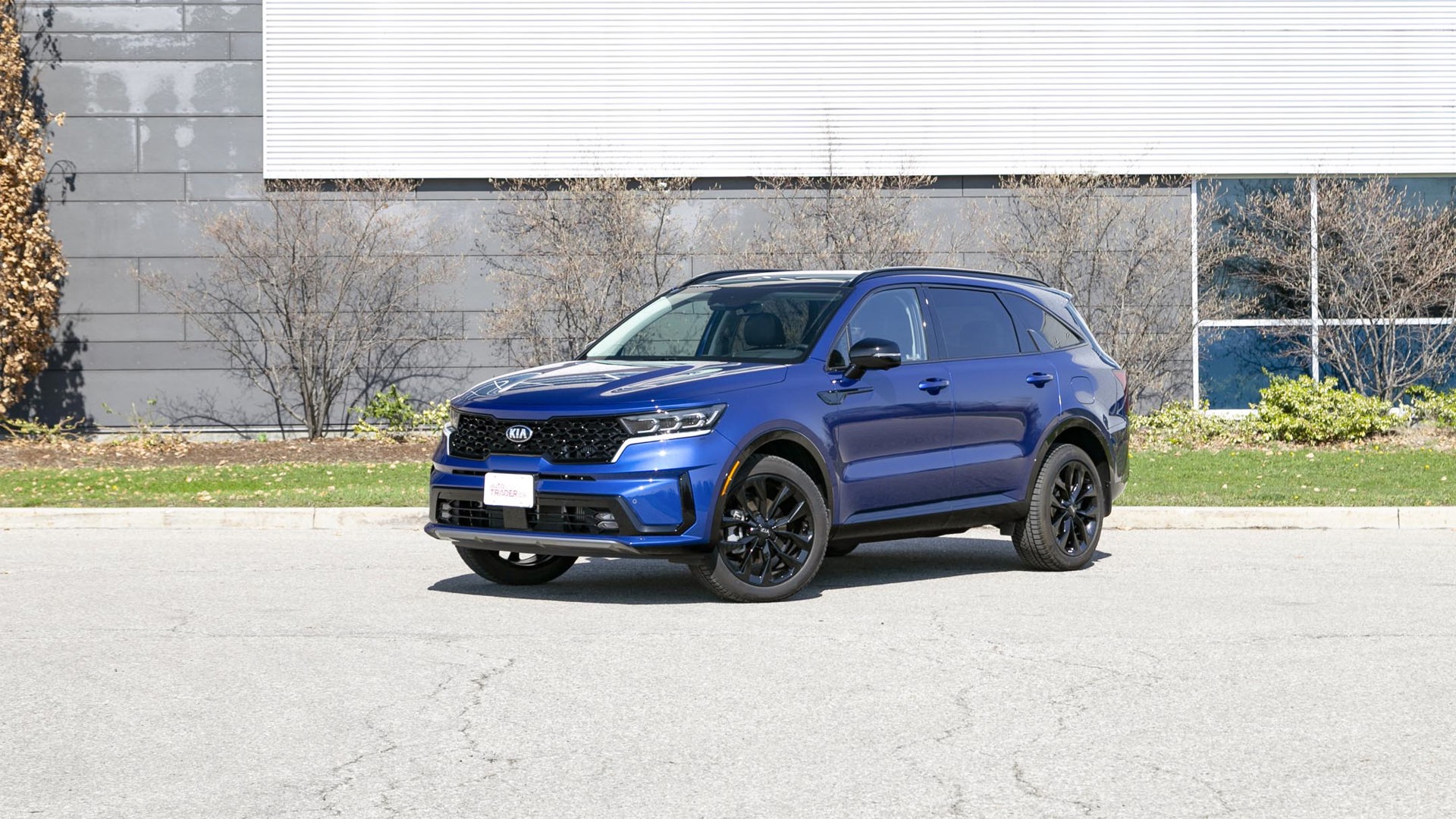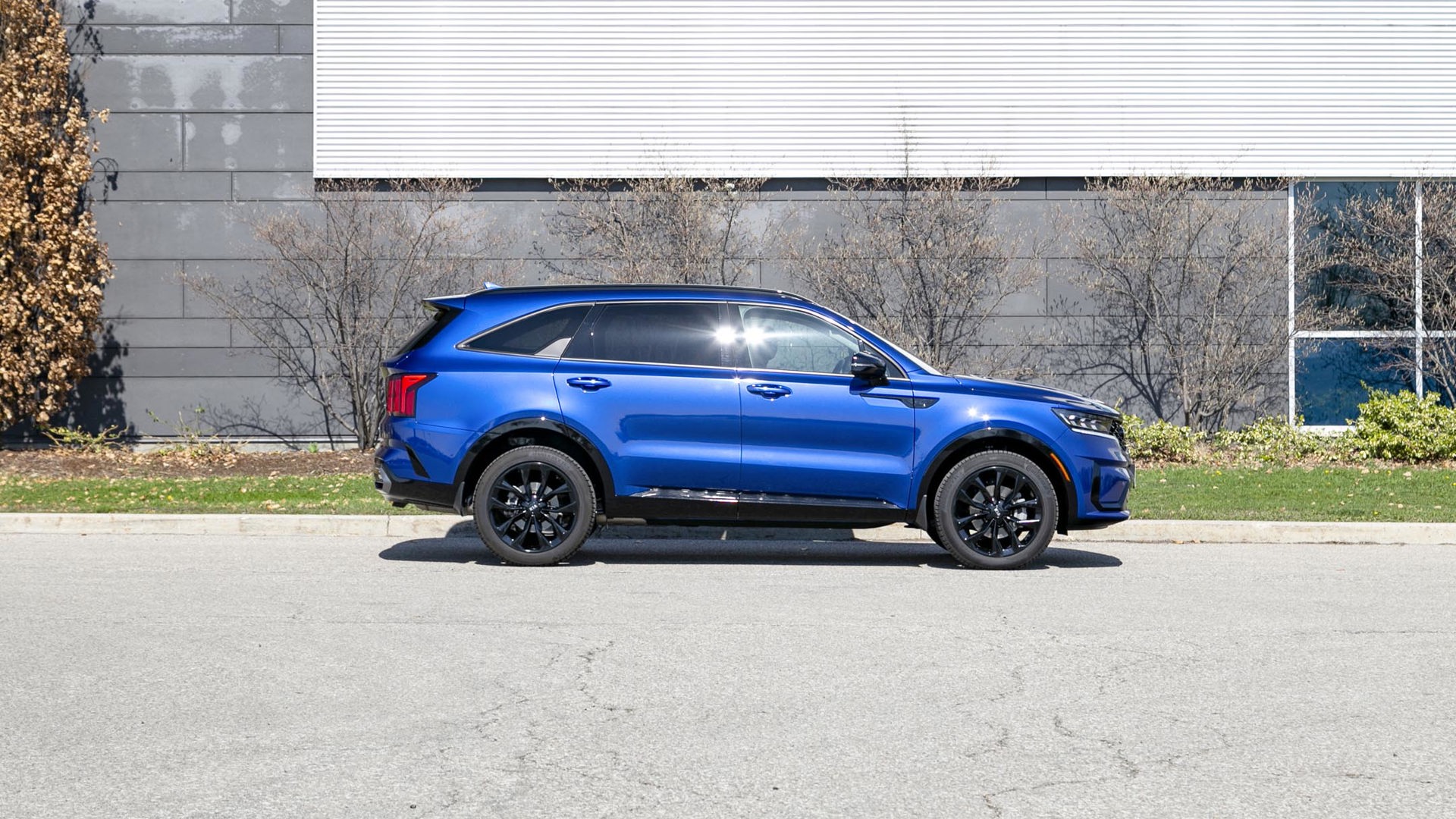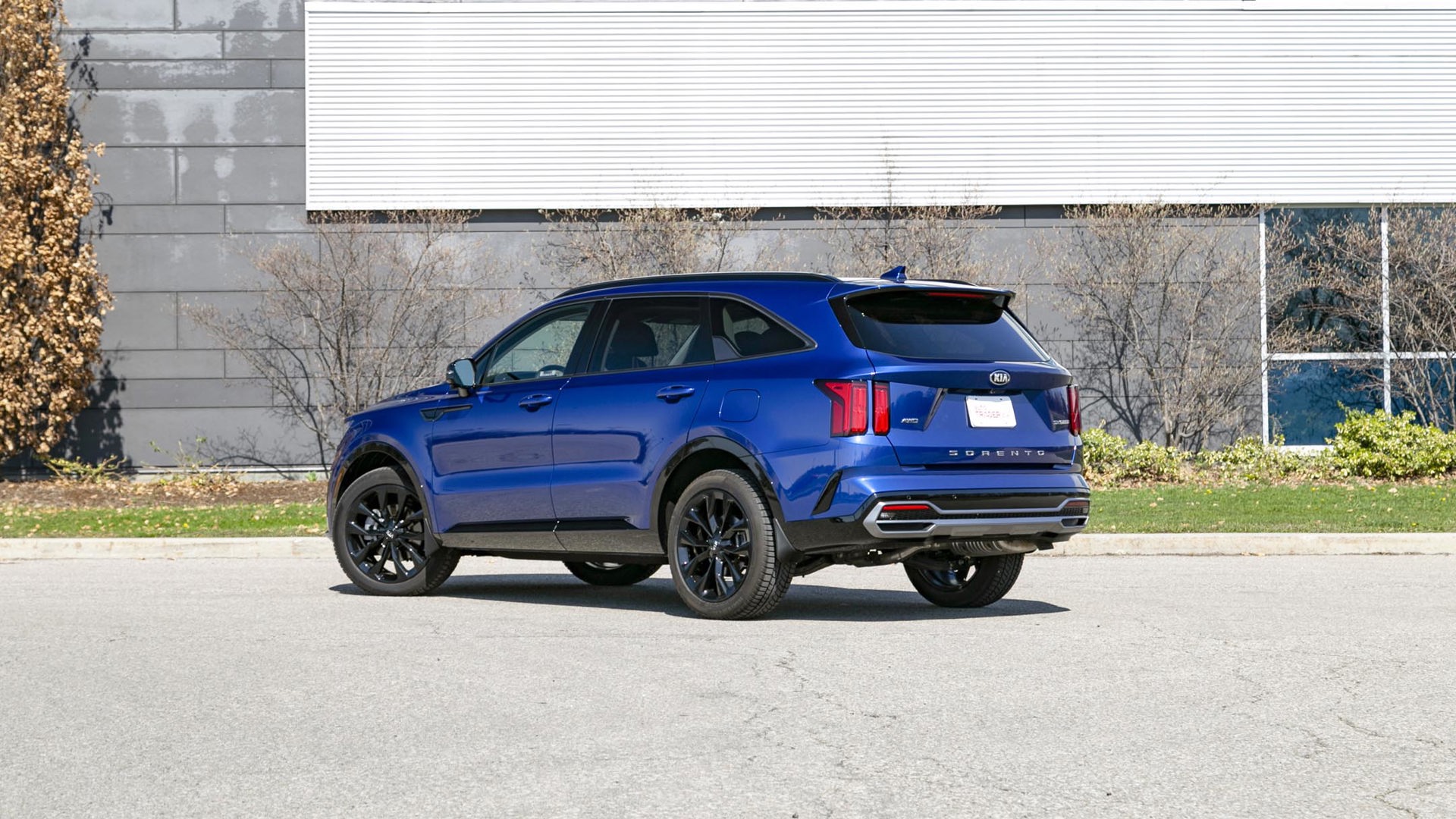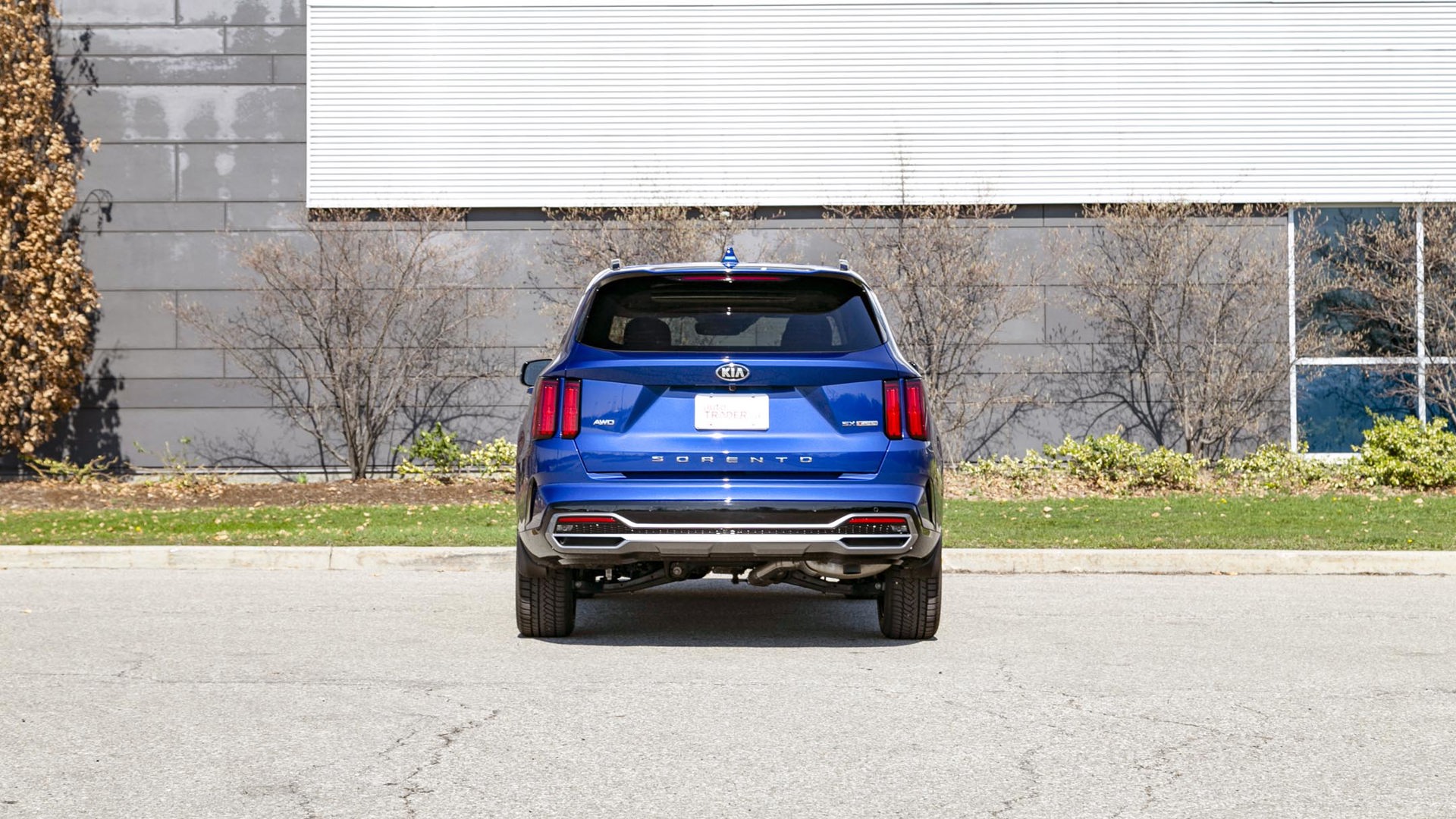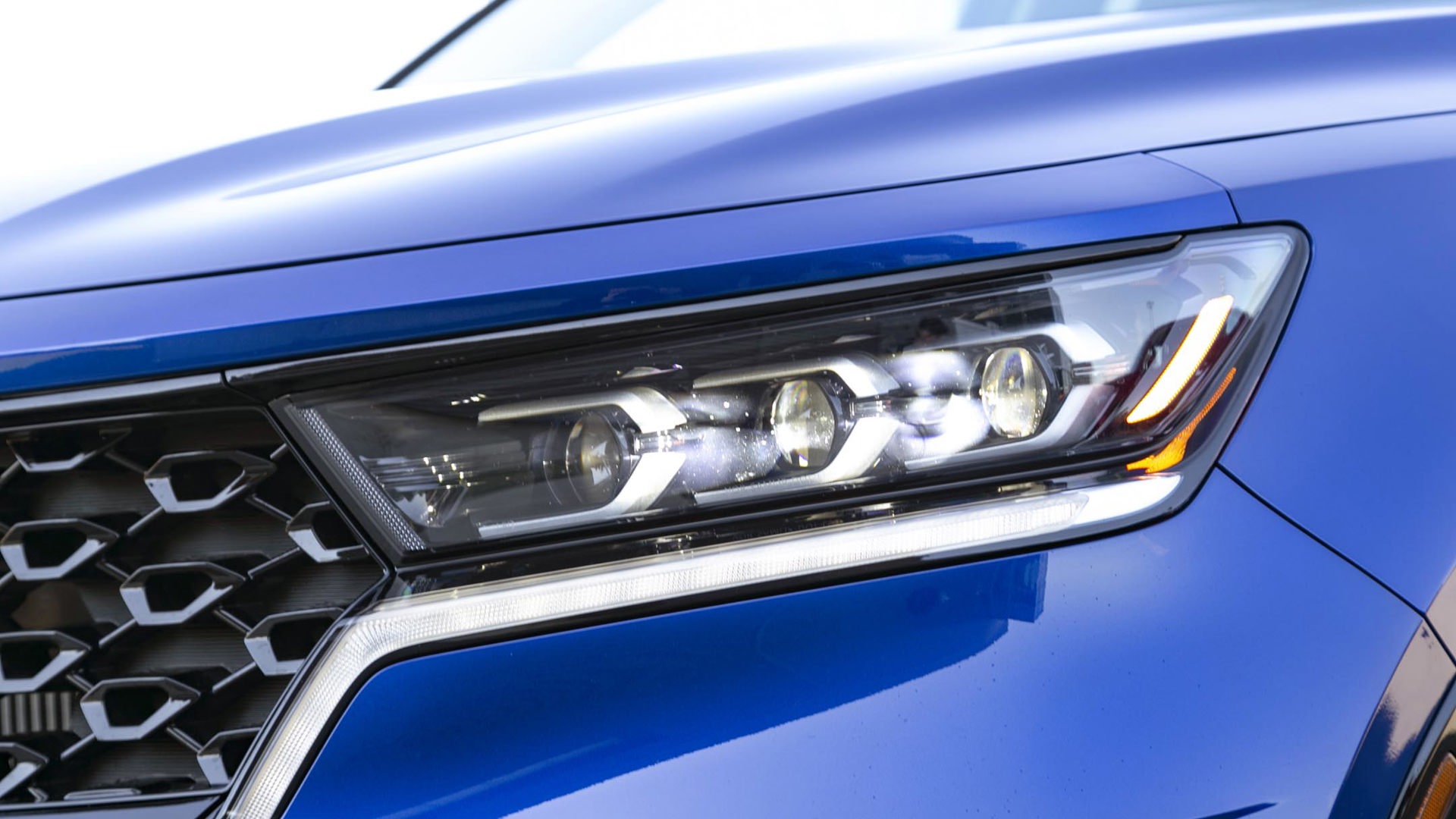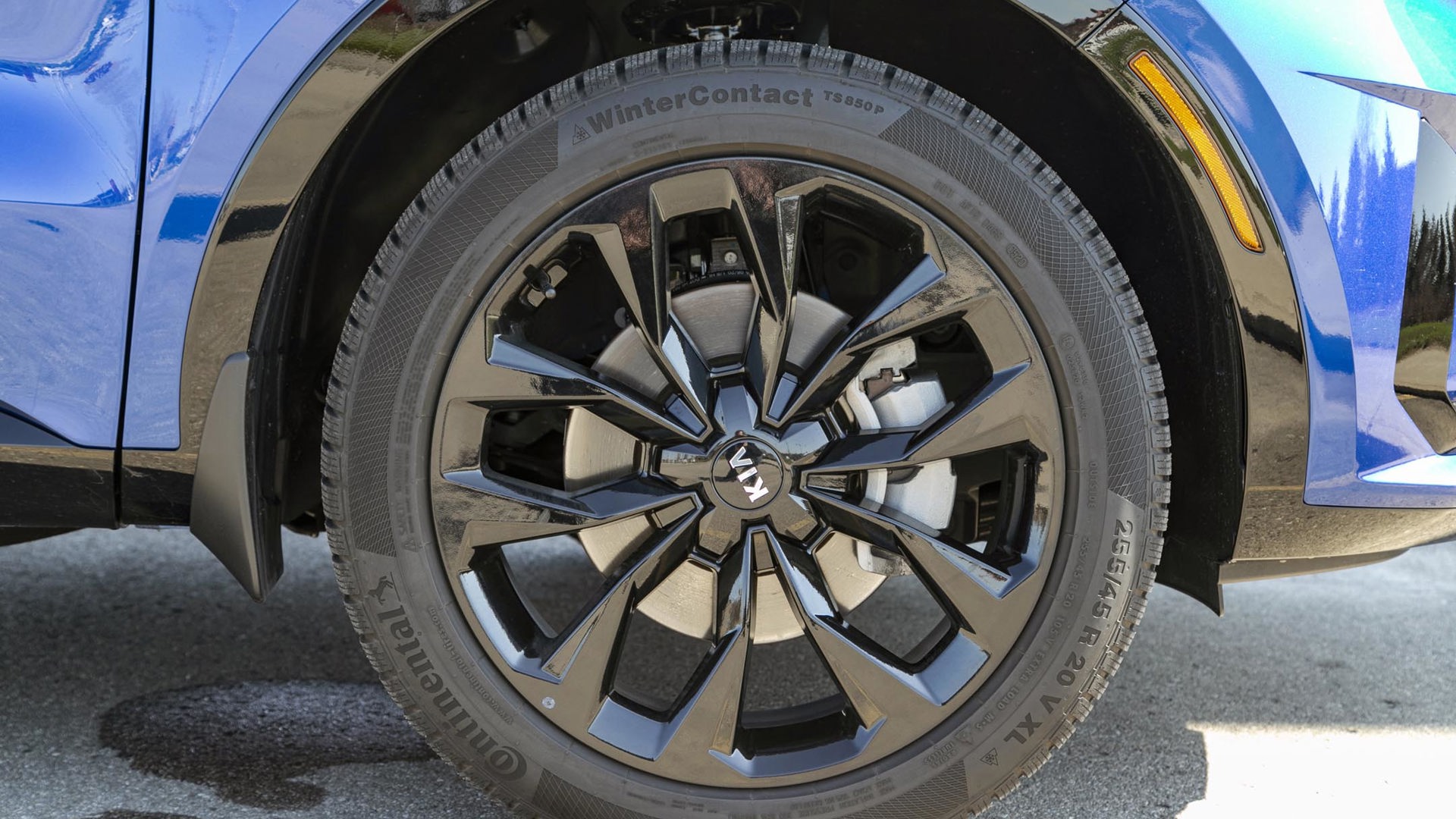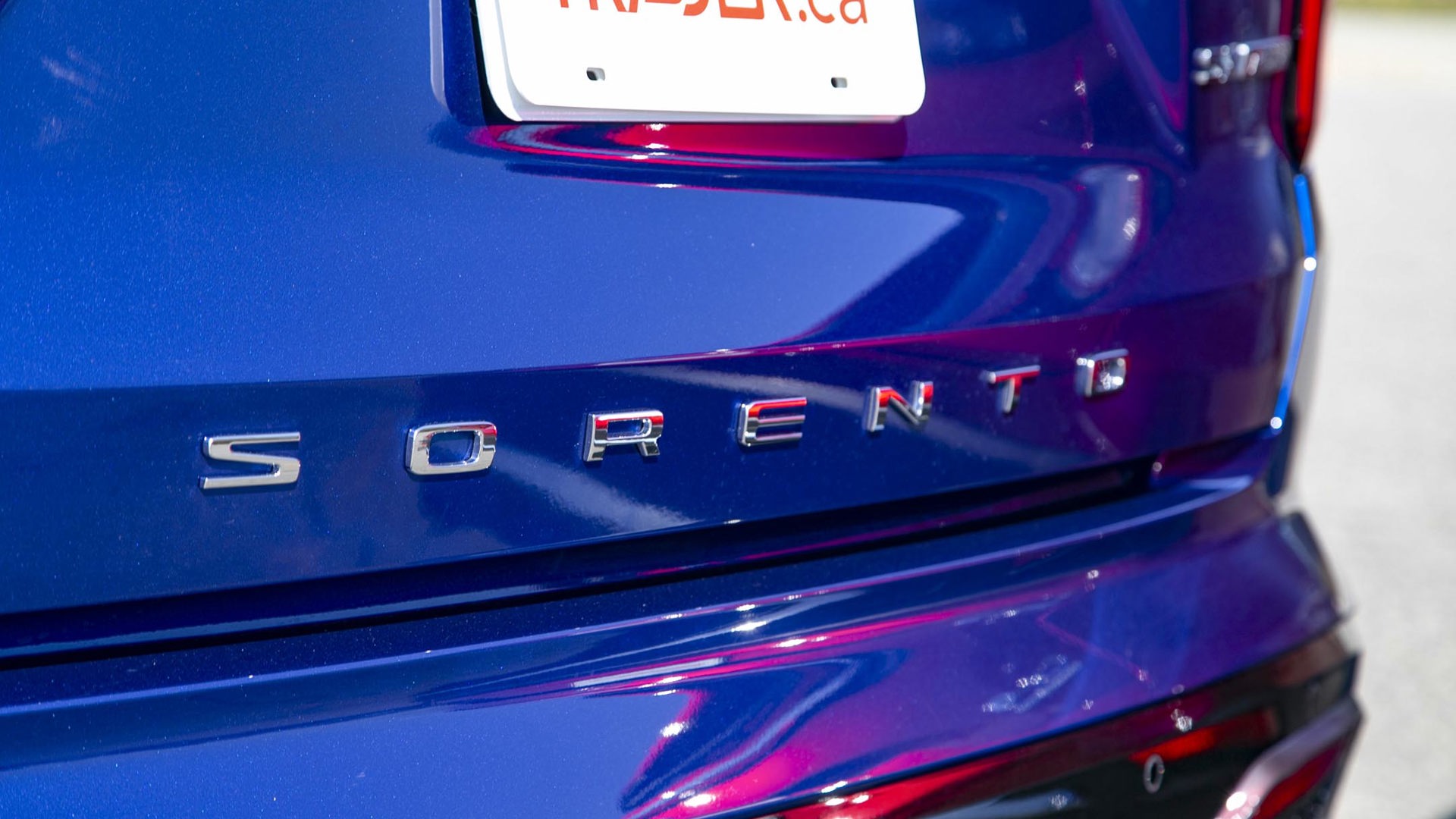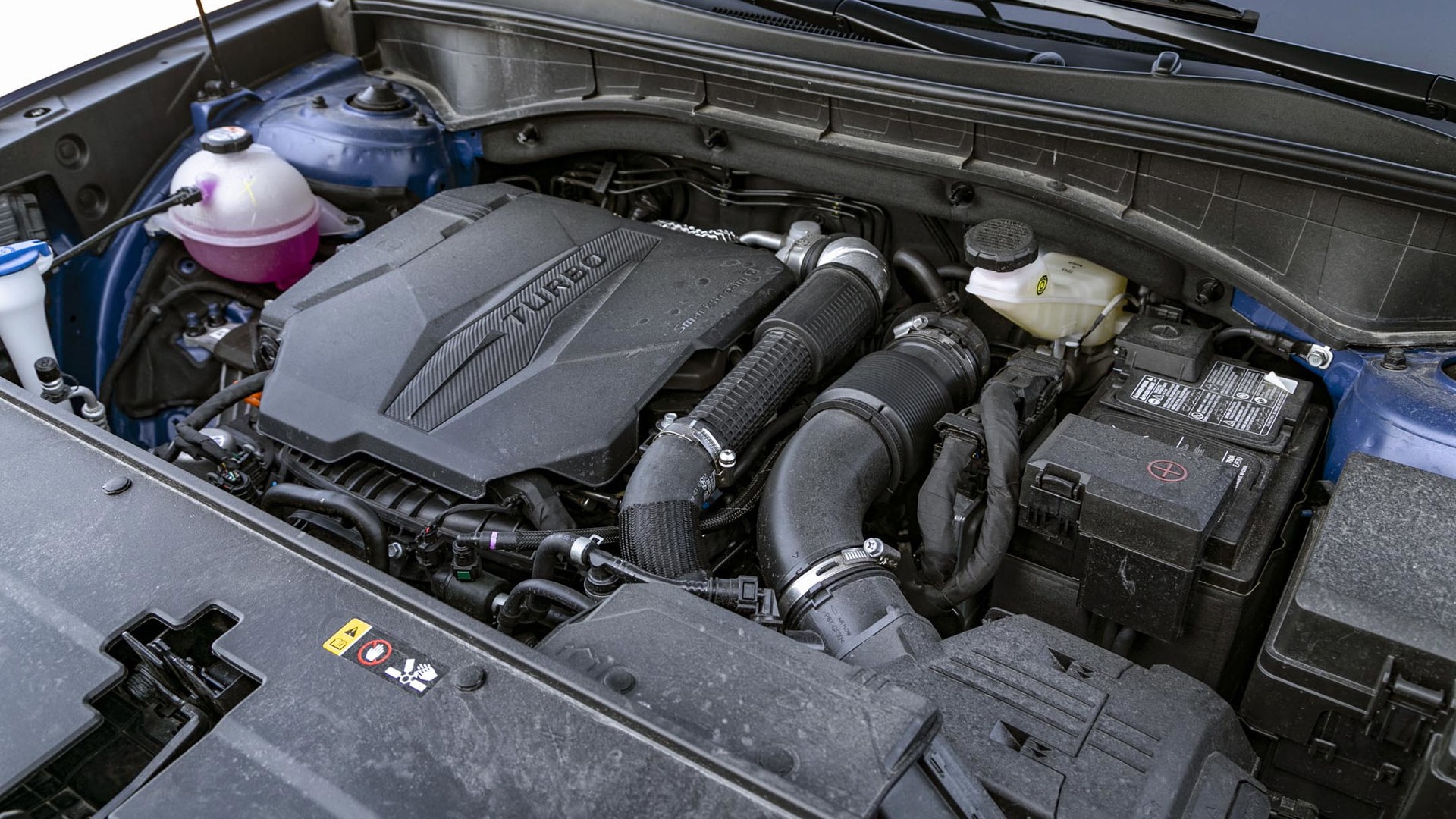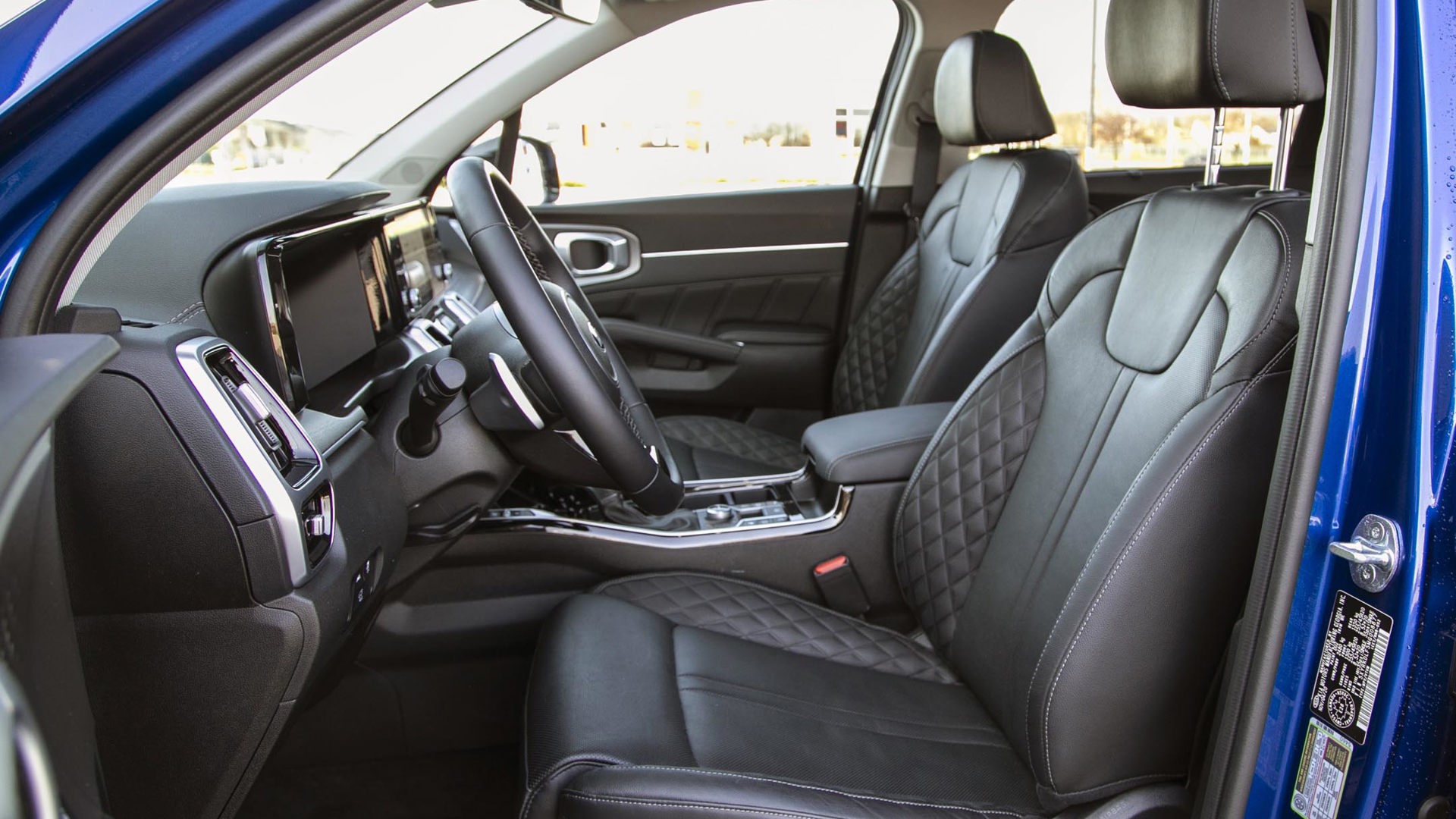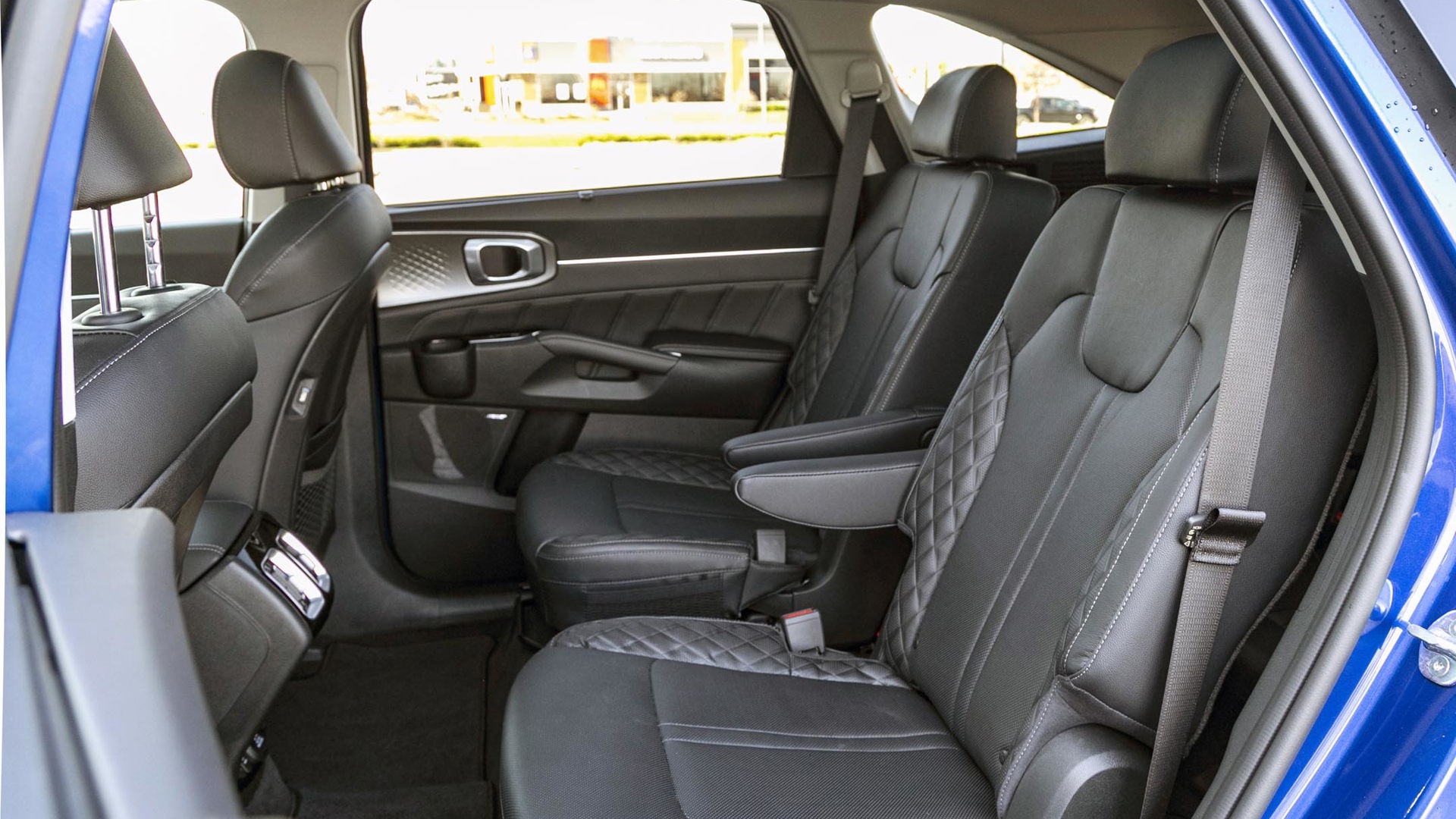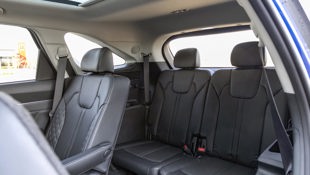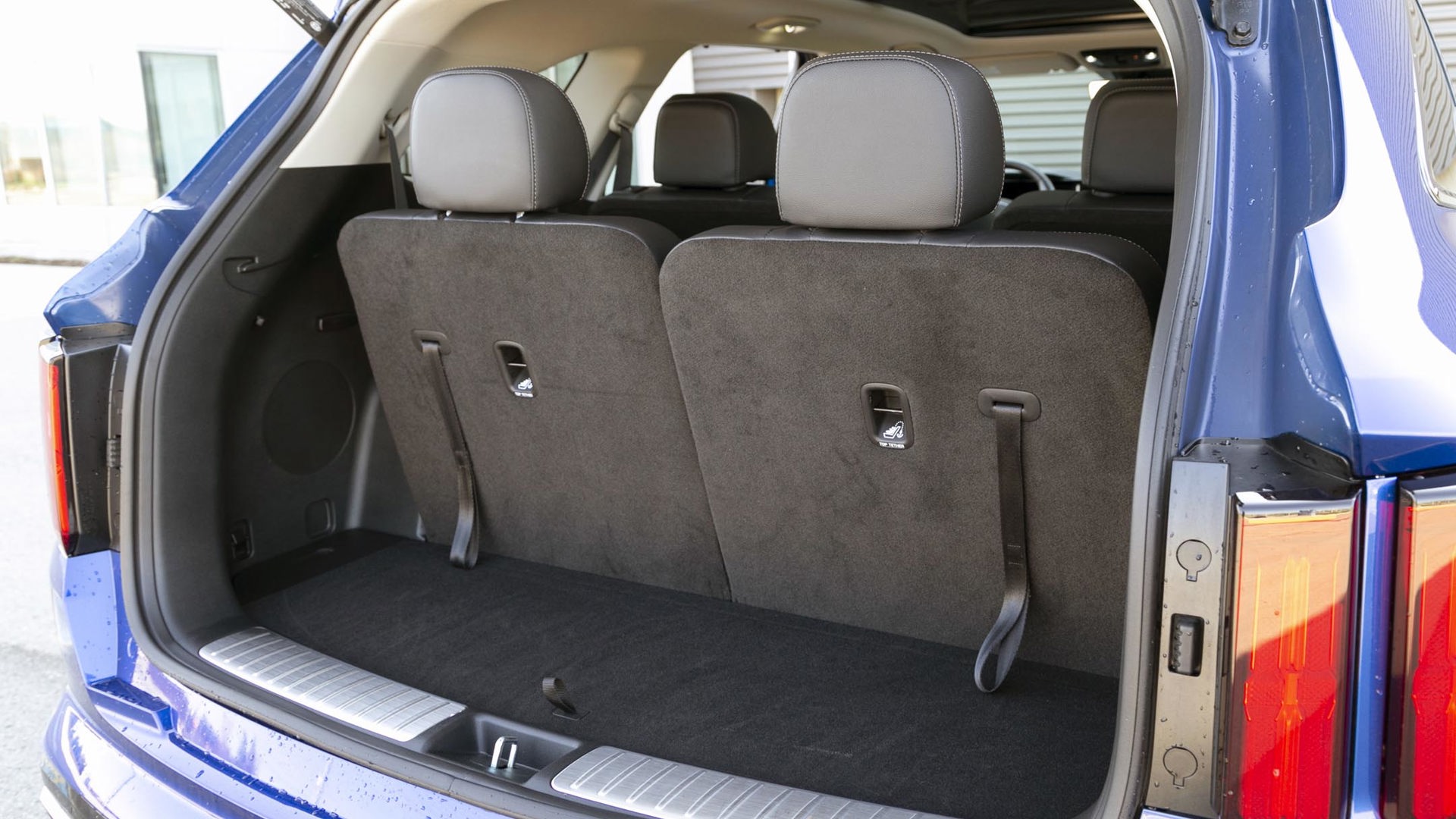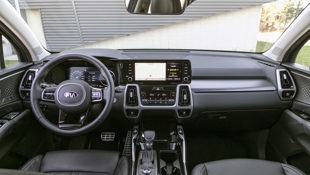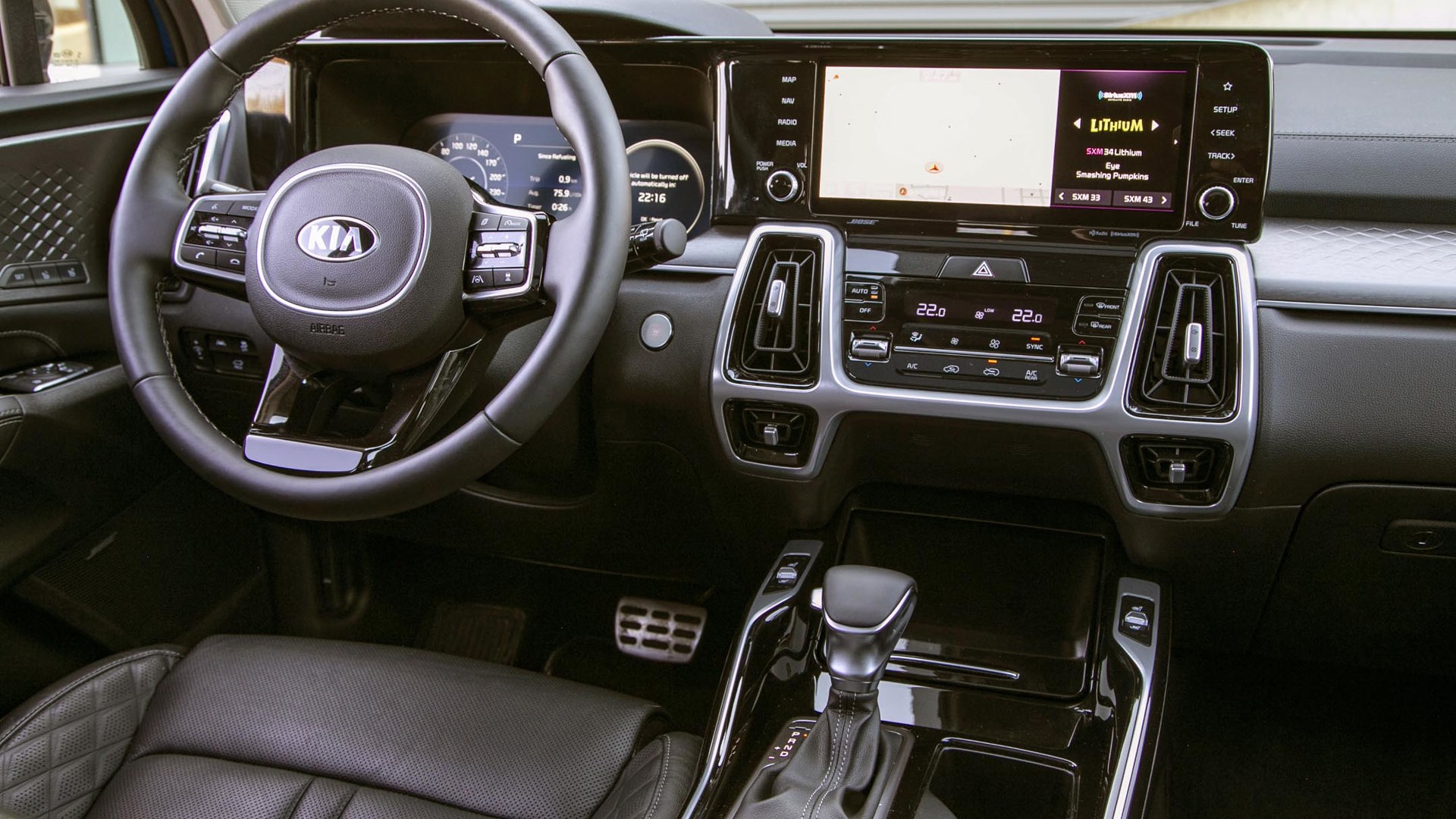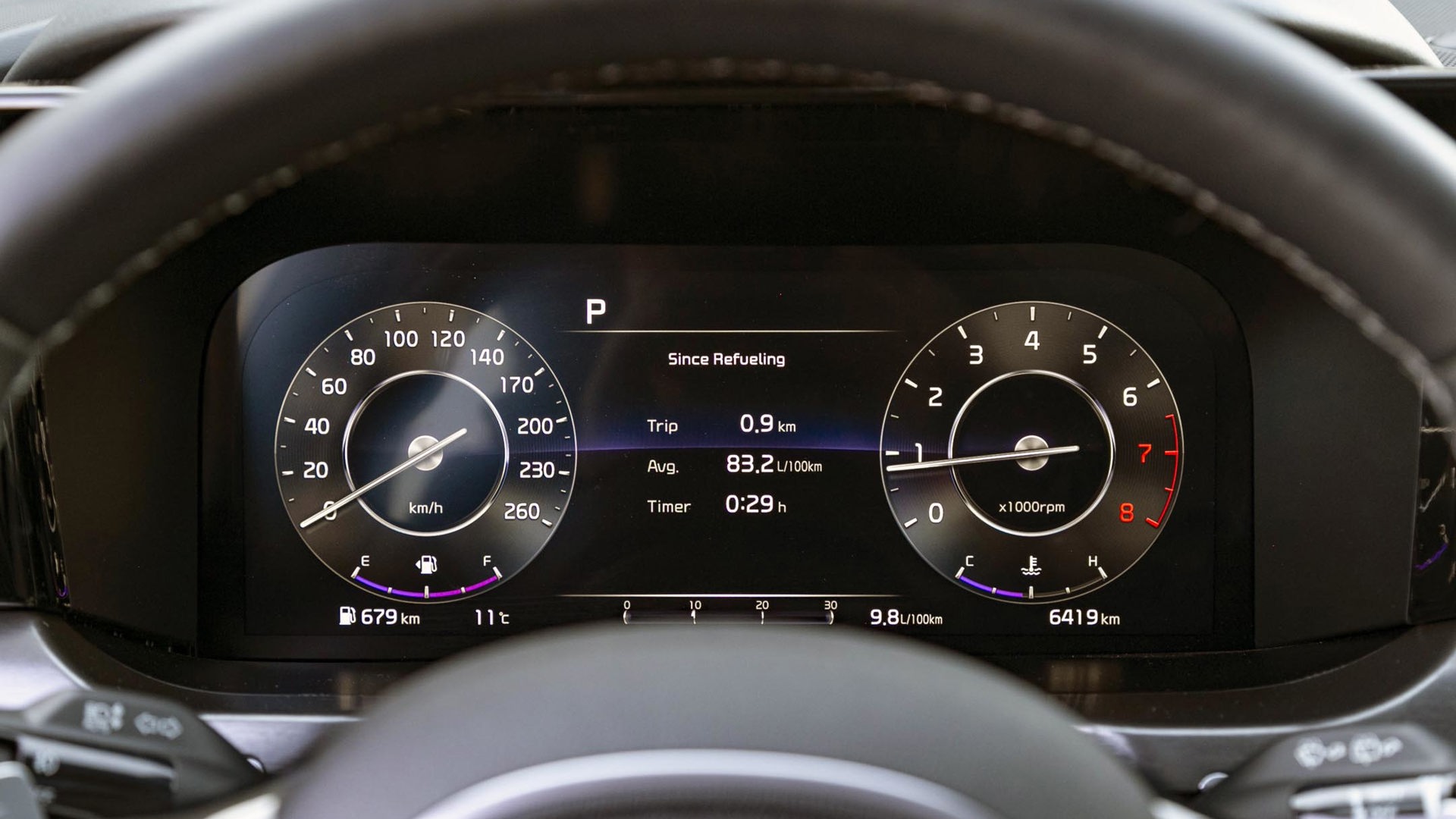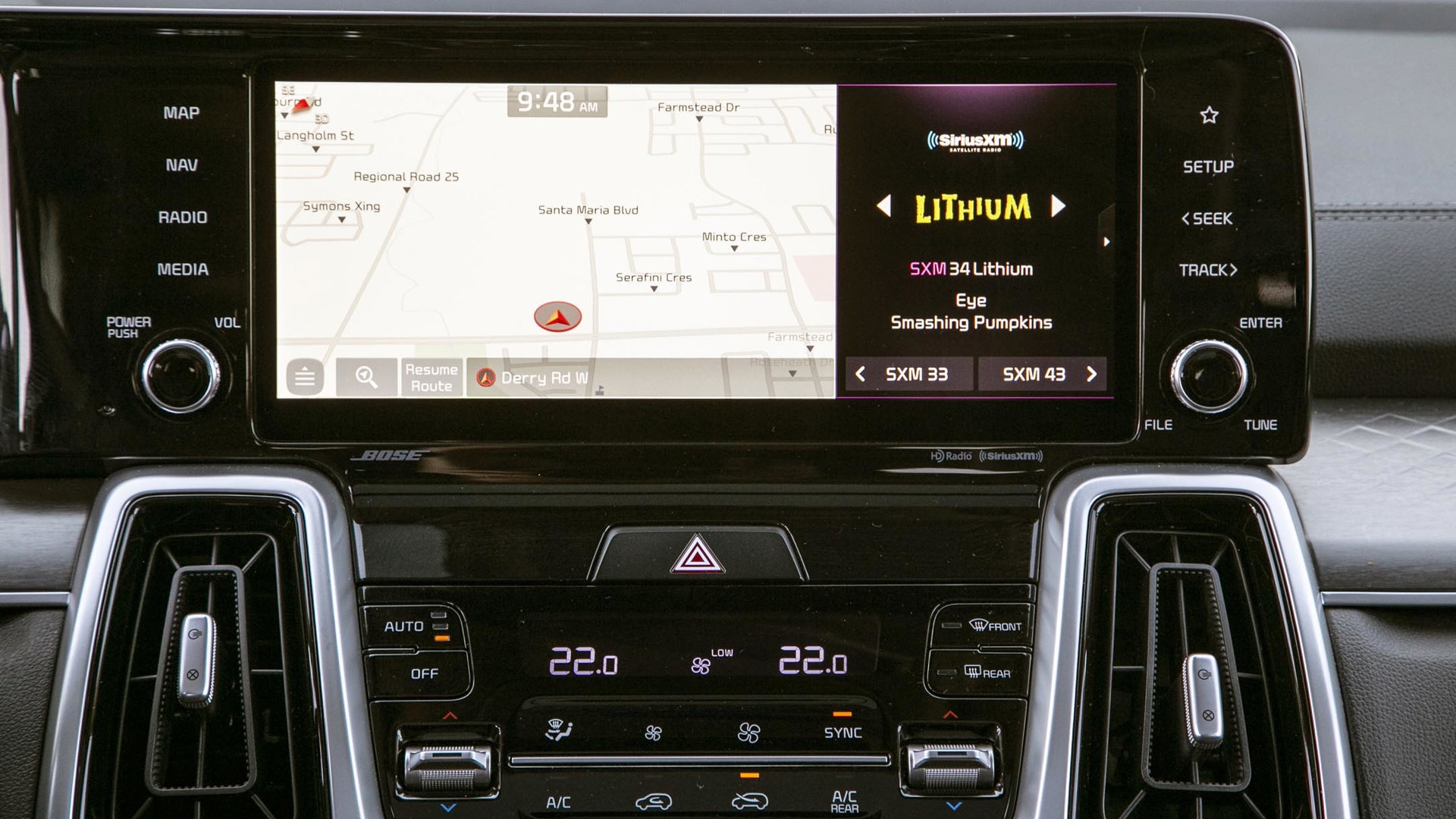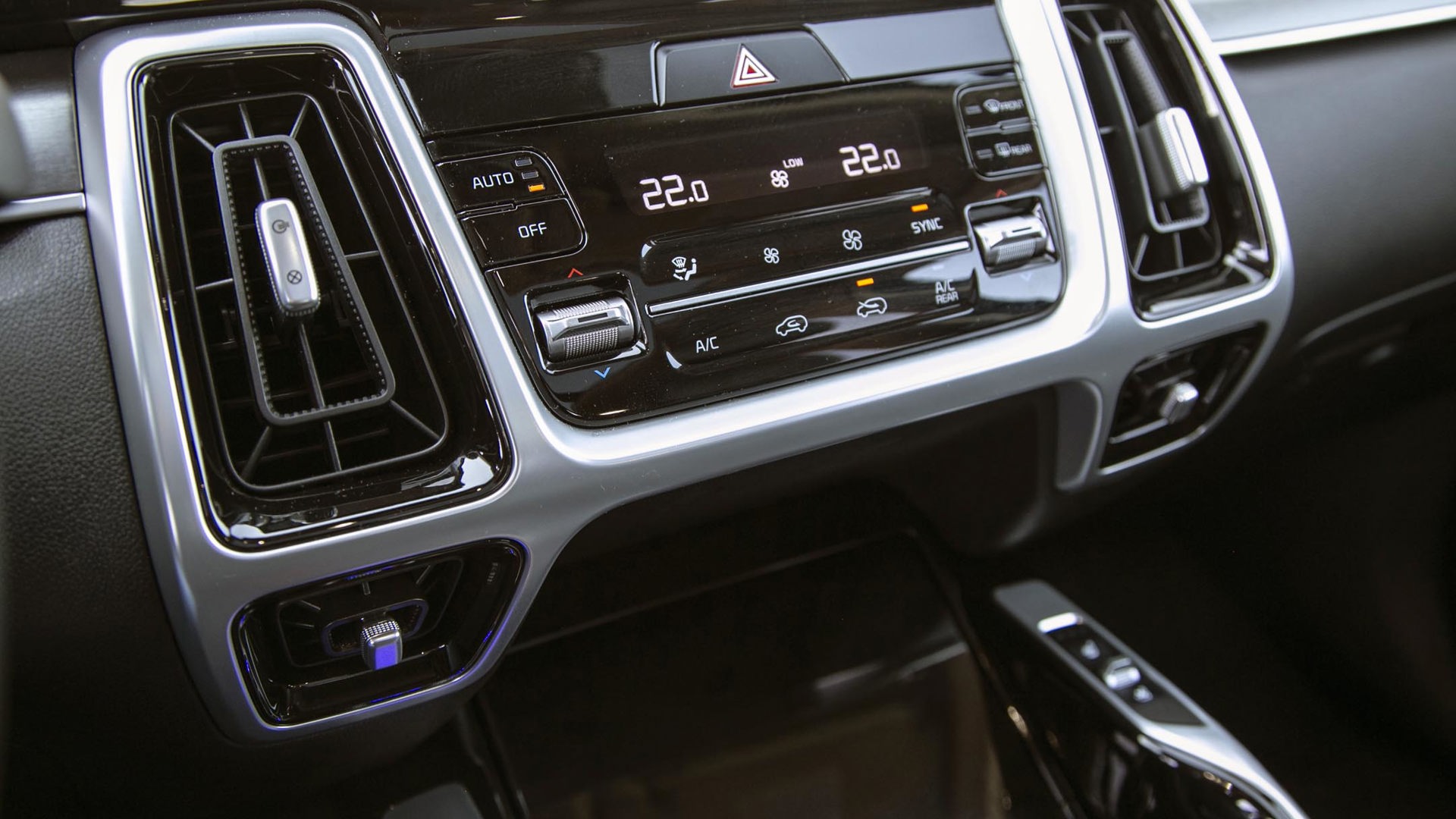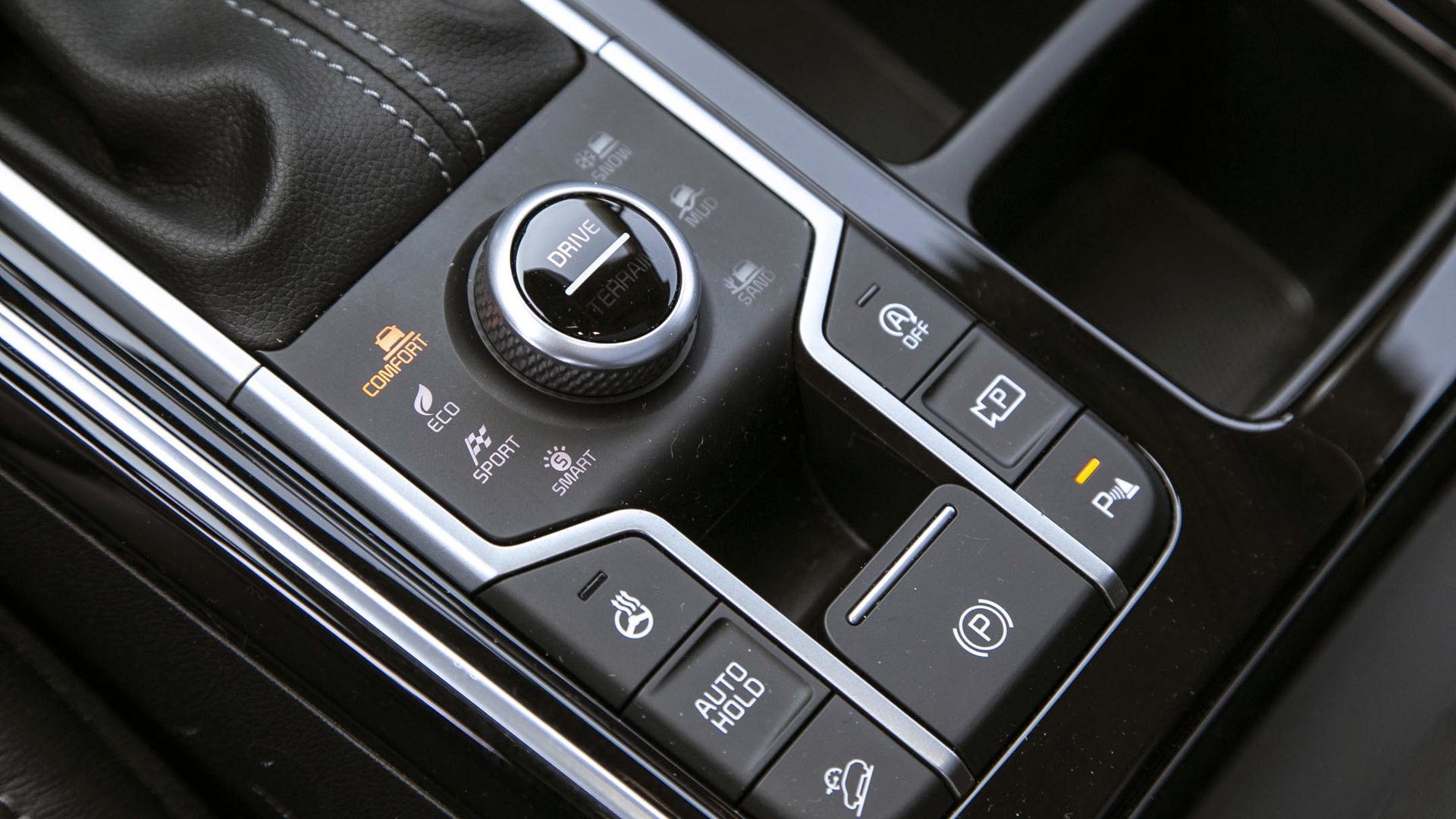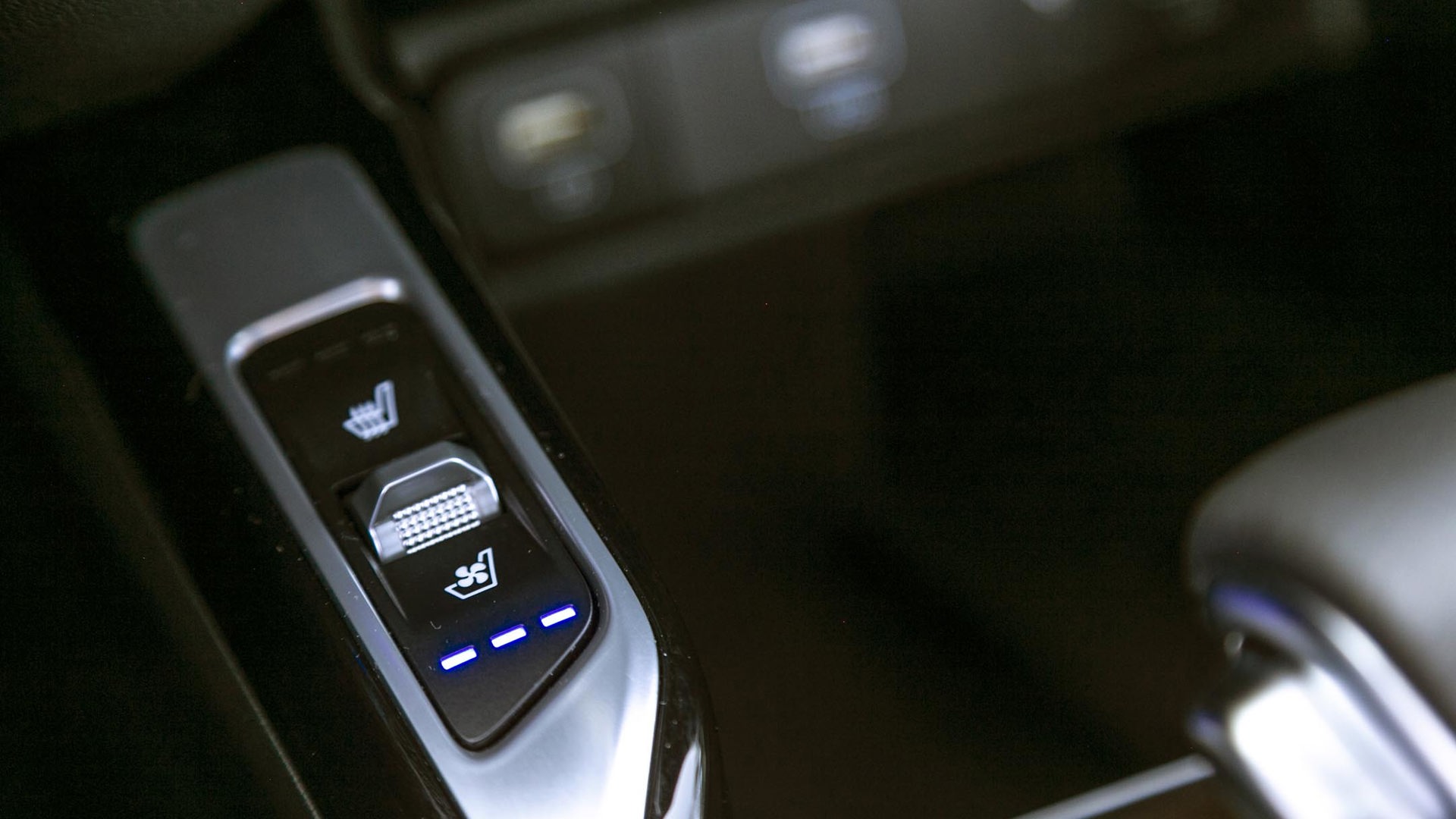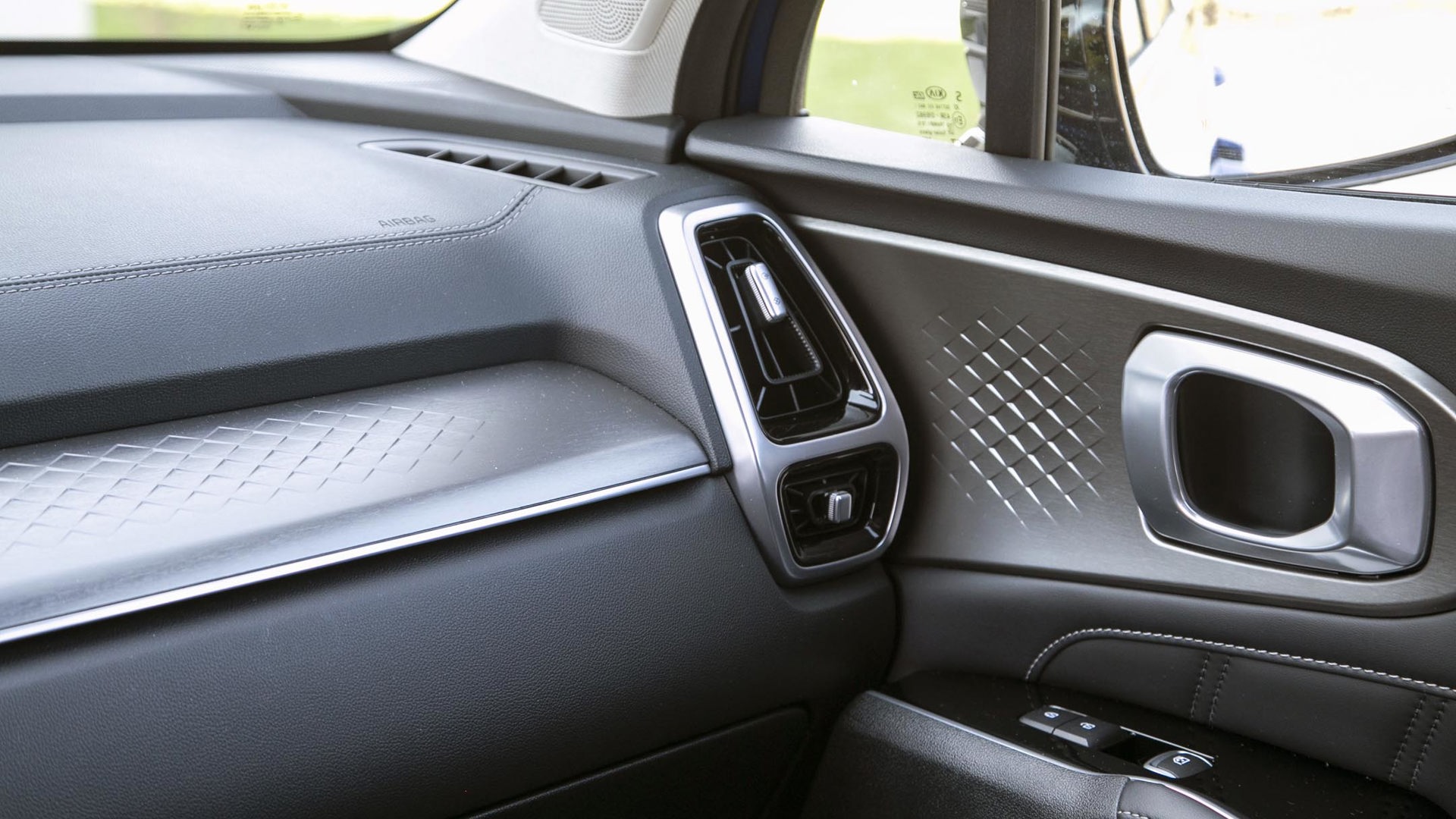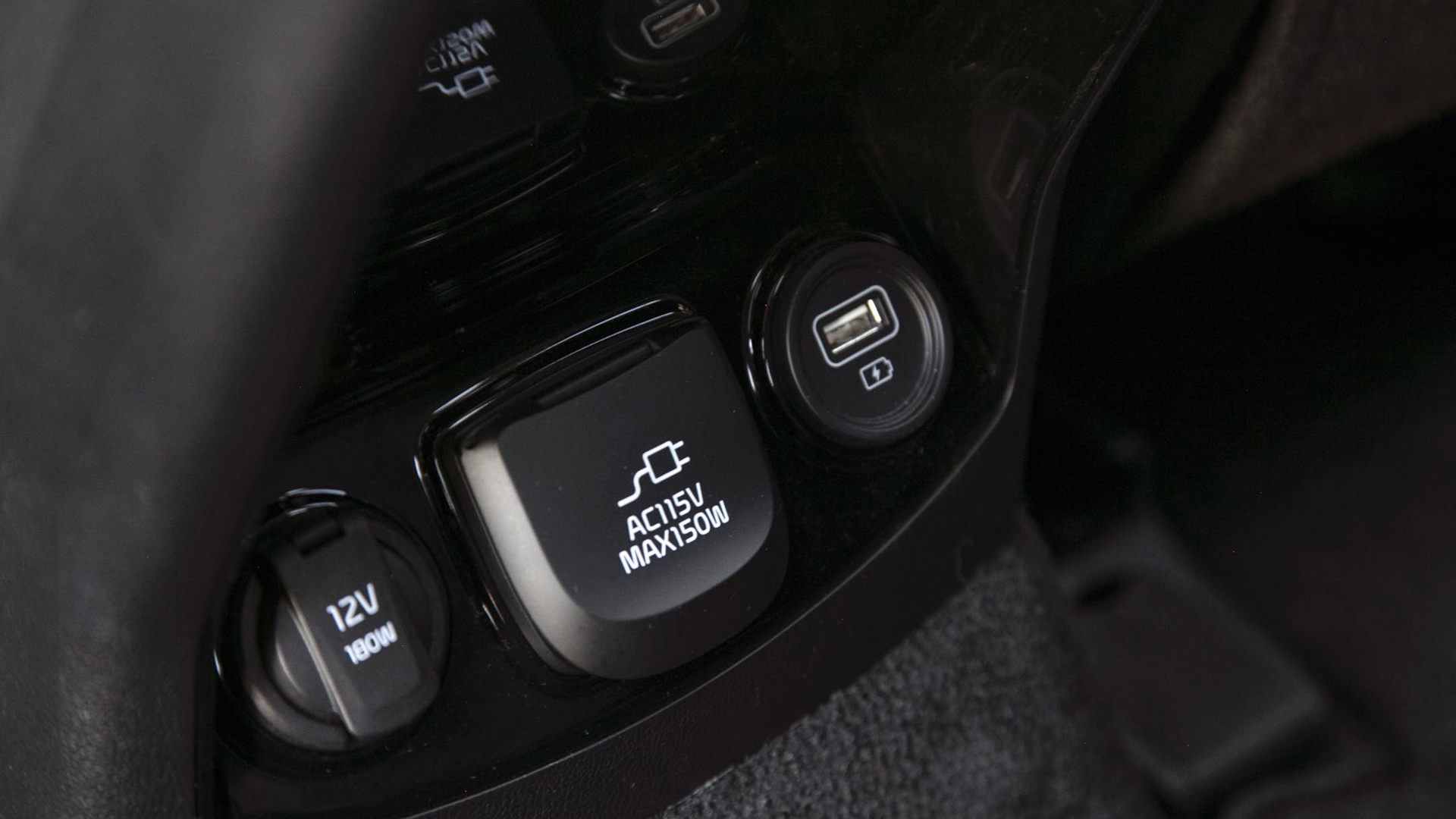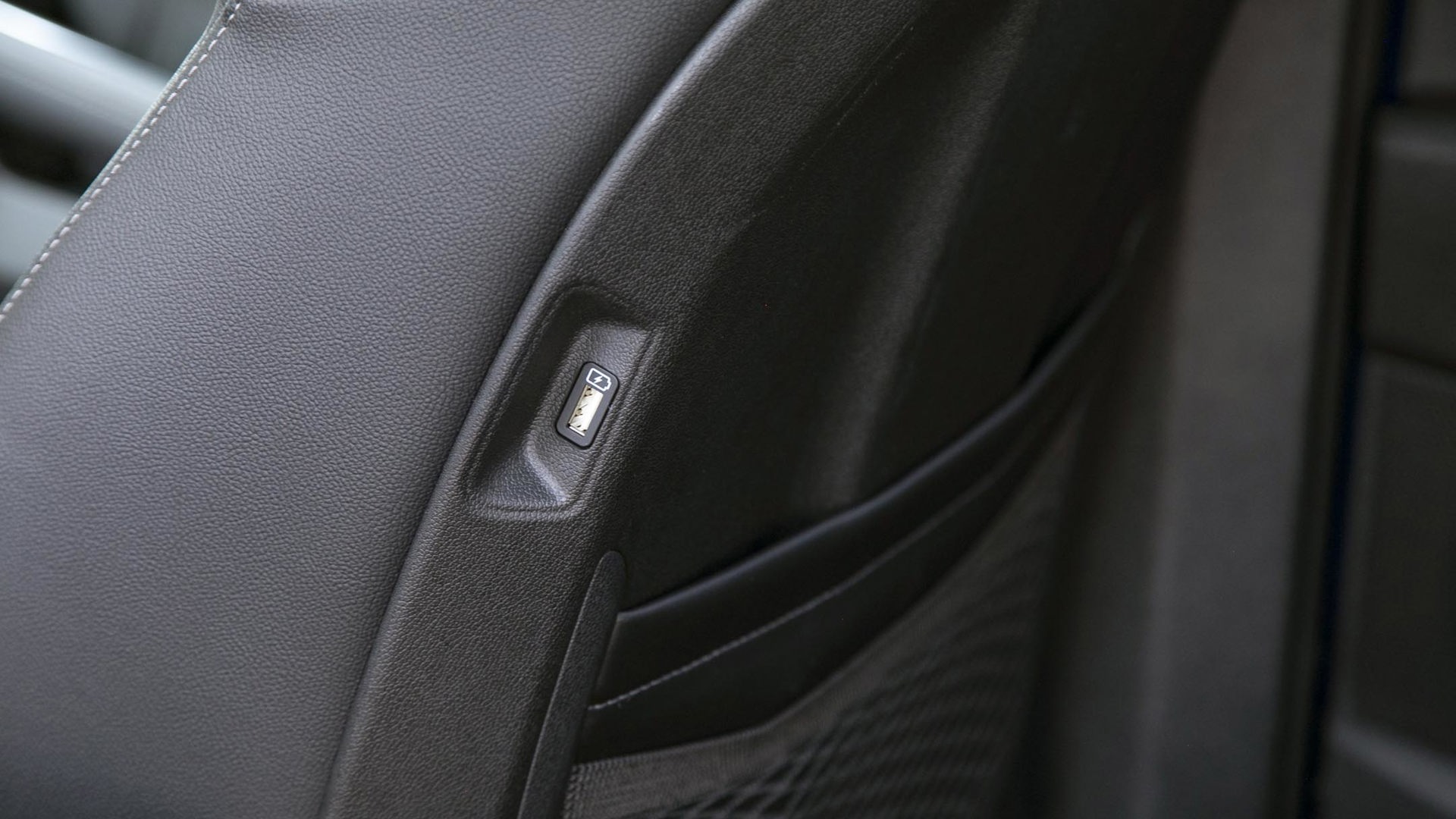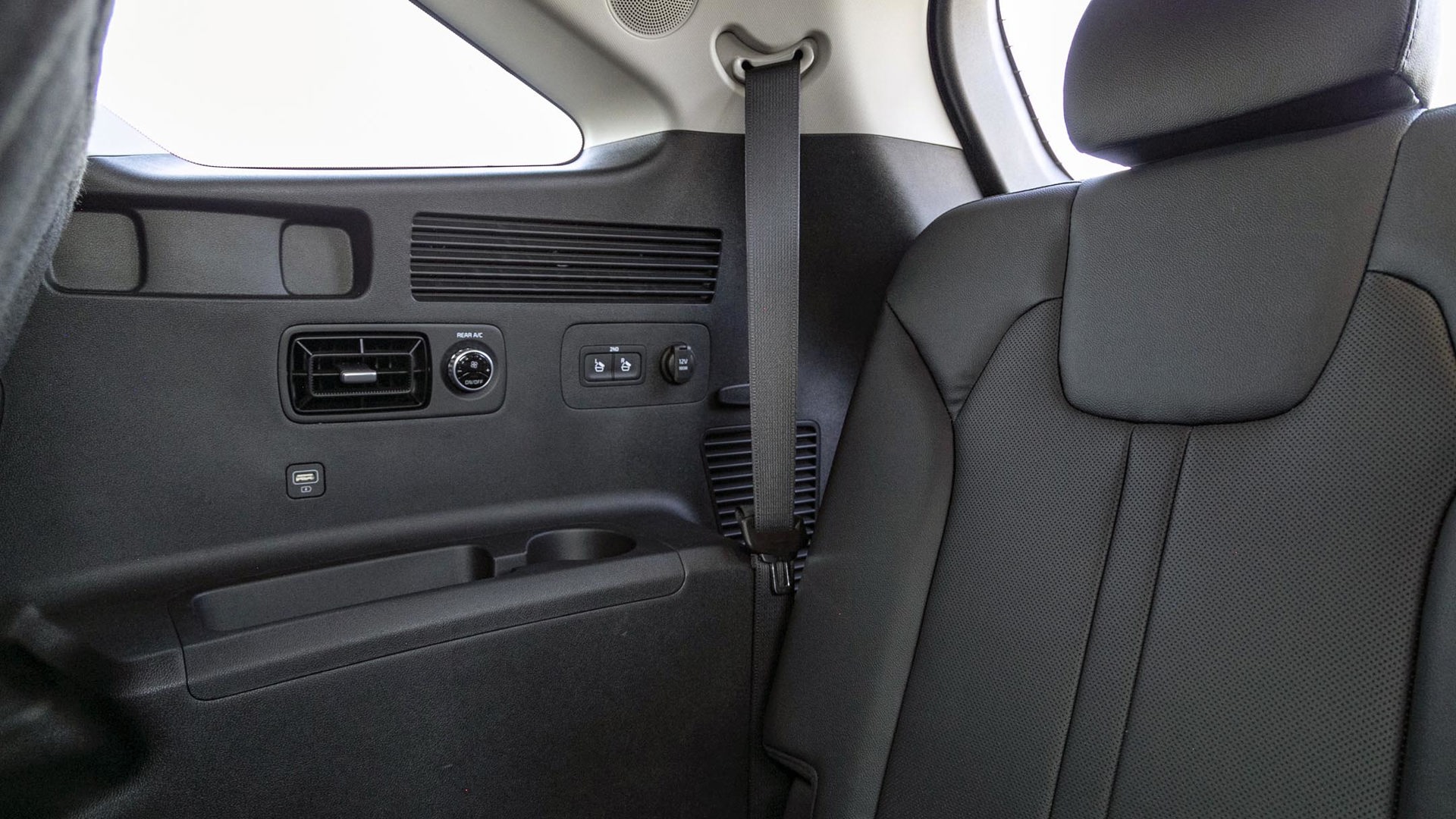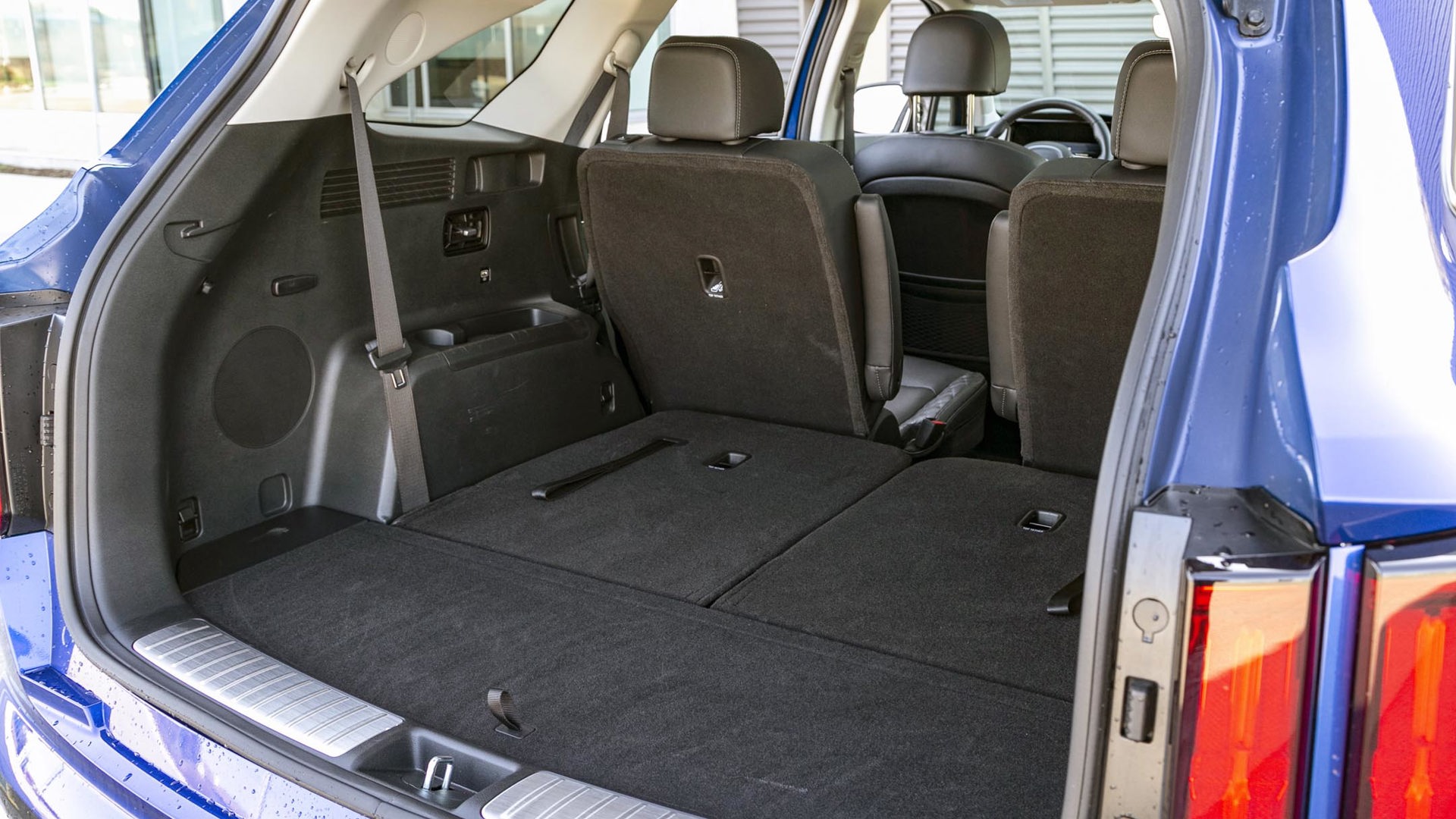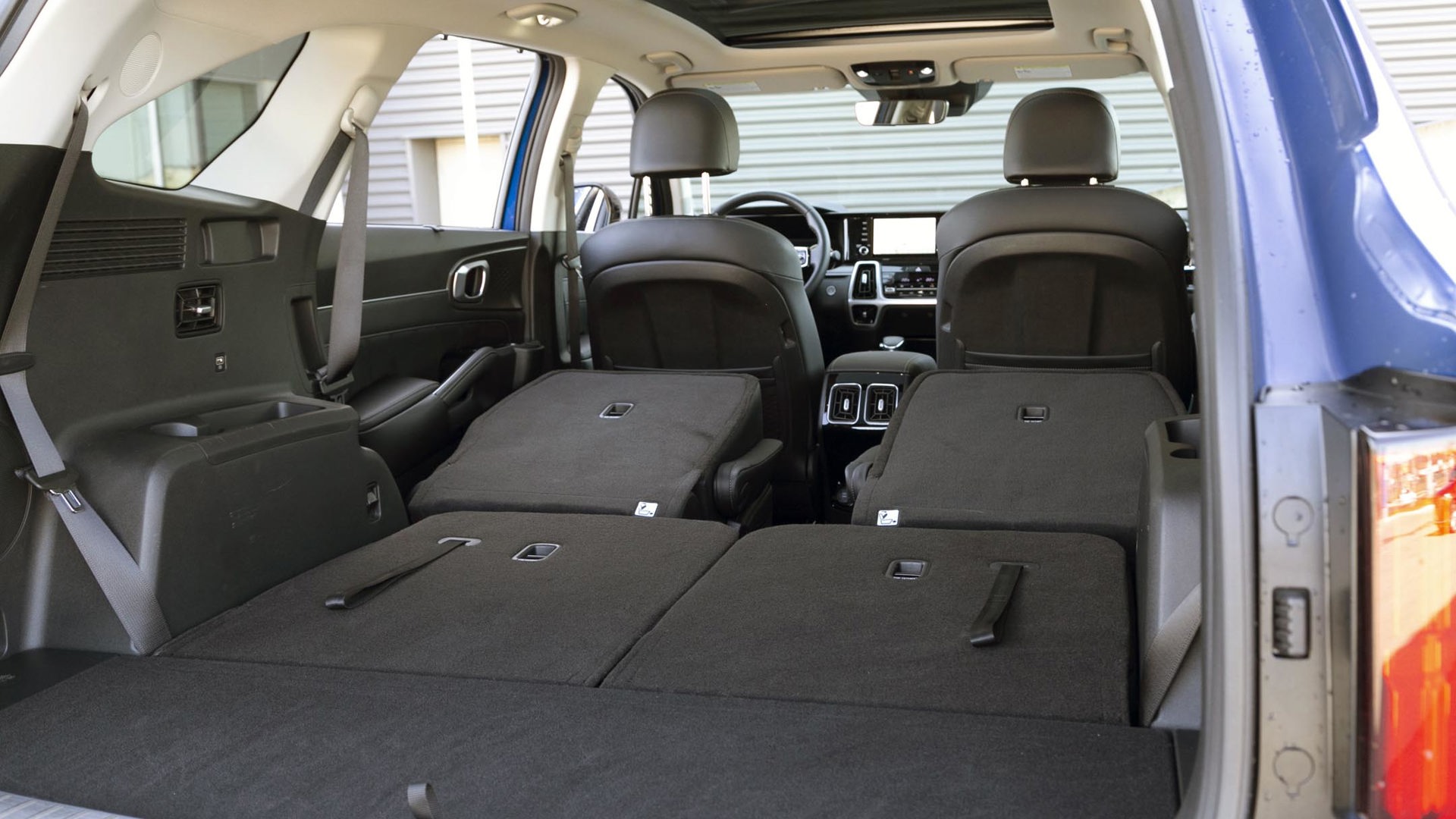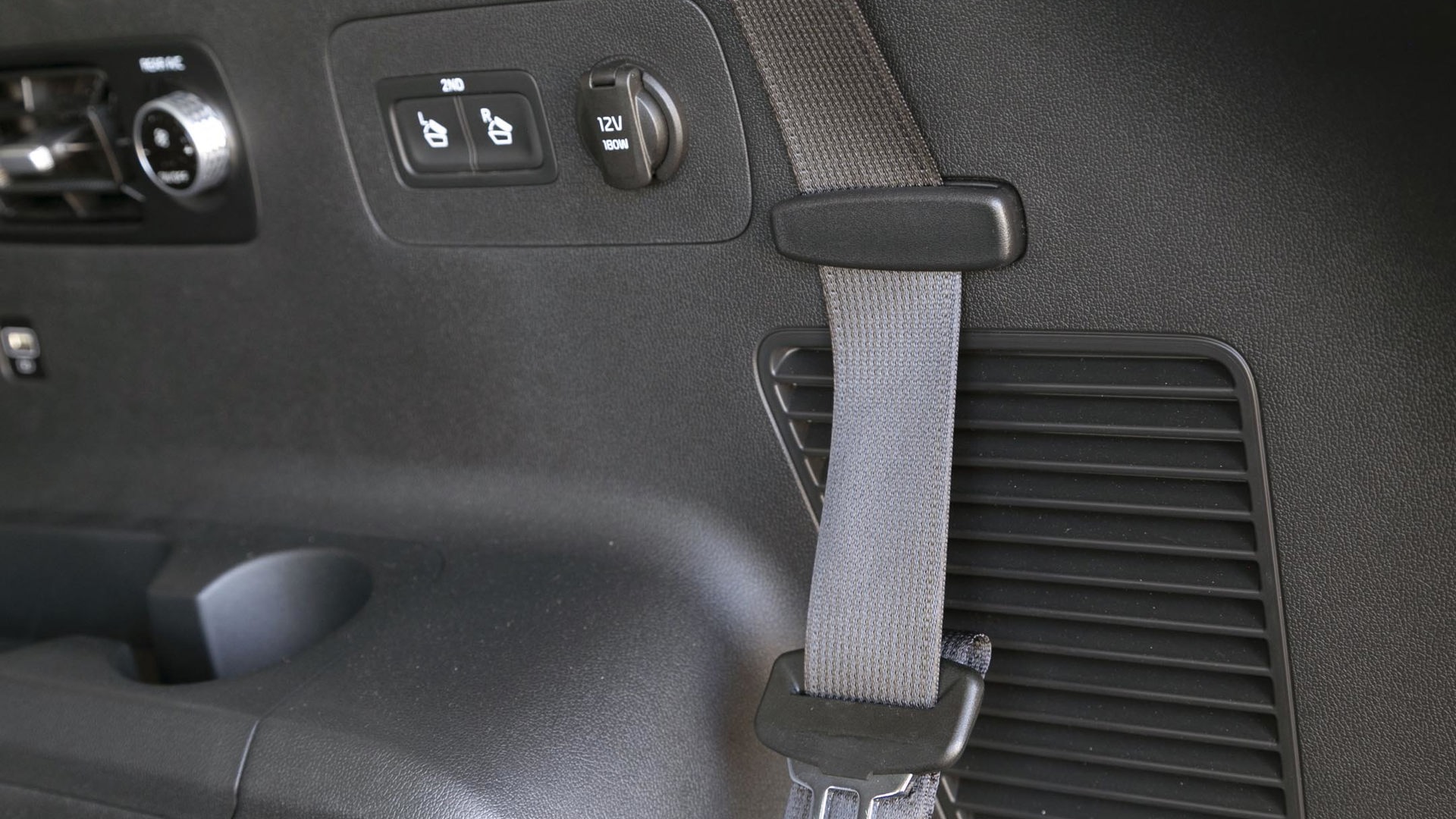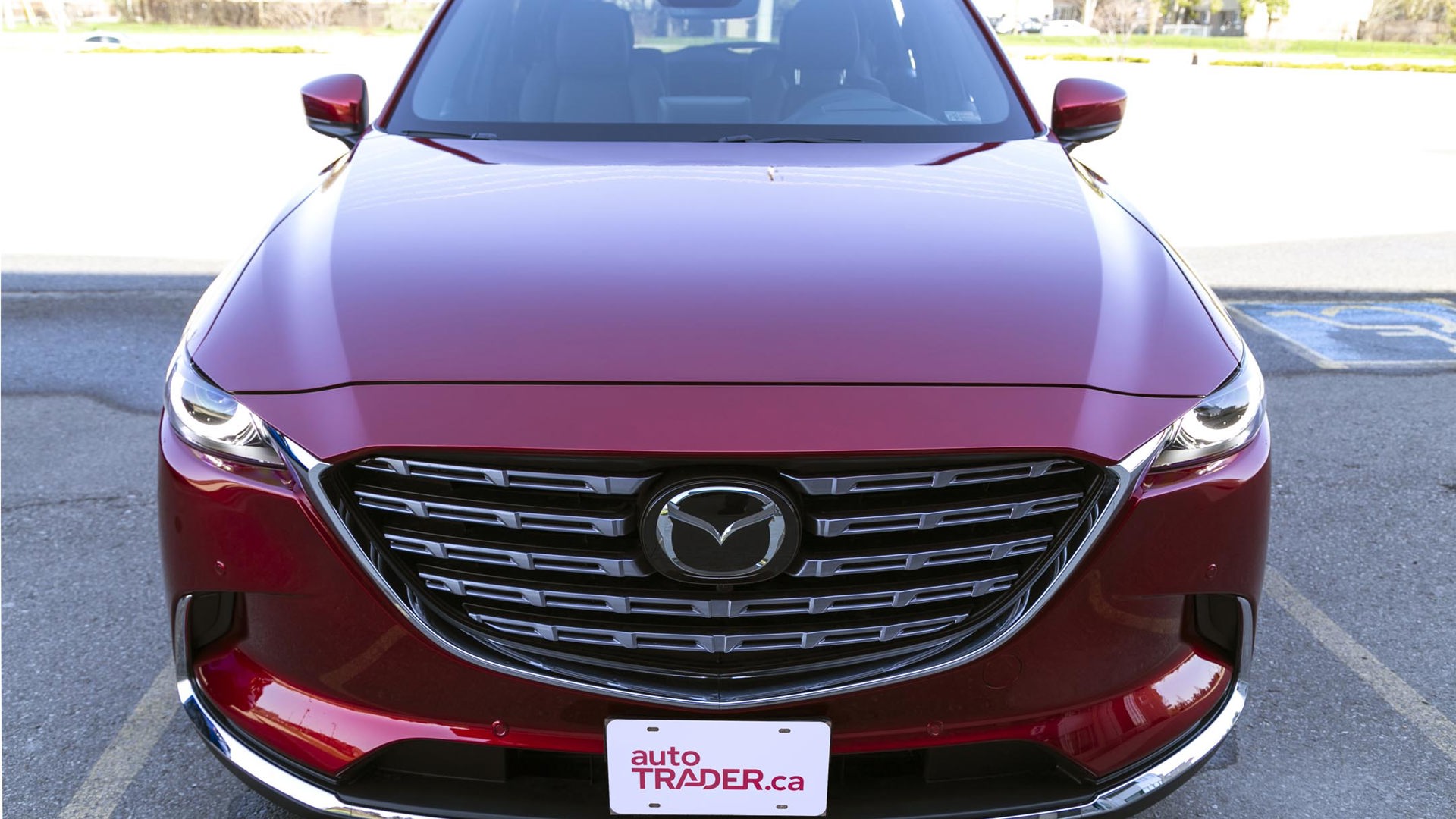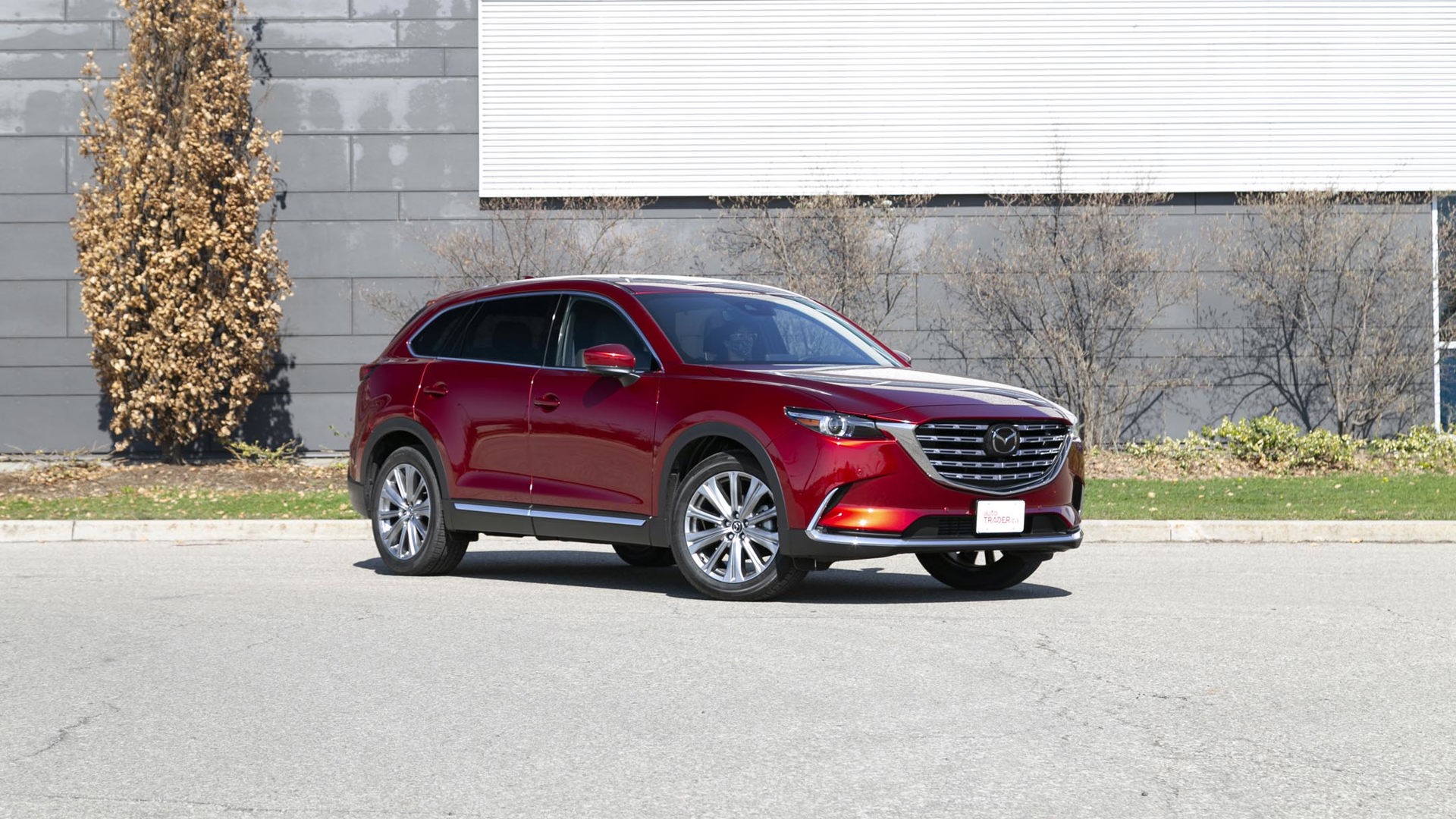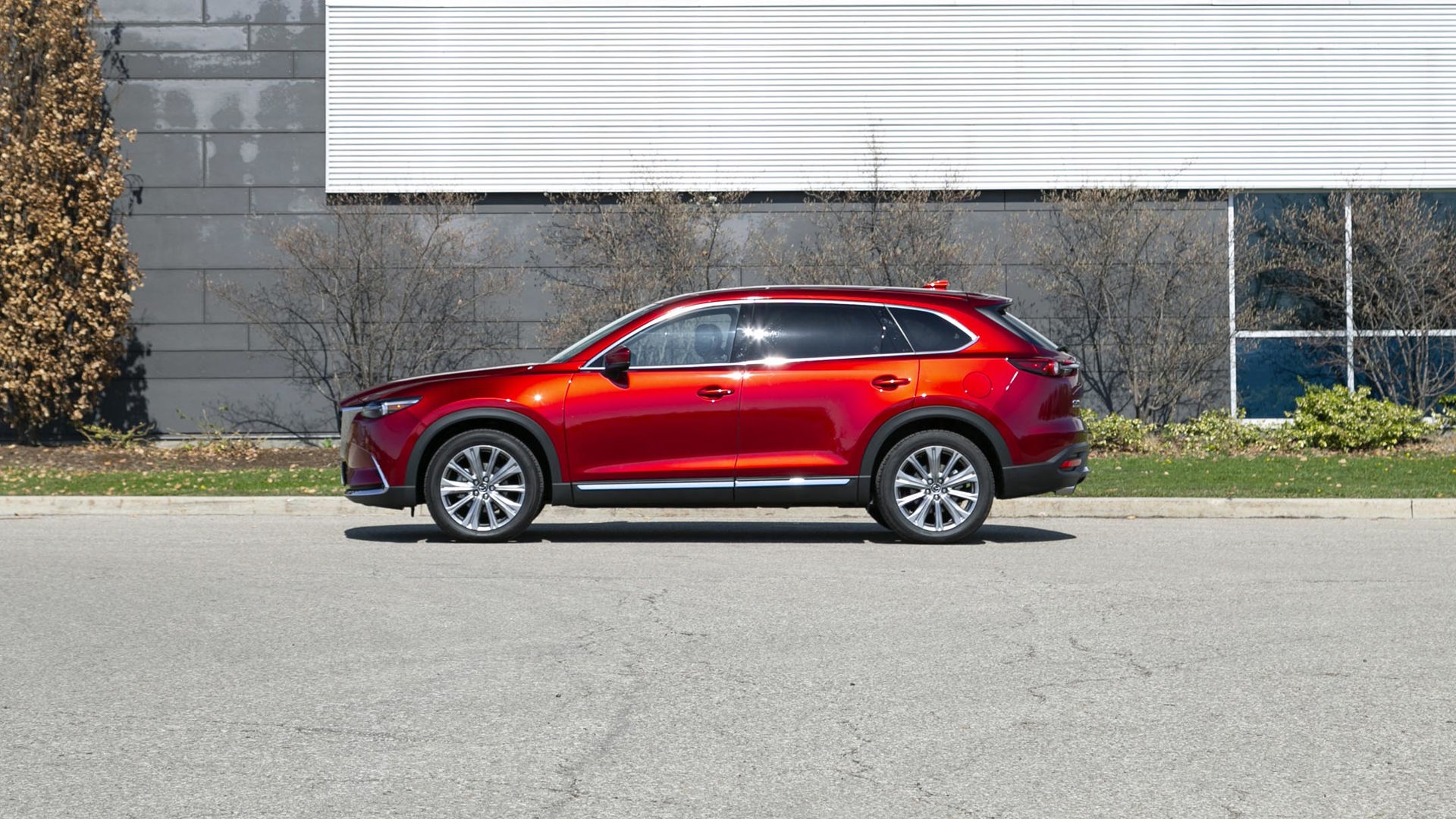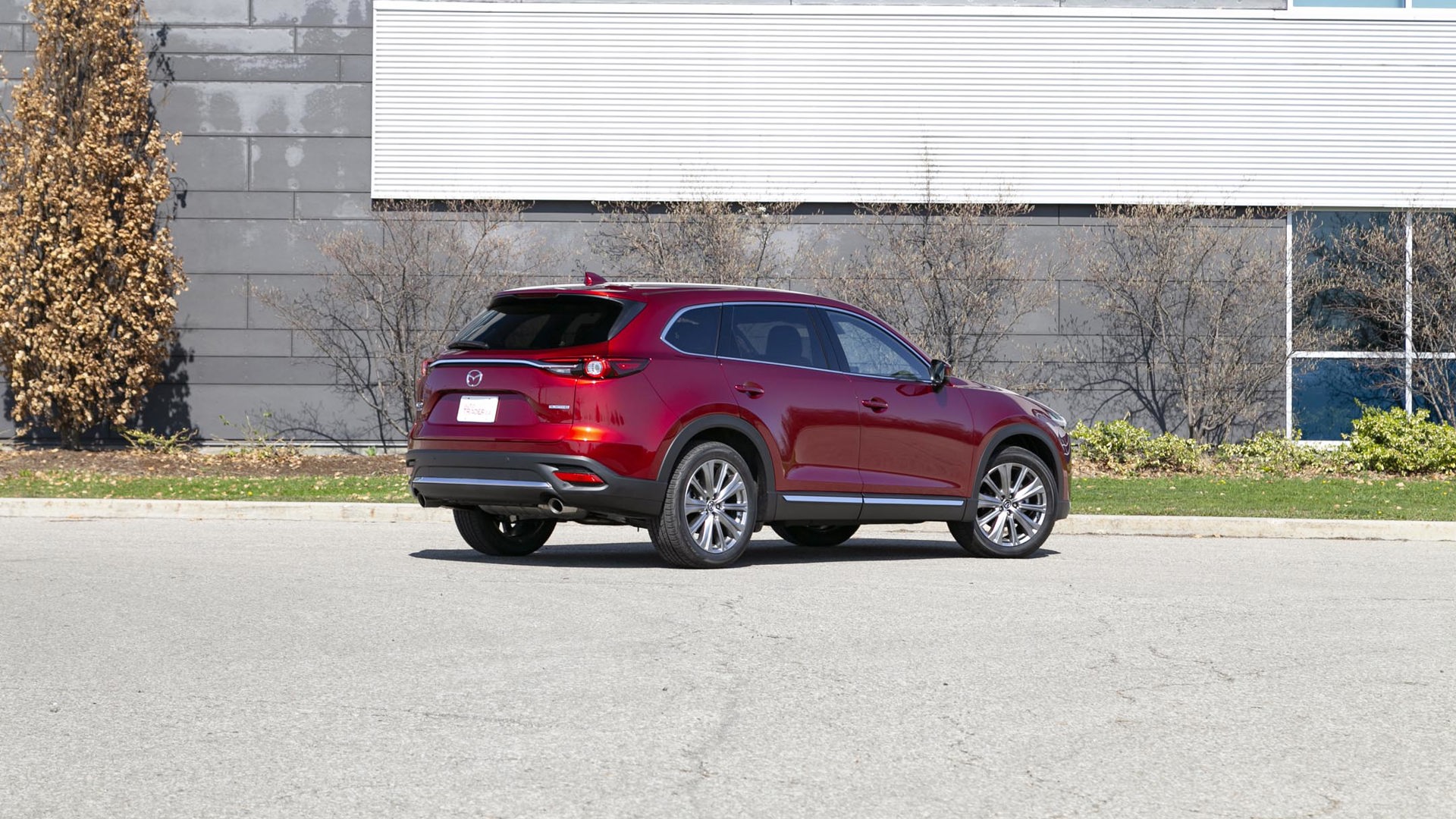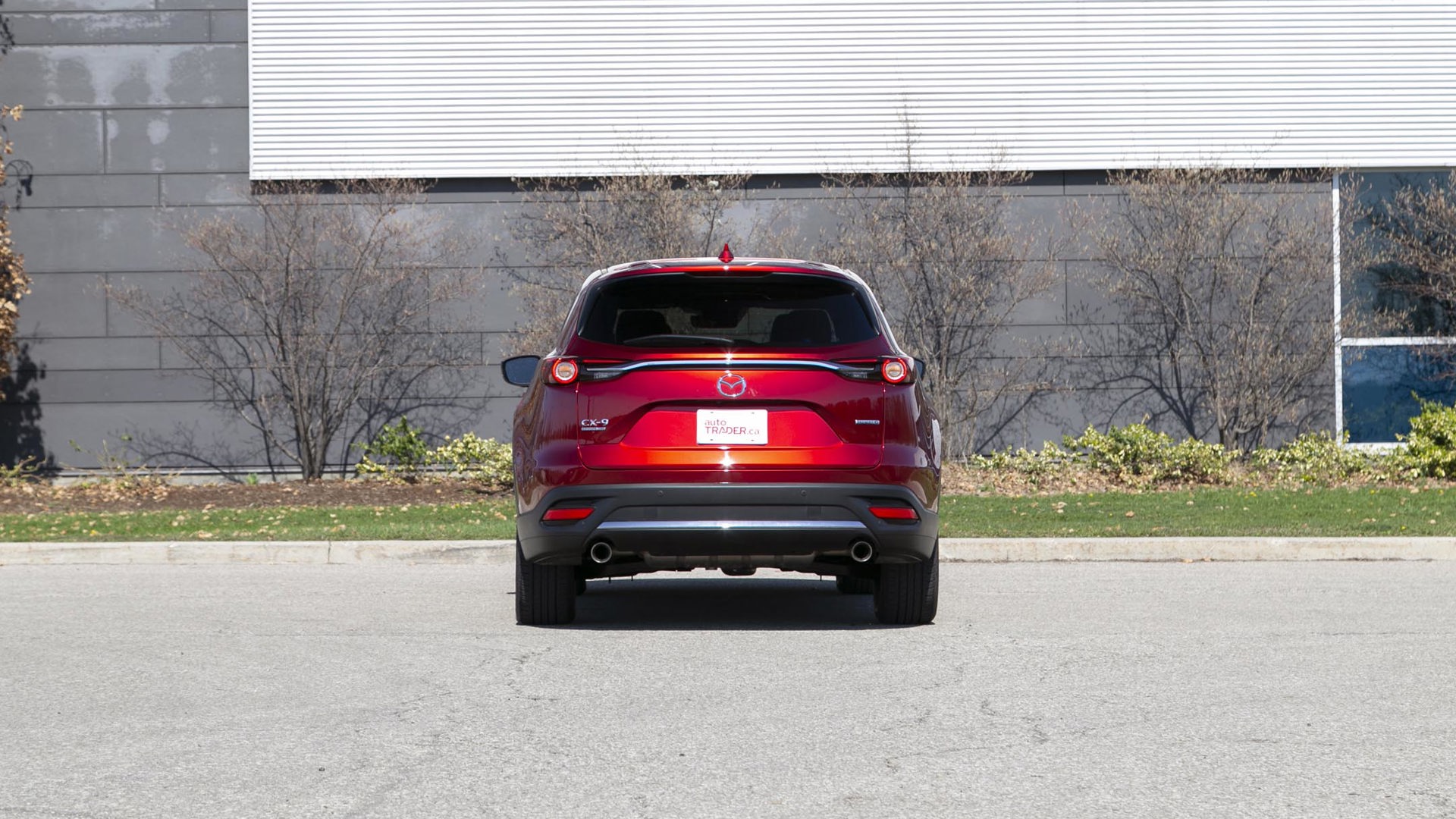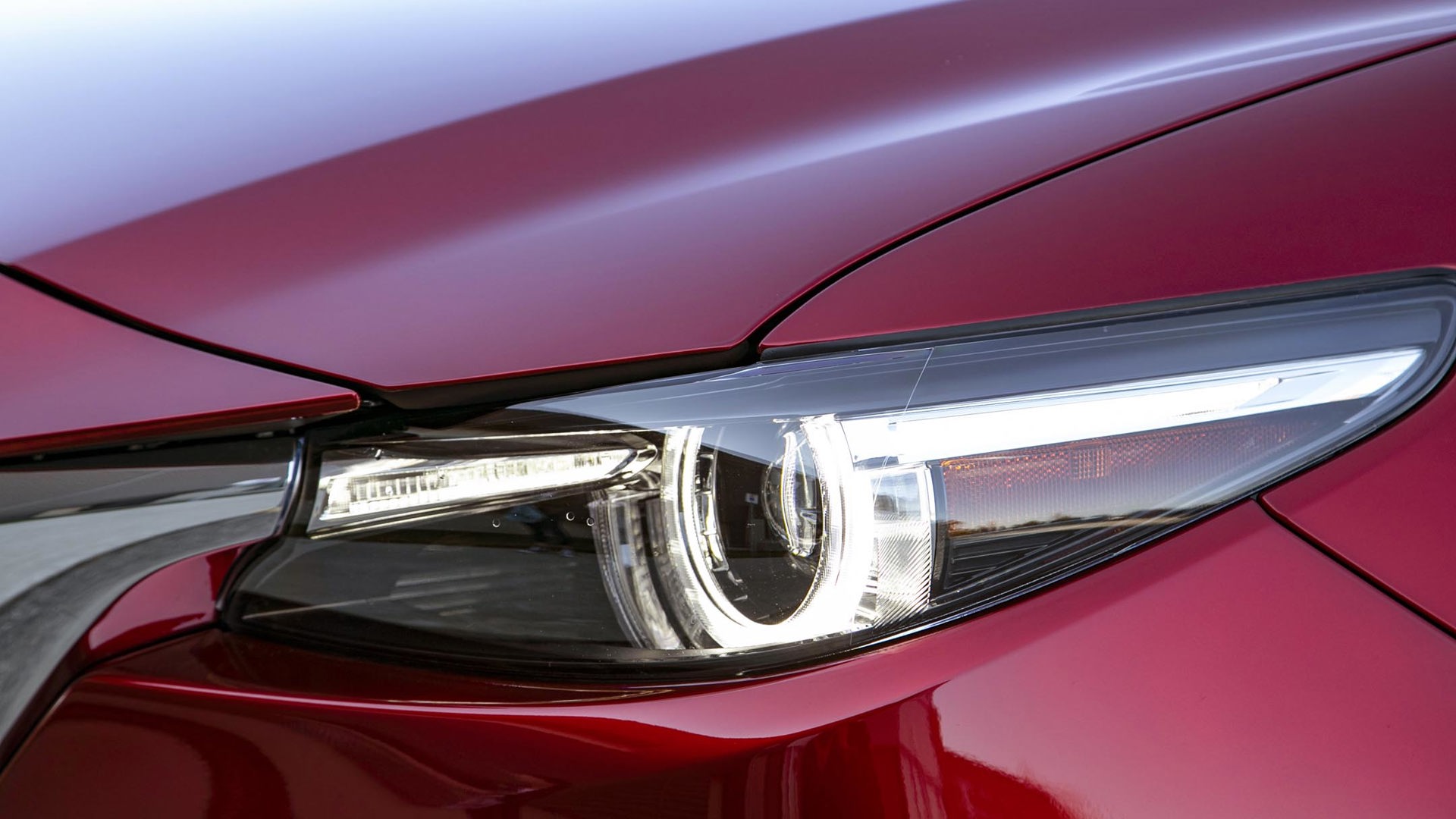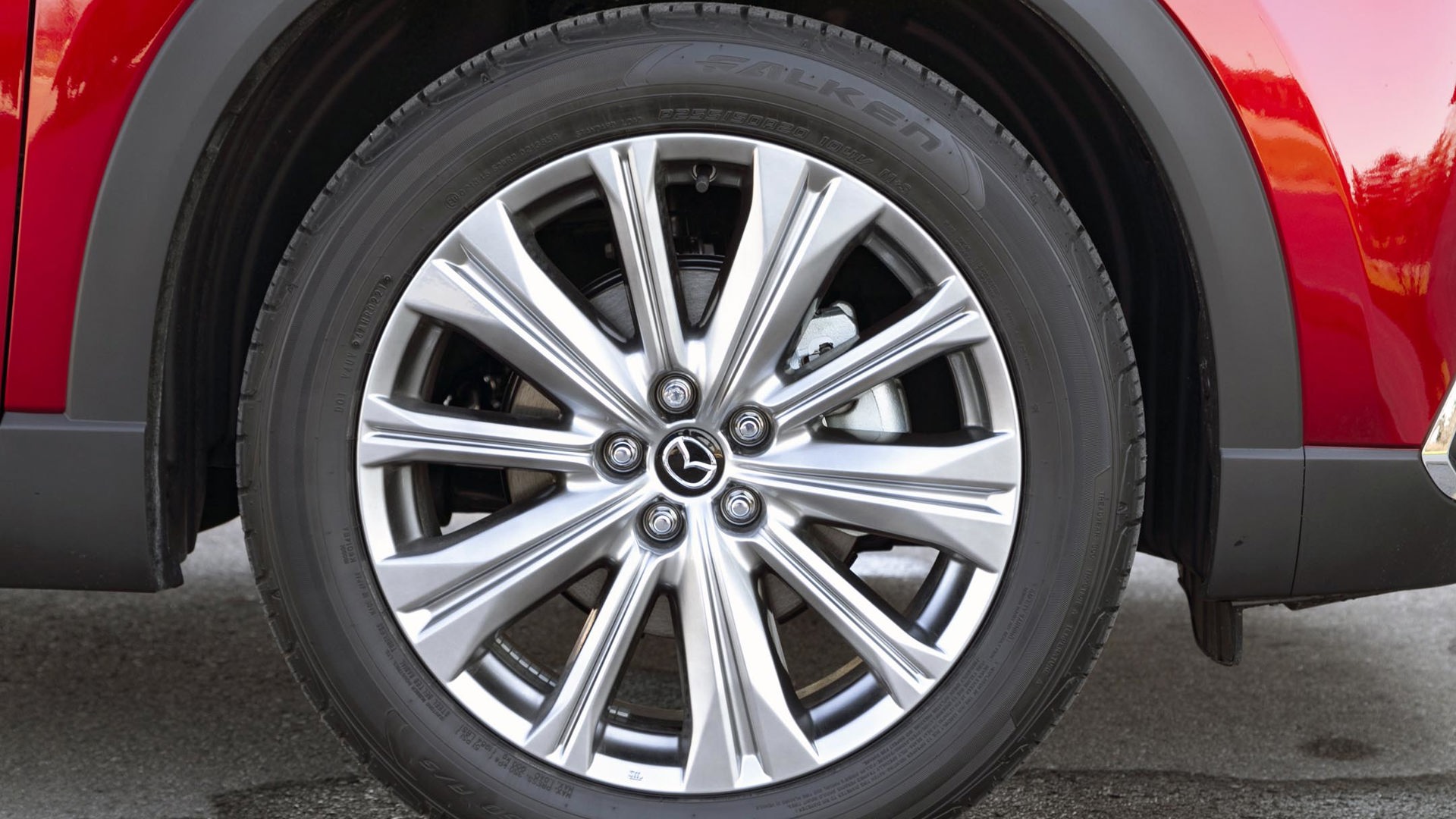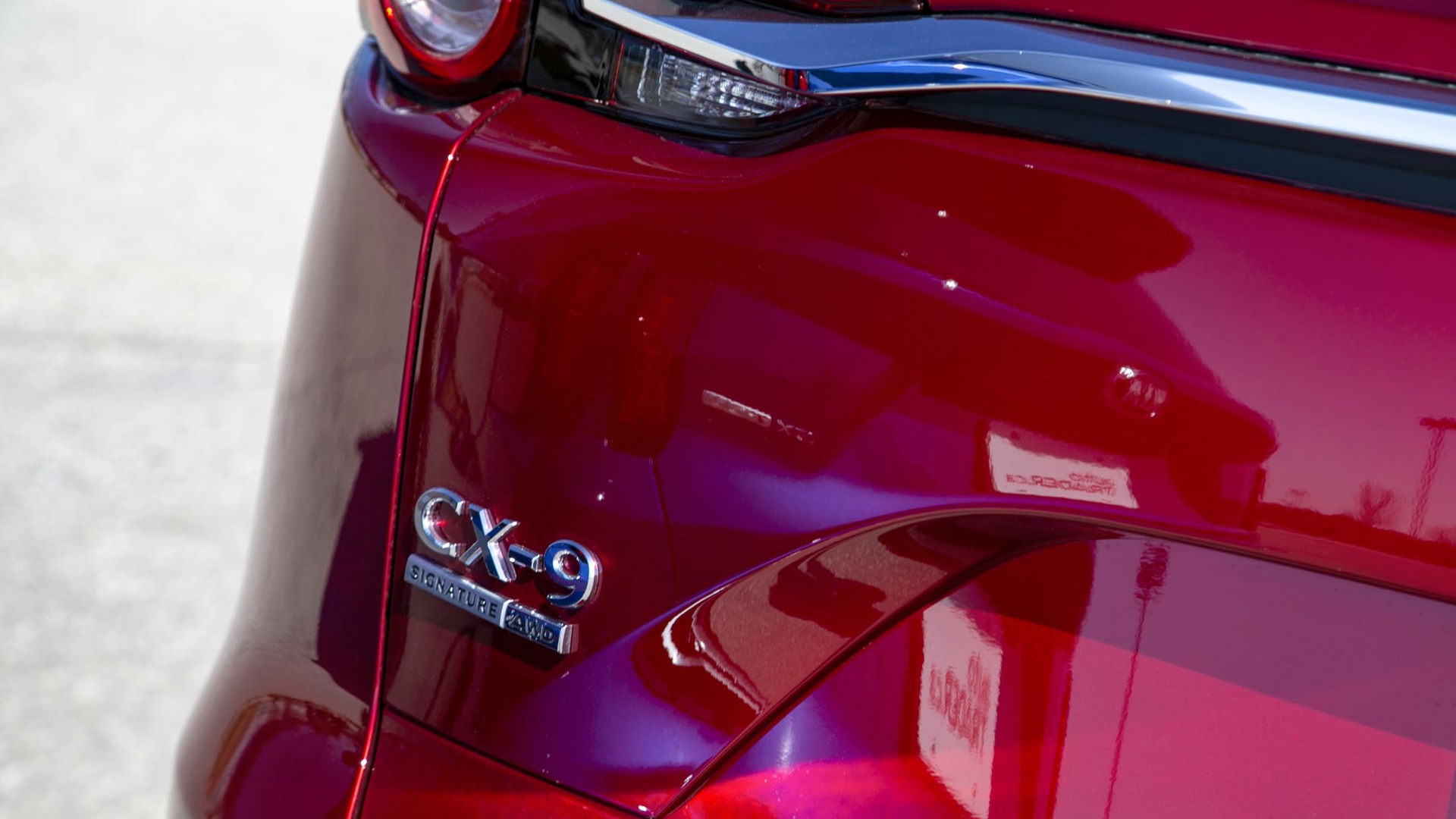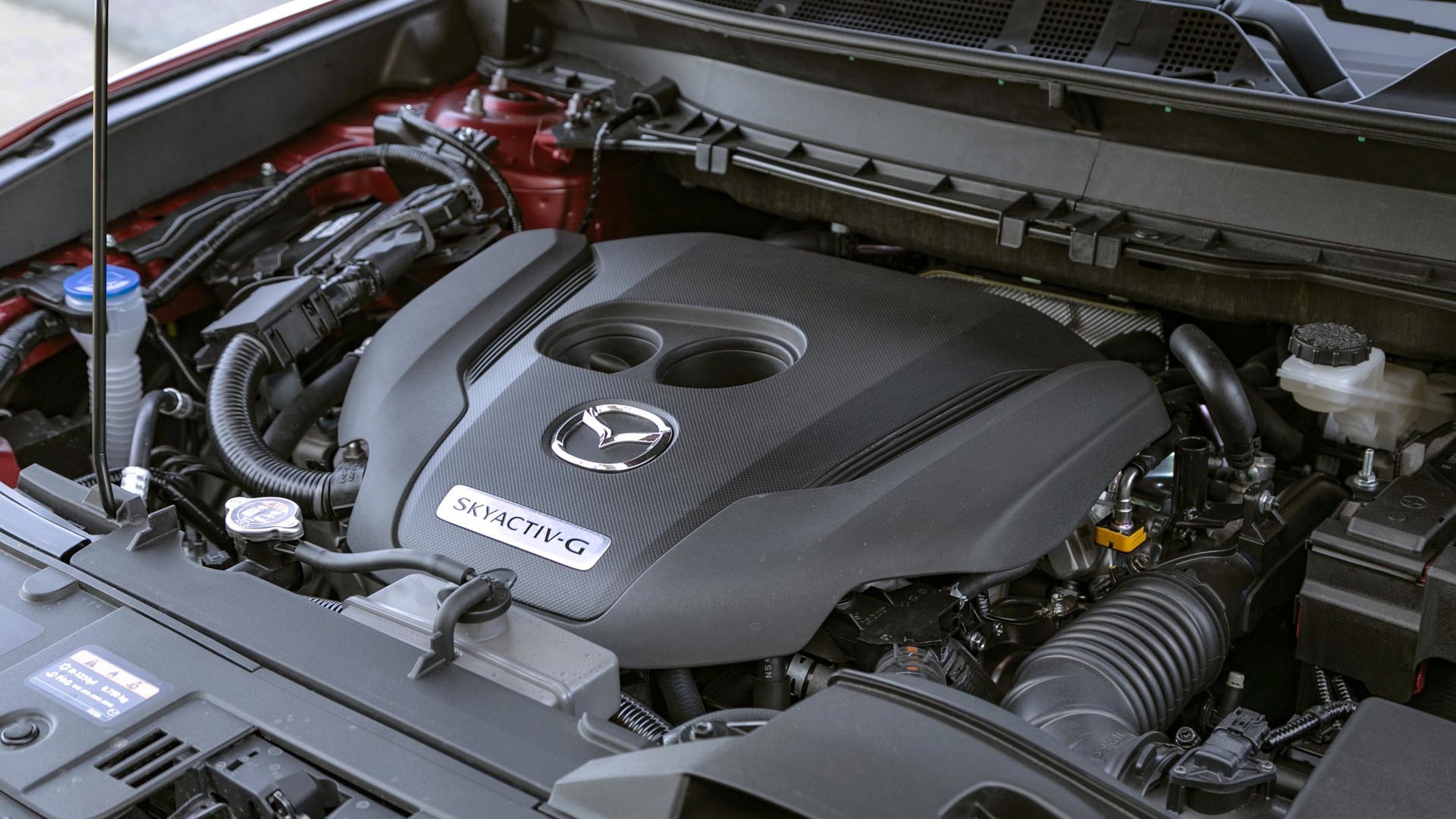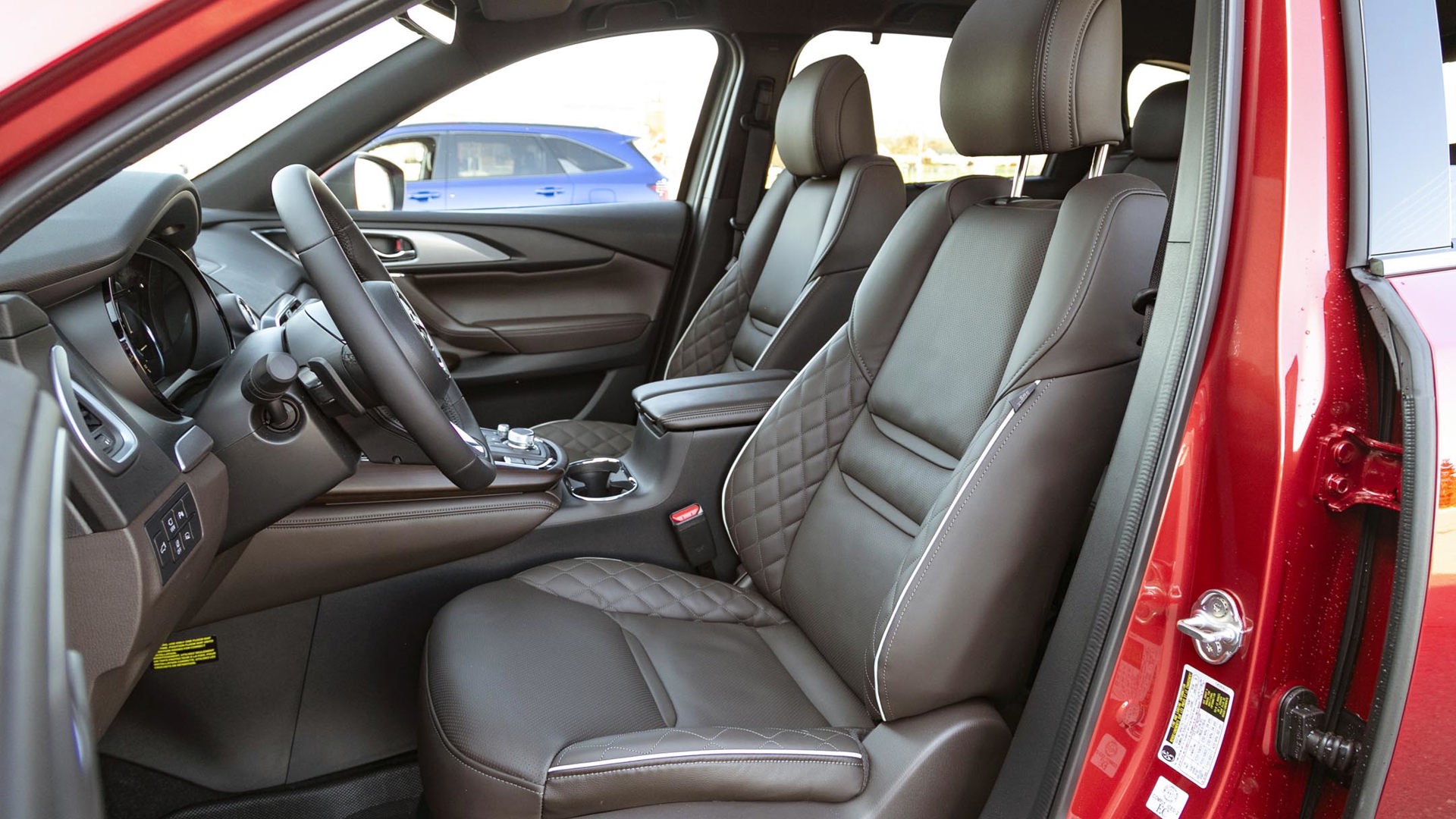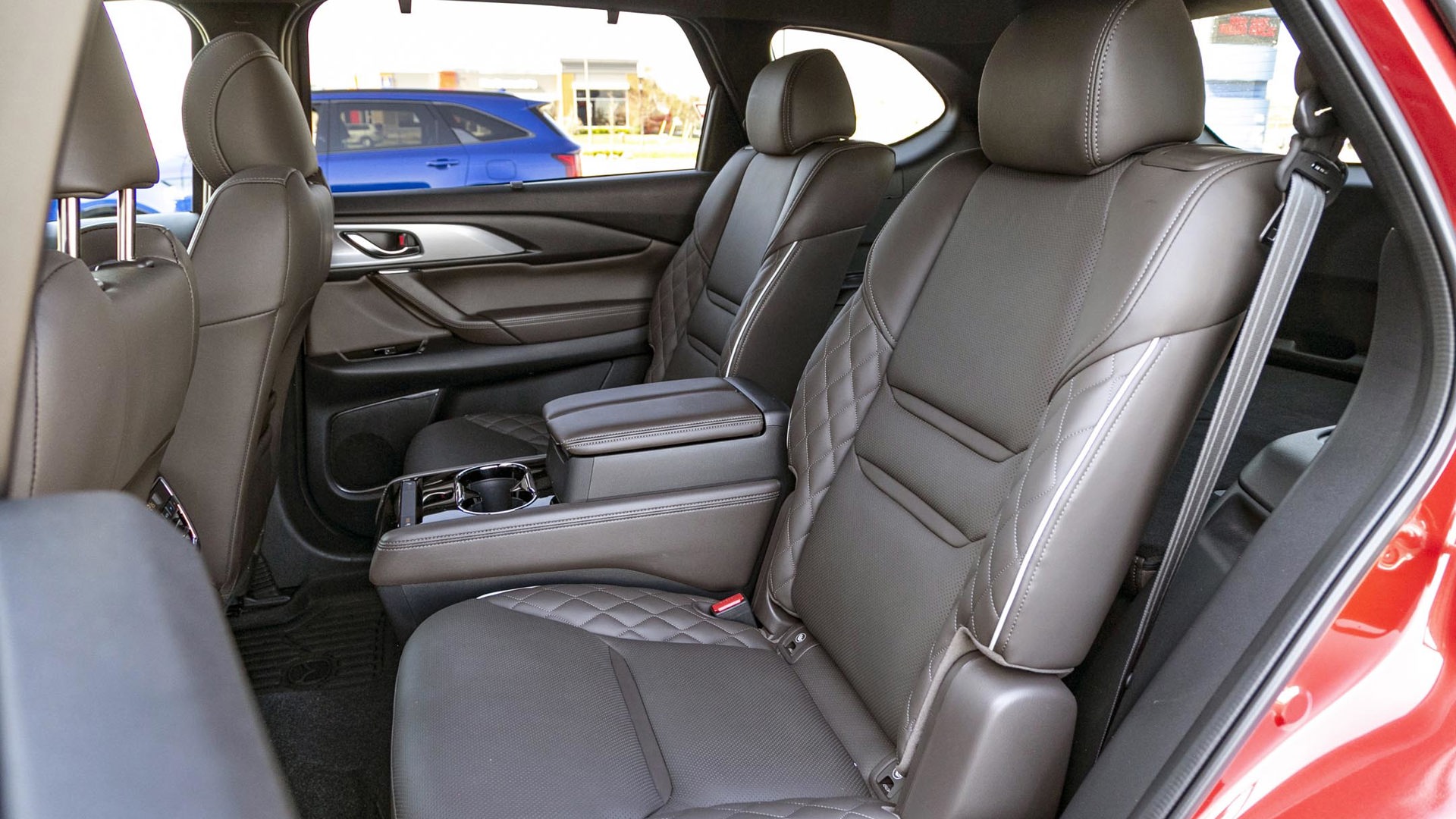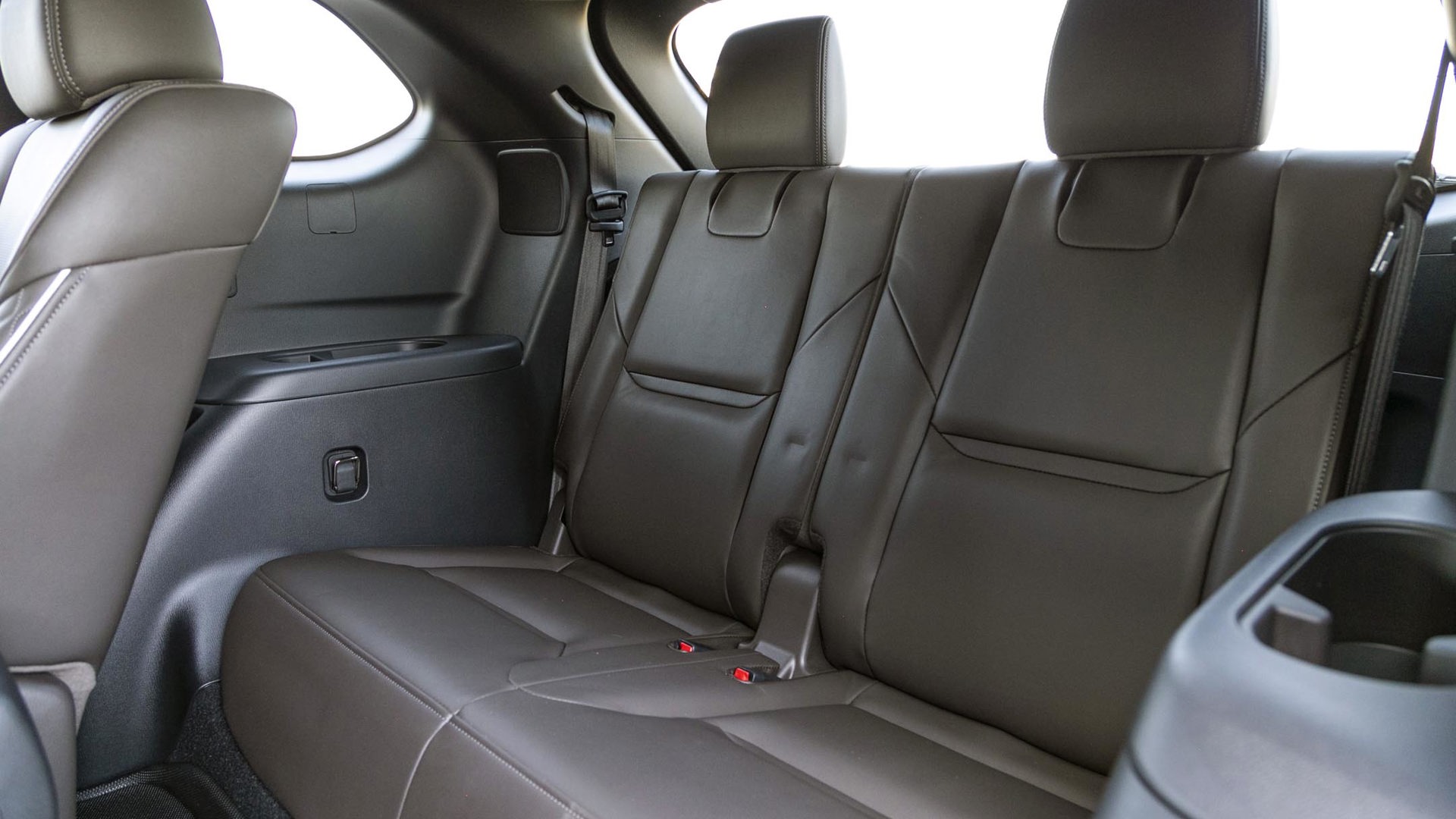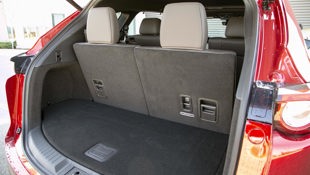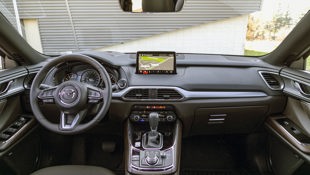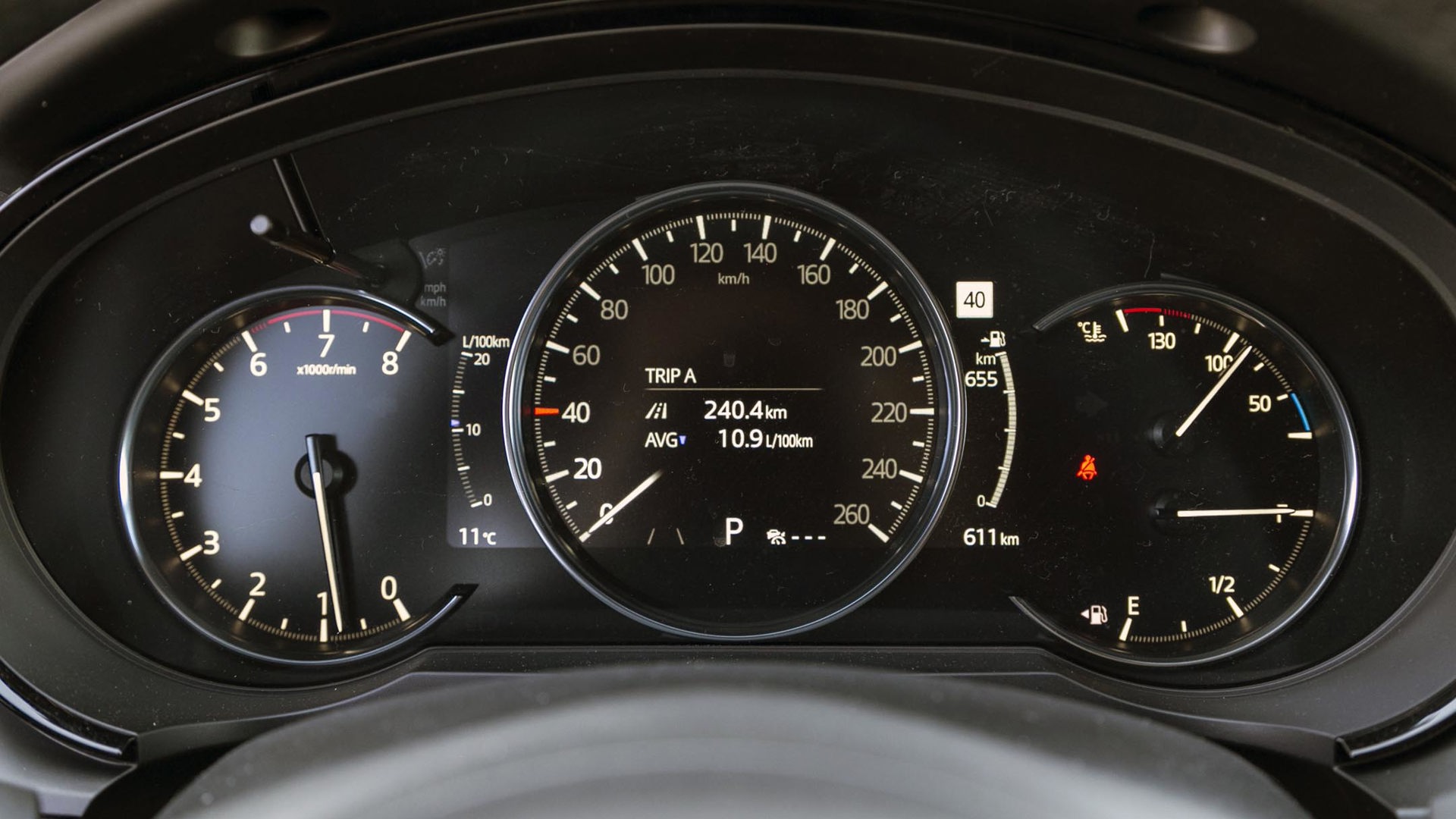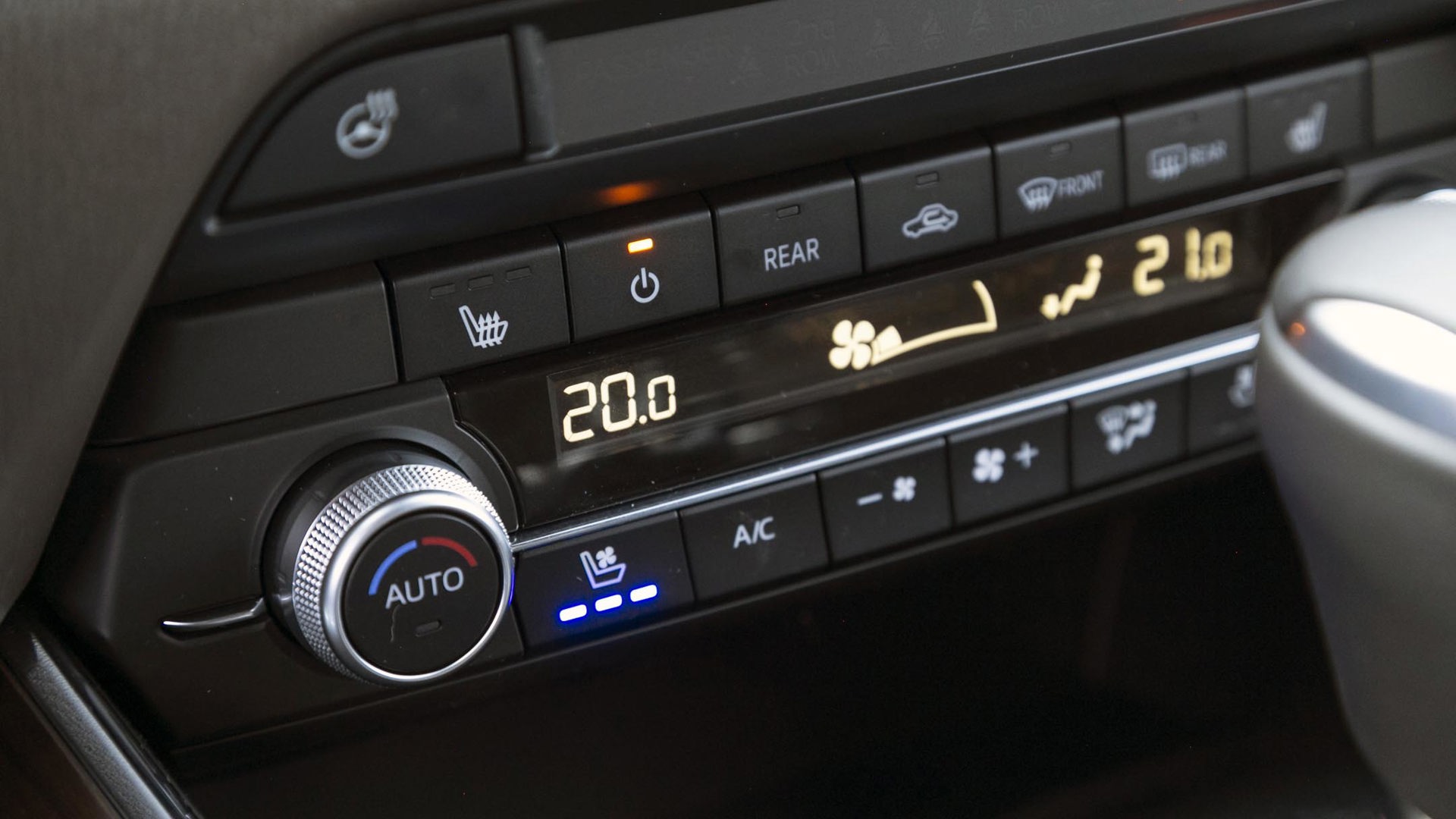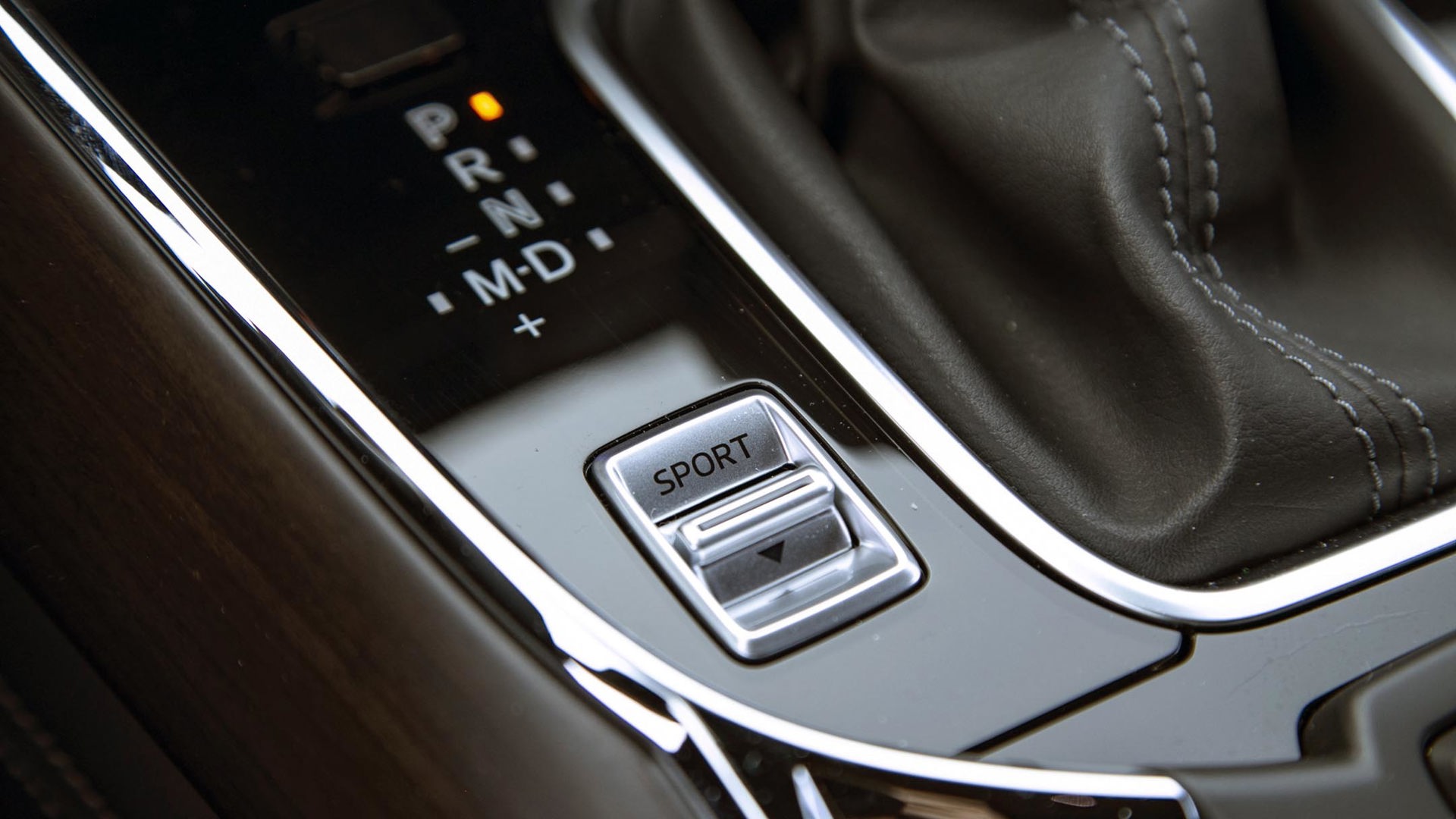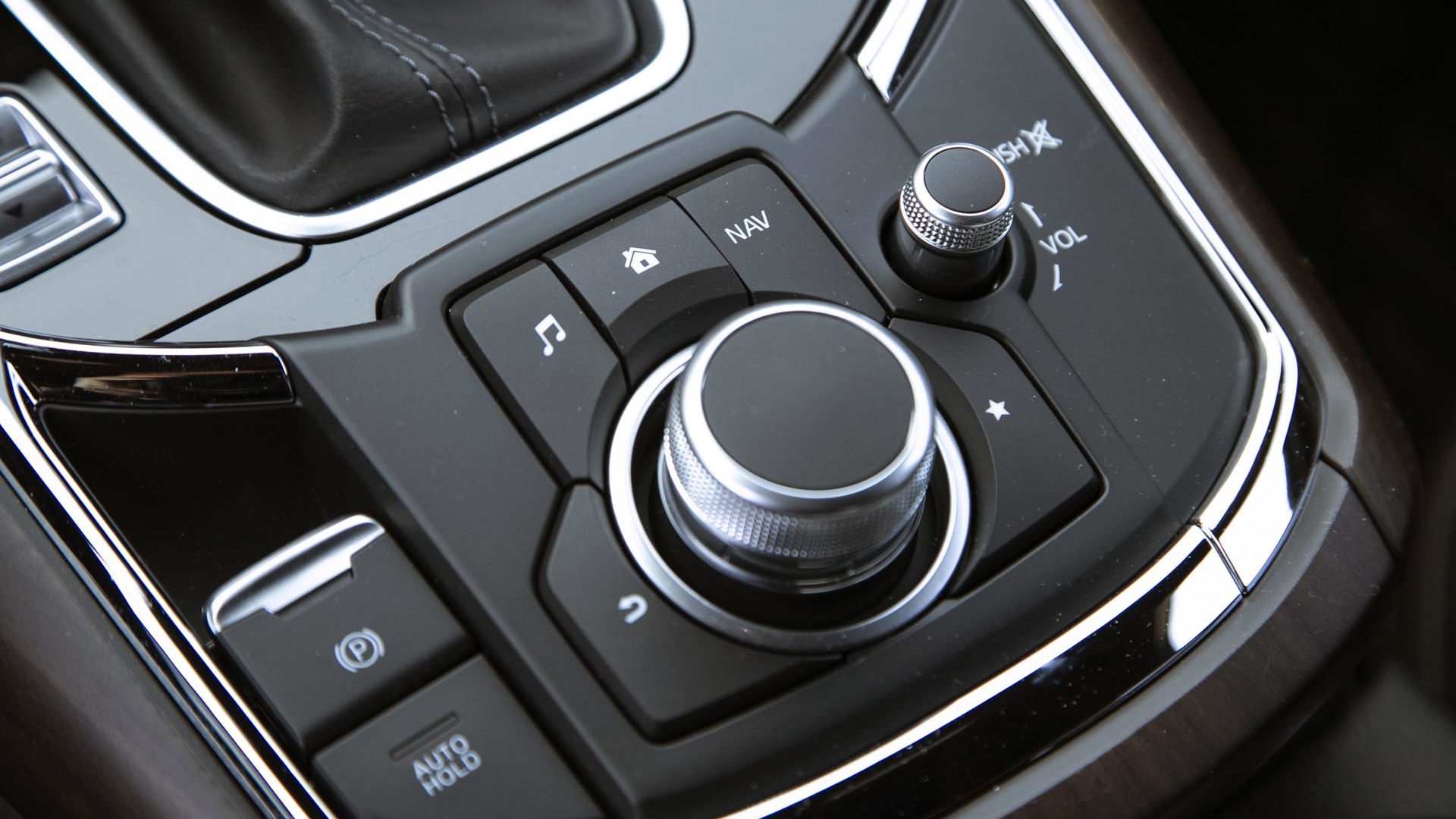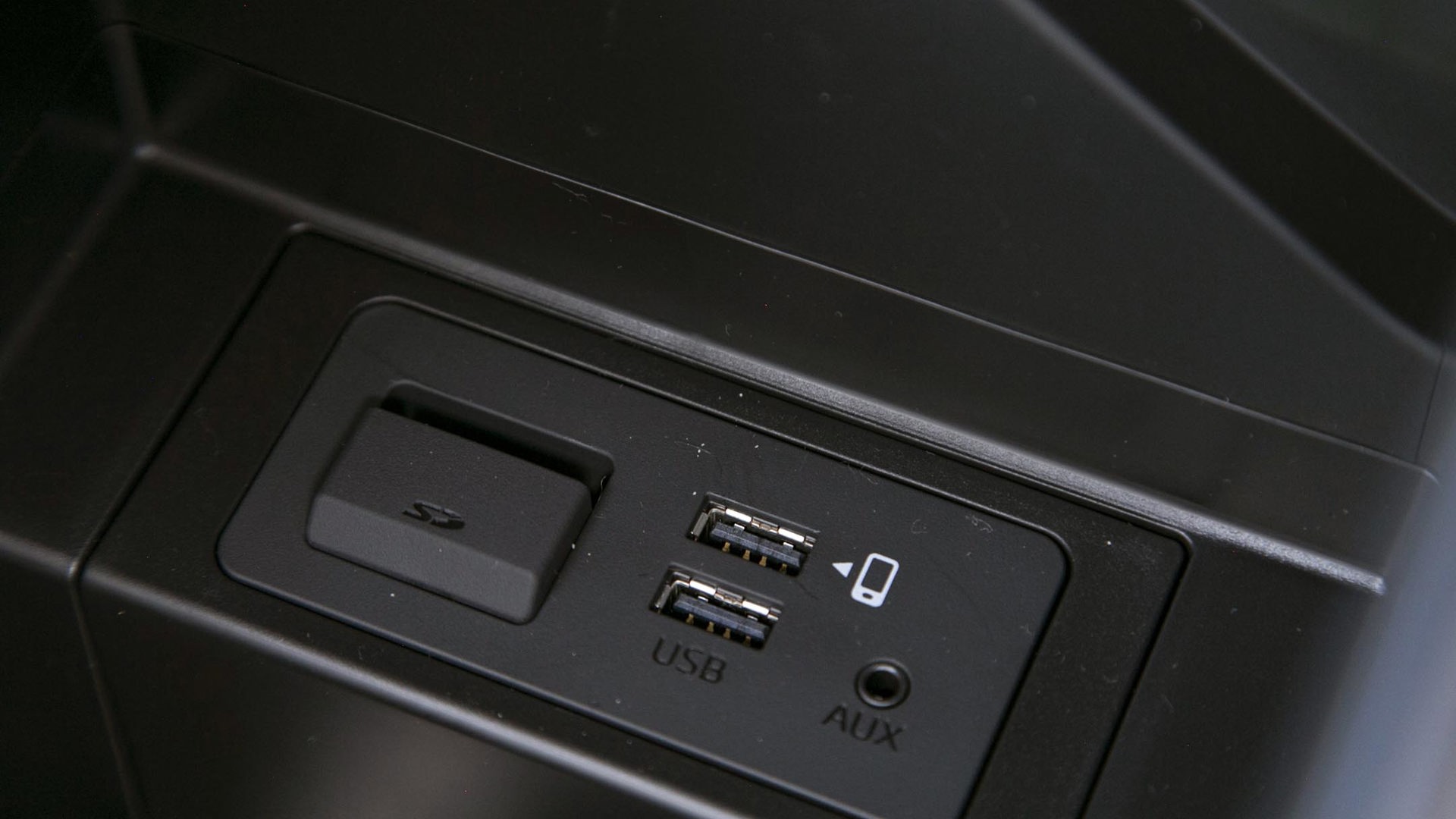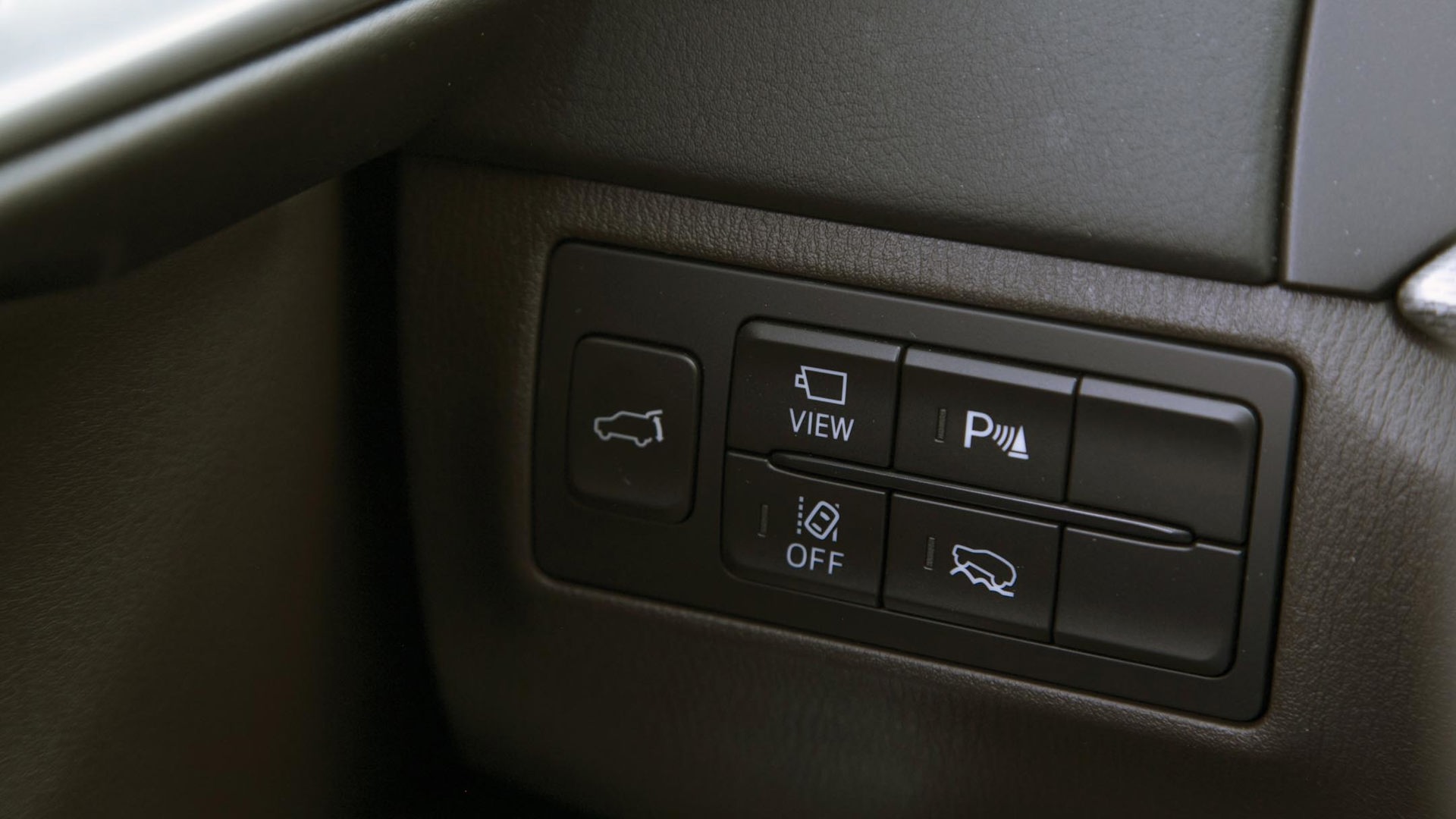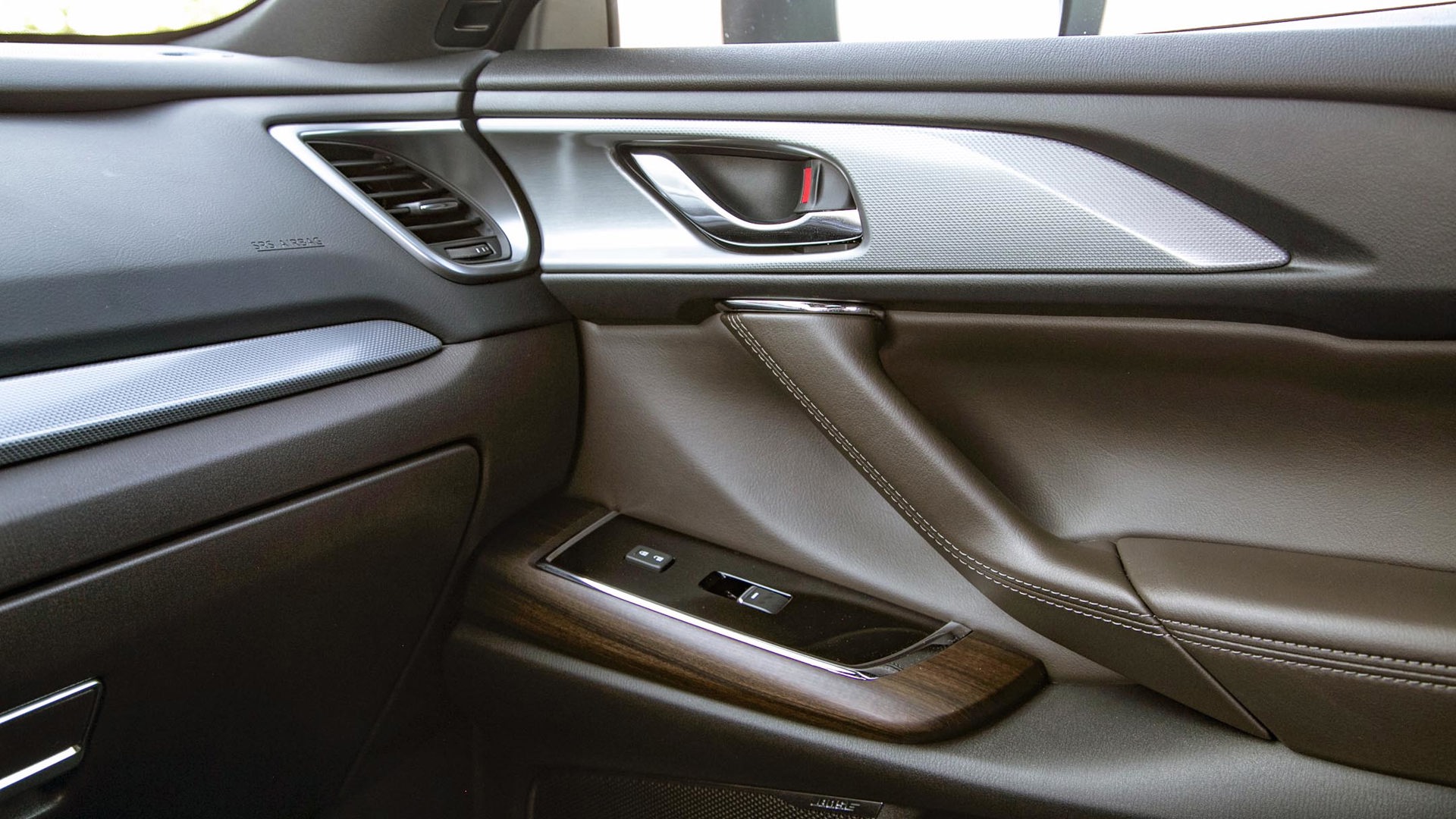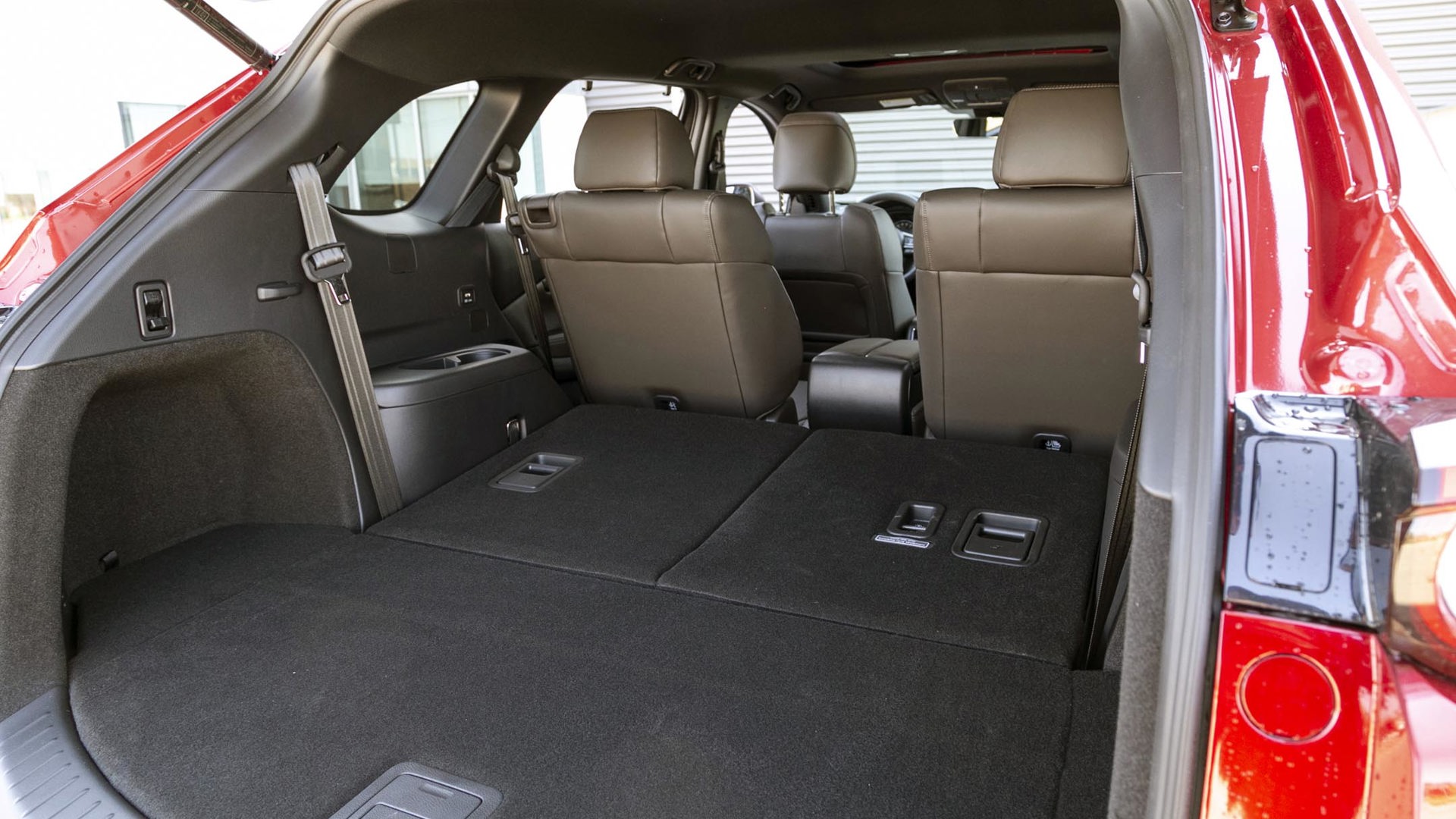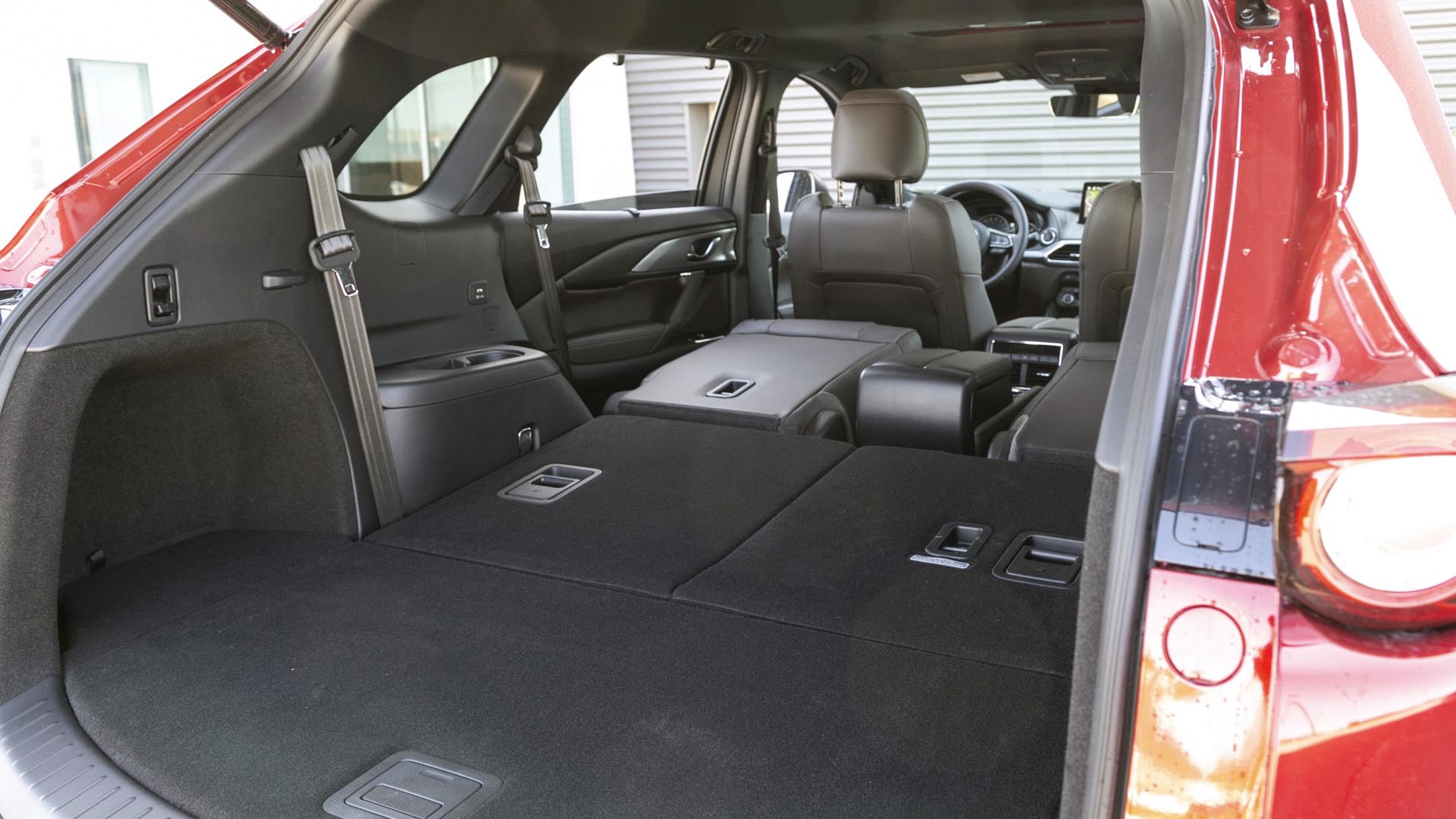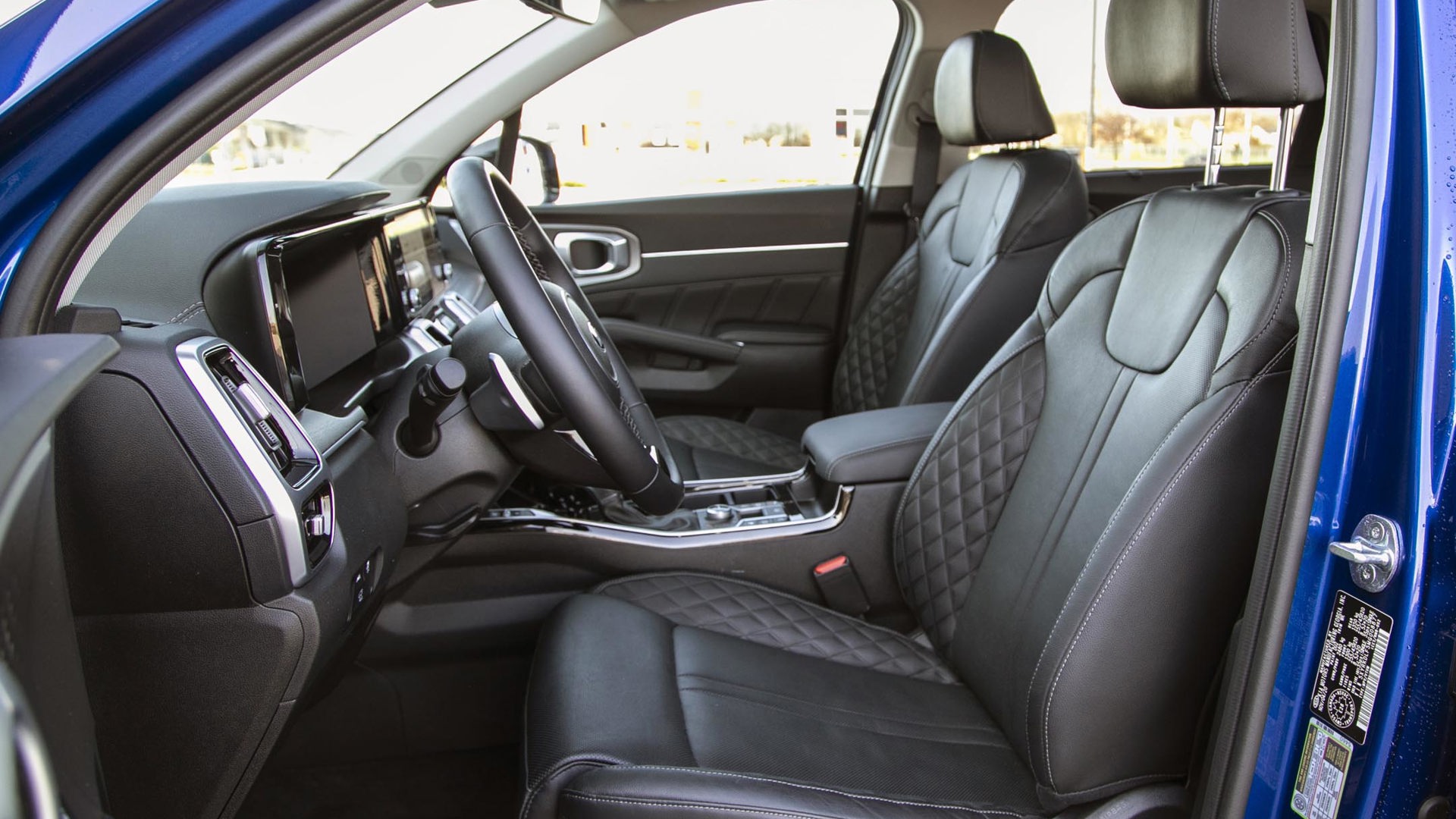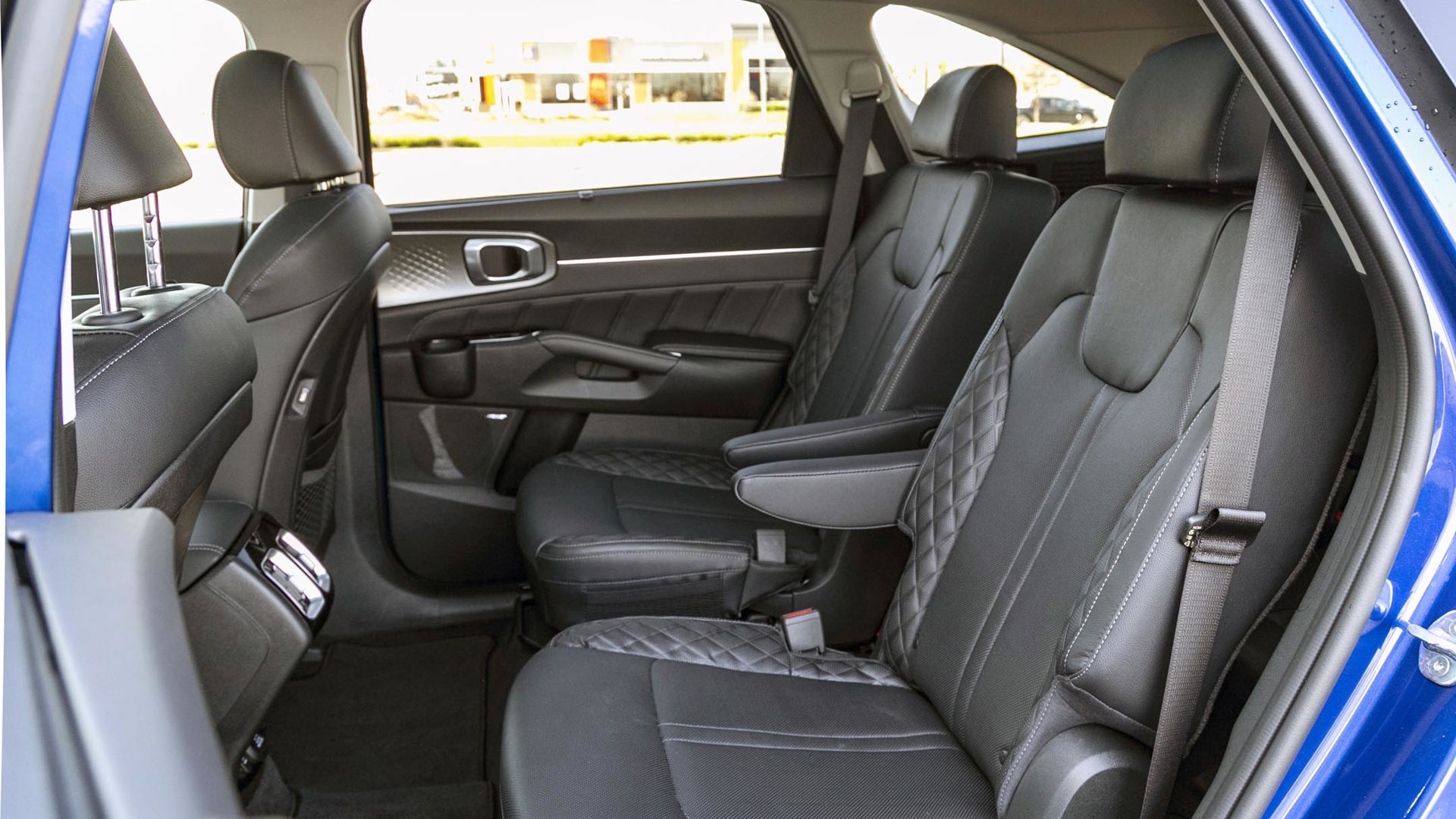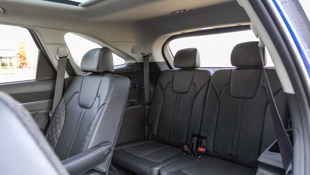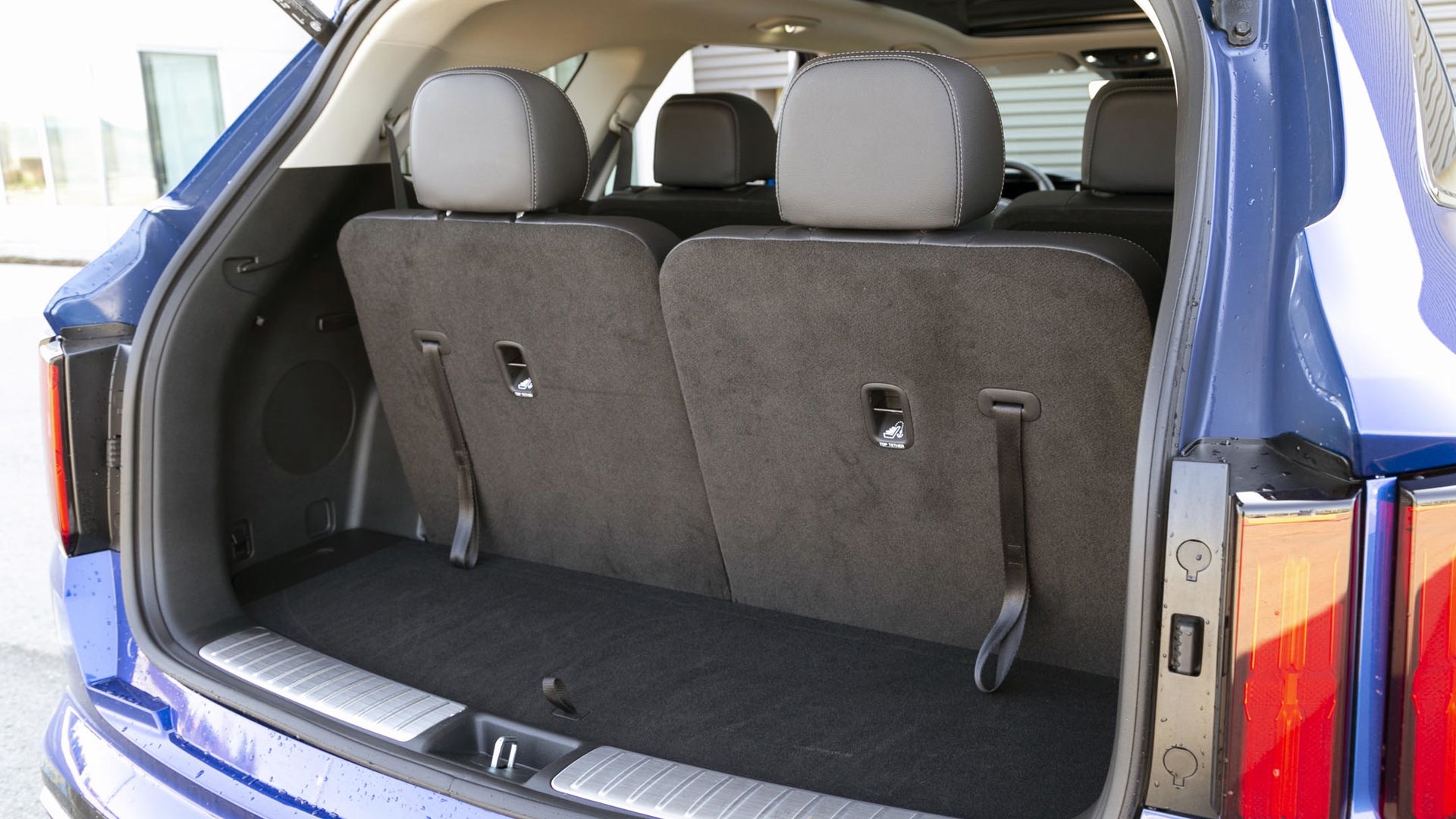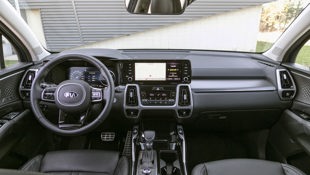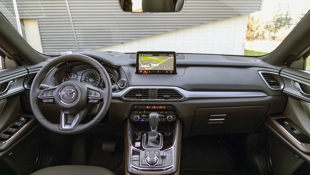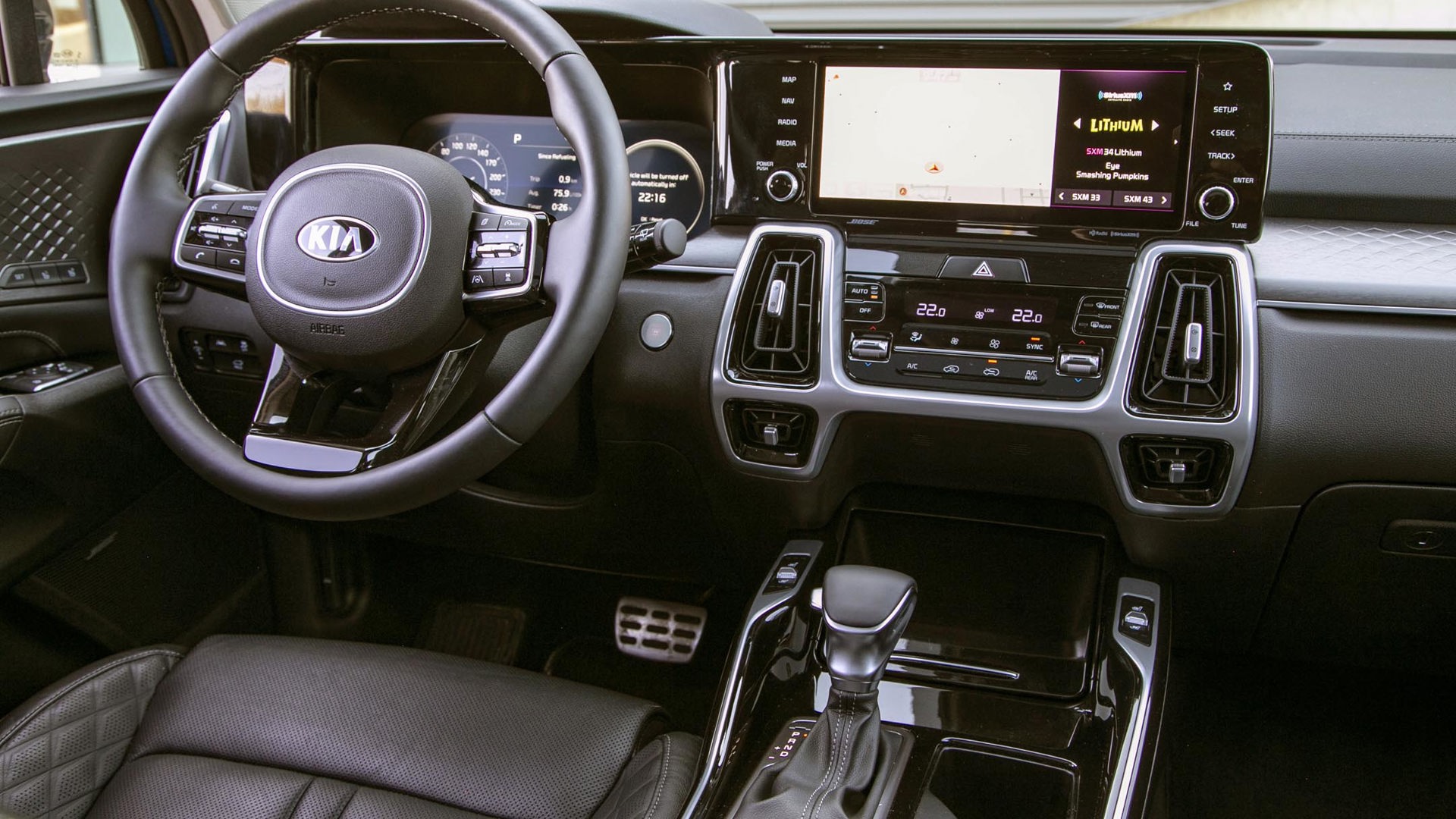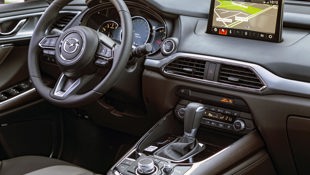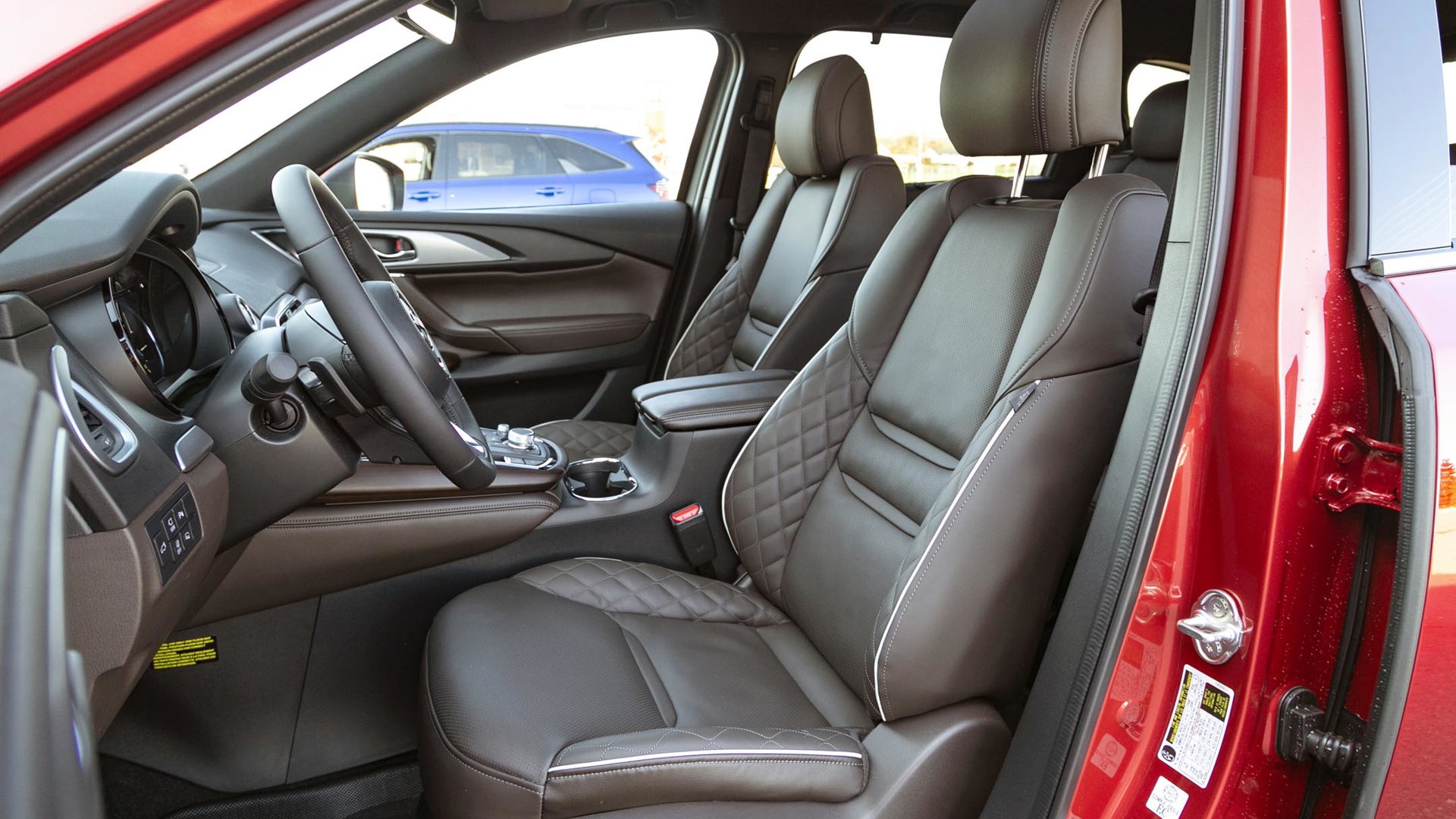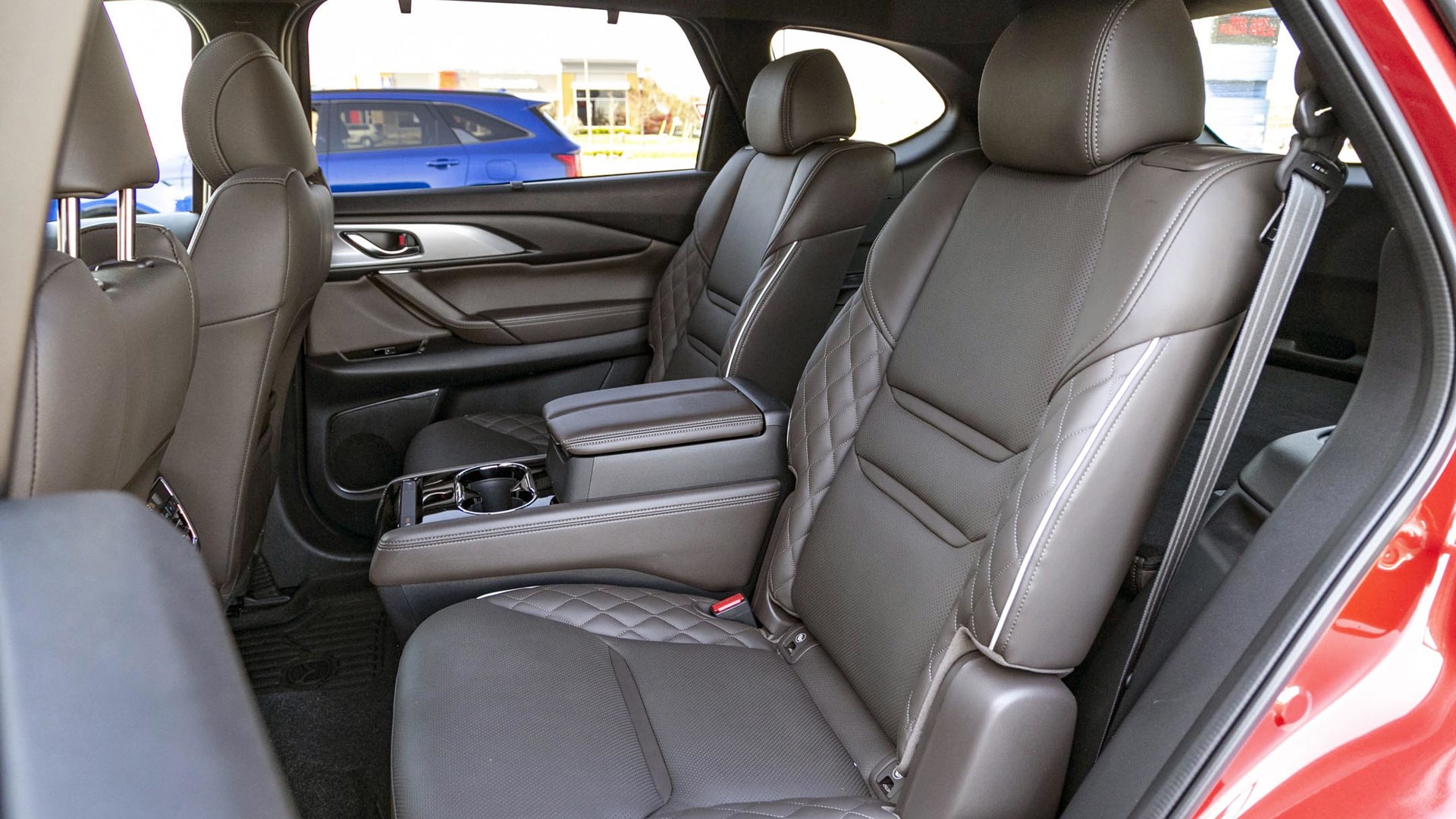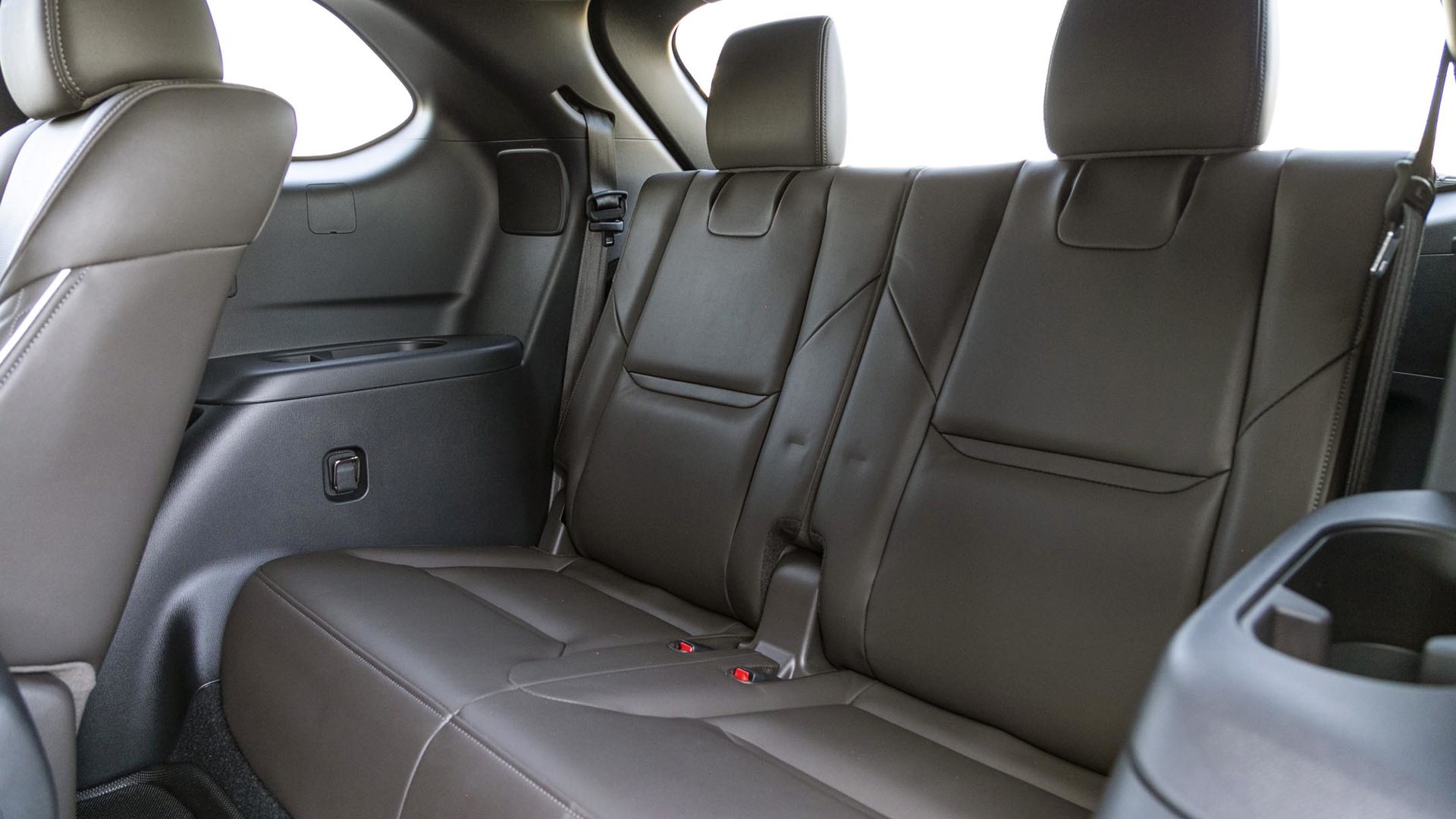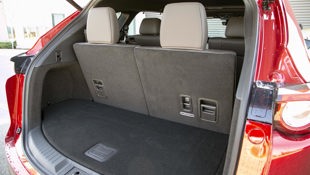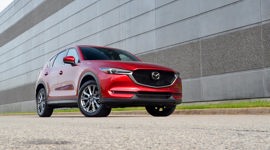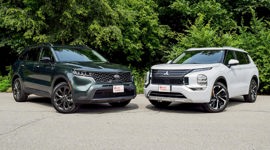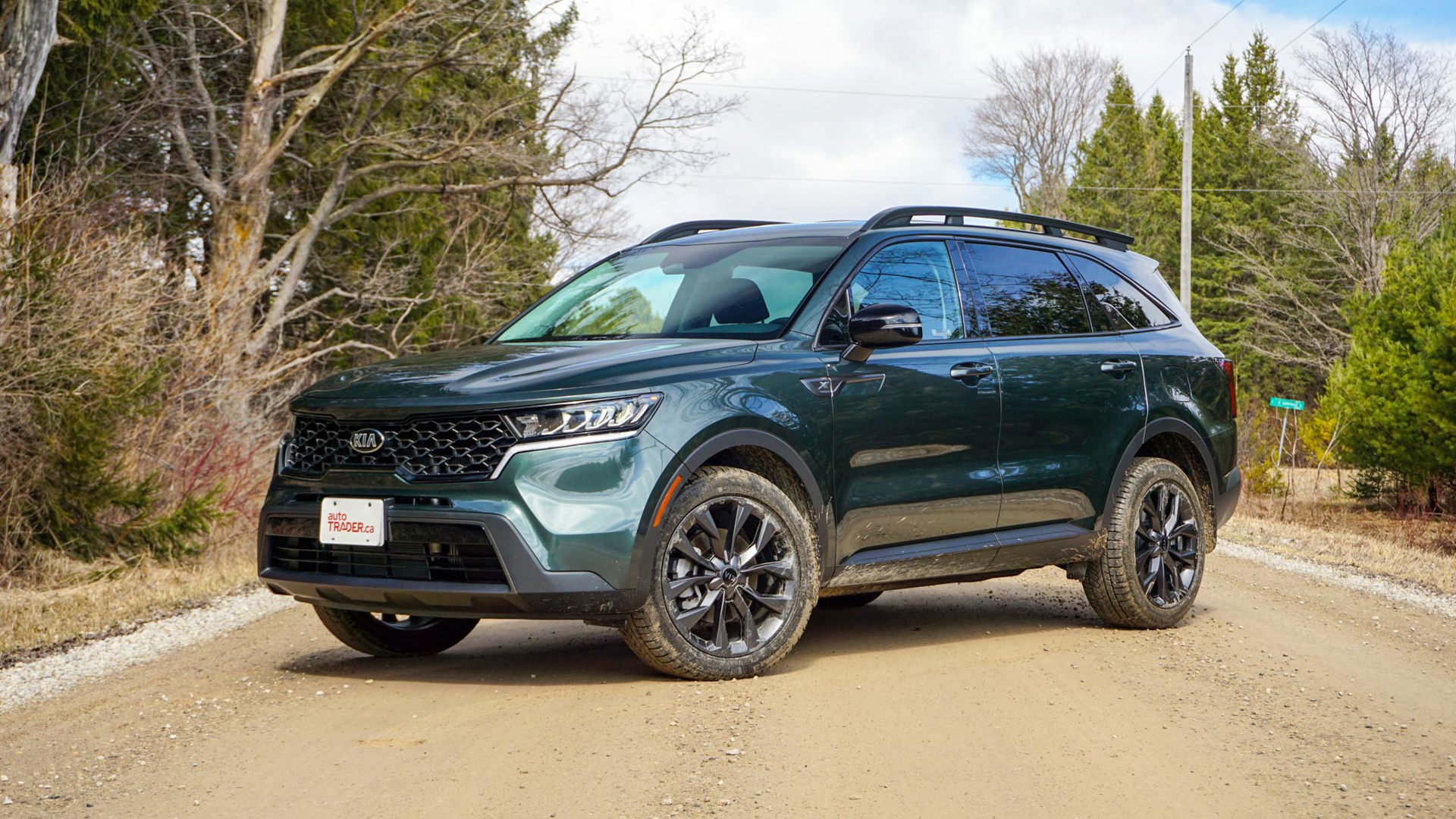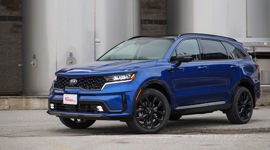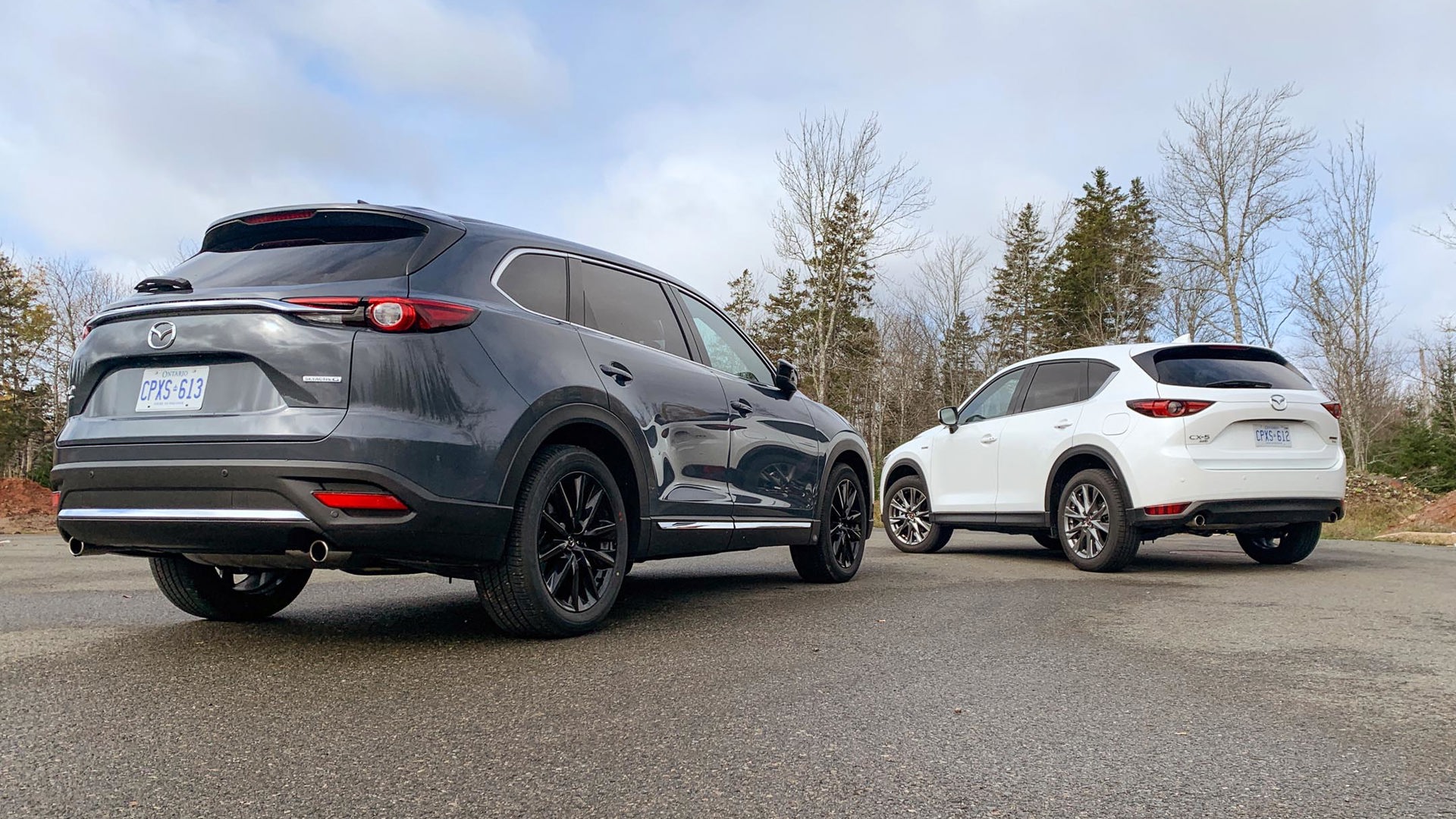Comparison Data
|
2021 Kia Sorento SX
|
2021 Mazda CX-9 Signature
|
|---|---|
|
Engine Displacement
2.5L
|
2.5L
|
|
Engine Cylinders
Turbo I4
|
Turbo I4
|
|
Peak Horsepower
281 hp
|
227 hp
|
|
Peak Torque
311 lb-ft
|
320 lb-ft
|
|
Fuel Economy
11.1 / 8.4 / 9.9 L/100 km cty/hwy/cmb
|
11.6 / 9.1 / 10.5 L/100 km cty/hwy/cmb
|
|
Cargo Space
357 / 1,090 / 2,139 L behind 3rd/2nd/1st row
|
407 /1,082 / 2,017 L behind 3rd/2nd/1st row
|
|
Base Price
$47,495
|
$51,850
|
|
A/C Tax
$100
|
$100
|
|
Destination Fee
$1,850
|
$1,950
|
|
Price as Tested
$49,695
|
$54,350
|
|
Optional Equipment
$250 – Pacific Blue paint, $250
|
$450 – Soul Red Crystal Metallic Paint, $450
|
As far as the current crop of crossovers is concerned, there truly is something for everyone.
Want an efficient little runabout? How about a bus-sized, eight-passenger behemoth? Or maybe even a fire-breathing sports machine that can embarrass most exotic cars on a race track? Check, check, and another satisfying check.
But suppose you’re after something that’s reasonably well equipped yet affordable, has room for six, and is even reasonably enjoyable to drive. Well, that’s harder to find, but these are two of the best around – the 2021 Kia Sorento and the Mazda CX-9.
Practicality
Stretching 265 mm (10.4 in) longer than the Sorento, it’d be easy to assume the CX-9 walks away in terms of practicality between these two, but that’s not the case. Equipped as they are with second-row captain’s chairs, both of these crossovers will hold six occupants, but it’s the smaller Sorento that offers more head- and legroom in the first- and second-row seats, and just a paltry two millimetres less legroom in the third row.
For cargo capacity, the Mazda offers 407 L versus the Kia’s 357 L behind the third row of seats, but once the back benches are folded it’s the Sorento that holds more. Likewise, when those captain’s chairs are flattened the Sorento offers 2,139 L compared to the CX-9’s 2,017 L.
Both of these crossovers are rated to tow 1,588 kg (3,500 lb), which is on the low end for the segment, with entries like the Hyundai Palisade and Subaru Ascent capable of pulling 2,268 kg (5,000 lb).
Sorento: 8.5/10; CX-9: 8/10
Features
The practicality scales are further tipped in the Sorento’s favour when looking at the features offered. Both manufacturers have engineered plenty of clever touches throughout to make life easier. The Mazda’s third-row seats, for instance, are easily folded down and pulled back upright with the same large grab handles. While not powered, it’s a simple and effective method.
The Sorento’s third row uses a pair of pull straps that also work well, but can be a bit more finicky to use. The Kia does, however, include a push-button folding second-row in upper trims like the one tested that can be stowed from the cargo area, eliminating a trip to the rear side doors the way the Mazda requires.
For passengers, the third row is a nicer spot in the Kia with its greater space, but also offering its own climate control and vents that are absent in the Mazda’s rearmost seats. There’s also a pair of USB ports for third-row passengers versus the Mazda’s single third-row port, and the Sorento also has handy little clips that keep the second-row seatbelts from being a hazard during entry and exit. Mazda has similar clips for the third row, but they don’t seem to actually hold the belts.
When equipped with second-row captain’s chairs, the Mazda includes a centre console with a sizable storage bin, a pair of cupholders, and the heated seat controls, but it’s a bulky affair that limits usability of that central space. [I personally like it, thank you very much. – Ed.]
Both crossovers offer retractable window screens for the rear windows, and front seats that are heated and ventilated, and both have power sunroofs, but only the Sorento’s extends back far enough to give the second-row passengers a glimpse of the sky. Premium sound systems are found in each; however, the sound quality from the Sorento’s six-speaker system is notably inferior to the 12-speaker system in the CX-9.
Sorento: 9/10; CX-9: 8/10
User Friendliness
With both of the models tested here being the top trims in their respective lineups, they feature each brand’s best effort for infotainment. The Kia’s 10.25-inch touchscreen has been implemented in several new Kia and Hyundai models, and it represents one of the most intuitive and easy-to-use systems on the market. The display is bright and crisp, and it can be configured to suit the driver’s preference, displaying both smartphone and vehicle information.
The Mazda’s nine-inch touchscreen is perched further away on the dashboard, making it harder to reach and appearing even smaller than it is. As a result, the rotary controller between the front seats is the primary mode of interacting with the system, and it’s a tedious affair – particularly with the phone-mirroring Apple CarPlay and Android Auto systems that are standard. What’s more, the screen’s resolution pales in comparison to the Kia’s, making the graphics less sharp, but also rendering the camera views drab and less useful. (Both crossovers offer top-down, 360-degree camera views to facilitate parking, as well as government-mandated back-up cameras.)
Mazda and Kia include wireless charging for smartphones with their crossovers, but curiously, the Sorento’s top trim system doesn’t include wireless CarPlay integration (it’s available in lower trim models that feature a smaller screen). The CX-9 does offer wireless connectivity, however, Canadian versions of the 2021 CX-9 don’t get the larger 10.25-inch infotainment screen found in other markets. But then that display isn’t touch-sensitive, and is worse for it.
The driver’s seat in the Sorento offers a commanding view and plenty of adjustability. The CX-9’s is also highly adjustable, but AutoTrader.ca Editor-in-Chief Jodi Lai found the A-pillars to be particularly obtrusive, significantly obstructing her view.
Sorento: 9/10; CX-9: 7/10
Comfort
While the Sorento’s more upright profile provides larger windows and a brighter cabin, the CX-9 offers a more luxurious space. The CX-9 Signature trim’s seats are finished in a superior leather than the Sorento SX’s seats, and while the shape and support of the seats themselves were deemed fairly equal in the test, the Mazda’s ride is more supple than the Kia’s.
The Mazda is also the quieter machine, with better sound insulation that reduces engine and road noise intrusion to the passenger space. What’s more, this particular Sorento exhibited a significant amount of wind noise from the driver’s door window, though it could be an anomaly of this particular car since another Sorento driven recently seemed quieter. [A Sorento X-Line tested recently suffered the same issue. – Ed.]
Passenger space and adjustability for each of the four rear seats in both of these crossovers is very good, and while both are smaller than the average three-row in this class, their rearmost seats are suitable even for occasional adult use (again, the Sorento has the slight edge here).
Sorento: 7/10; CX-9: 8/10
Driving Feel
As far as three-row crossovers are concerned, this pair represents the athletes of the group. It’s all relative, of course, and they will never be mistaken for proper performance SUVs; but compared to the usual roly-poly handling found in competitive models, these two manage body roll quite well.
It helps that neither one of these Is jacked up with false pretenses of off-road prowess, and that their squat profiles mean they’re not as tall, keeping their mass closer to terra firma.
The Sorento feels like the smaller and lighter machine, which it is, but the Mazda is more planted to the road and its comparatively more accomplished, even when travelling at speed through a series of back-road S-bends we found on our drive loop. Surprisingly, despite its slight handling advantage, the Mazda also rides better than the Kia which had a tendency to bounce around a bit on its stiffer suspension.
Sorento: 7/10; CX-9: 8/10
Styling
Despite the best intentions of designers, all too often three-row crossovers like this end up looking like pretty uninspired family buses. And it’s for that reason that this handsome pair stands out from the masses. Mazda’s entire lineup is a styling triumph, with a strong family resemblance across the board. Despite being the biggest of the bunch, the CX-9 is still sporty-looking, with a squat profile, tasteful brightwork, and the radiant Soul Red paint still counting as one of the best hues in the business.
Kia’s design team has been hitting plenty of homeruns lately, too, and the Sorento adds another tally to the scoreboard. While taller than the Mazda, the Kia’s proportions are still tidy enough to keep it from looking like a jacked-up minivan. Where the CX-9 has flowing curves, the Sorento has crisp creases.
The CX-9’s interior has a more traditional layout than the Sorento’s. The Mazda’s dashboard has sweeping lines from door to door that gives it a feel of elegance. The Sorento’s design is highly functional, but less beautiful, with a multitude of HVAC vents and discordant shapes throughout, and large plastic accent panels with cross-hatching carved into it that looks neither fancy, nor sporty.
Sorento: 7/10; CX-9: 8/10
Power
The fact that both of these crossovers are propelled by turbocharged 2.5L four-cylinders was one of the key factors in bringing them together in this test. The Mazda is rated at 250 hp and 320 lb-ft of torque. The Kia, meanwhile, makes notably more horsepower at 281 hp, while its torque is down a fraction at 311 lb-ft. But there’s a big asterisk here since the Mazda only achieves those numbers if it’s fuelled up with 93-octane, which we suspect few owners will actually do – especially as fuel prices continue to rise.
The CX-9’s six-speed automatic is a decent transmission, but it can’t keep the engine in its power sweet spot the way the Sorento’s eight-speed dual-clutch automatic can, nor can it rip off gear changes as rapidly. A dual-clutch is an unusual choice for a family wagon like this as they’re normally reserved for performance cars, but it does a good job here with smooth shifts – though it’s a bit jerky at crawl speeds.
Out on the road, the Mazda suffers a slight hesitation as it waits for its turbo to spool up, and when passing its power deficit is quite obvious. The Kia is surprisingly quick, both when pulling away from a stop, and passing, with generous power always only a slight tap of the accelerator away.
Sorento: 9/10; CX-9: 7/10
Fuel Economy
As the industry continues to downsize engines to smaller turbo units even in sizable machines like these, the benefits are usually more torque and greater efficiency than the V6s that used to be so prevalent. The trouble is that the advertised efficiency gained is usually under optimal conditions, and when driven with any sort of zeal these motors can become quite a bit thirstier.
The Sorento is rated at 8.4 L/100 km on the highway, 11.1 in the city, and 9.9 combined. The CX-9 is supposed to achieve 9.1 L/100 km on the highway, 11.6 city, and 10.5 combined, and after a week of testing, we found the two to be very close, with the Mazda netting out at 10.5 L/100 km versus the Kia’s 10.3, despite a slight skew toward more highway than city driving.
Sorento: 7/10; CX-9: 6/10
Safety
Mazda and Kia should both be commended for the safety they’ve built in to these two crossovers. At the trim levels these machines are at, the manufacturers have thrown everything they’ve got, including surround-view parking cameras and sensors, autonomous braking systems both front and rear, driver-attention alerts, blind-spot monitoring, and lane-departure intervention.
Even in its base GS trim, the CX-9 is sufficiently equipped to earn a Top Safety Pick+ rating from the Insurance Institute for Highway Safety (IIHS), whereas the basic trim for the Sorento does without the EX+ and SX trim’s superior LED headlights, relegating it to a Top Pick status – but only for models equipped with those lights. But Kia has built in a few other safety considerations like the rear-seat reminder to help prevent children or pets being forgotten in hot cars. The Sorento SX also utilizes the 12.3-inch digital gauge cluster to incorporate Kia’s blind-spot monitoring system that displays a look at either side of the vehicle when the signal is activated. At highway speeds it can be a bit of a distraction, but AutoTrader.ca’s urban-dwelling Editor-in-Chief pointed out its usefulness for keeping an eye on pedestrians or cyclists approaching from behind.
The United States National Highway Traffic Safety Administration (NHTSA) has awarded the CX-9 a full five-star rating, but has yet to test the 2021 Sorento.
Sorento: 9/10; CX-9: 9/10
Value
Mazda’s CX-9 Signature wears its lavish interior style and materials well enough to make a convincing case for itself as a premium offering and feels more expensive inside than the Kia. The Nappa leather is especially upscale, but at nearly $52,000, the Signature trim is more than $4,000 more expensive than the Sorento’s top-tier SX trim.
For those willing to forego the (mostly) aesthetic upgrades, the CX-9 GT with captain’s chairs rings in at a little more than $49,000 – much closer to the Sorento SX’s $47,495.
The Sorento’s superior infotainment system interface, panoramic sunroof, and clever smartphone app-operated remote services all add value, making the Kia’s cost savings tough to ignore. Both companies have unique warranty offerings with Kia providing a five-year, 100,000-km comprehensive warranty versus Mazda’s three-year comprehensive with unlimited mileage. Kia gives buyers five years of roadside assistance compared to Mazda’s three years as well.
Savvy shoppers may also want to consider mid-level trims of each of these models (CX-9 GS-L and Sorento EX+) that give up a few of the high-tech features, but are still well-equipped and have the top-trim drivetrains, for around $43,000.
Sorento: 9/10; CX-9: 8/10
Verdict
The functionality and practicality of these two crossovers is undeniable with their three-row seating and decent cargo space. Add in a wealth of features, legitimately handsome styling inside and out, and dimensions that make them usable within urban confines and it becomes clear to see these are both outstanding picks within the segment. In the end, the 2021 Kia Sorento simply provides an easier package to live with day-to-day than the Mazda CX-9, making it our favourite here.
